Select a theme to learn more
Select an image to learn more
Torah Binder
A Torah binder keeps the Torah closed when it is not in use. Different traditions of its form and decoration have arisen in various communities. For example, in Germanic (Ashkenazi) lands the swaddling cloth for the circumcision ceremony of a male child was used, decorated with words and images that wish him well. In Italy women embroidered floral patterns and sometimes inscriptions on a length of cloth expressing hopes and thanks for important events.
Pewter Plates
Until the nineteenth century, pewter tableware was prized by middle- and upper middle-class households, since the rarity of its main ingredient, tin, made it costly. By the mid-1800s, however, the dangers of eating from dishes made of metals like pewter, with a high lead content, were known, and mass-produced ceramic and glass wares replaced metal.
Pewter plates were sometimes acquired secondhand by Jewish artisans and householders, who added engraved imagery and inscriptions in order to make them suitable as ceremonial dishes for Passover or Purim.
Alms Containers
Giving to charity is a fundamental precept in Judaism. Containers for collecting funds, made of everything from humble tin to gleaming silver, are found in synagogues, community institutions, and homes. Like many disenfranchised peoples, Jews developed a strong tradition of mutual aid, independent of state services. Thus, the charities supported by alms included local burial societies, schools, and orphanages, as well as international groups such as the Jewish National Fund, Hadassah, and many cultural organizations.
Coins
Metal coins issued by a government began to appear in the seventh century BCE. The Jewish Museum’s collection focuses on coins of ancient Israel and the regions in the Mideast with a historically important Jewish presence. They reveal fascinating details of the relationship of Jewish communities to their conquerors and neighbors—Greece, imperial Rome, Arab nations, European Crusaders.
Coinage is not only a commercial convenience, but a political statement of national sovereignty and a vehicle for conveying propaganda. This can be amply seen in the coinage produced after the Maccabean revolt against Greek rule in the second century BCE, when the new Jewish kings minted their own coins, as well as during two unsuccessful Jewish rebellions against Rome, the First Jewish War (66–70 CE) and the Bar Kokhba Revolt (132–135 CE). The imagery on these various coins offers compact, highly symbolic messages.
Museums normally display their most important ancient coins and those of highest quality, organized in a historical context. The coins shown here, however, were selected to expose the range of examples museums may possess—coins with mint flaws, breakage, or just interesting imagery.
Games
Game pieces may have changed over the millennia, but the basic functions often remain the same. Ancient astragali, made from animal bones, were the predecessors of dice. Jewish imagery on a deck of cards illustrates attempts by Jews in Palestine in the early twentieth century to forge a unique ethnic style. Spinning tops with Hebrew letters, called dreidels, are used for a special Hanukkah game derived from German antecedents.
Pewter Plate
Until the nineteenth century, pewter tableware was prized by middle- and upper middle-class households, since the rarity of its main ingredient, tin, made it costly. By the mid-1800s, however, the dangers of eating from dishes made of metals like pewter, with a high lead content, were known, and mass-produced ceramic and glass wares replaced metal.
Pewter plates were sometimes acquired secondhand by Jewish artisans and householders, who added engraved imagery and inscriptions in order to make them suitable as ceremonial dishes for Passover or Purim.
Pewter Plates
Until the nineteenth century, pewter tableware was prized by middle- and upper middle-class households, since the rarity of its main ingredient, tin, made it costly. By the mid-1800s, however, the dangers of eating from dishes made of metals like pewter, with a high lead content, were known, and mass-produced ceramic and glass wares replaced metal.
Pewter plates were sometimes acquired secondhand by Jewish artisans and householders, who added engraved imagery and inscriptions in order to make them suitable as ceremonial dishes for Passover or Purim.
Pewter Plates
Until the nineteenth century, pewter tableware was prized by middle- and upper middle-class households, since the rarity of its main ingredient, tin, made it costly. By the mid-1800s, however, the dangers of eating from dishes made of metals like pewter, with a high lead content, were known, and mass-produced ceramic and glass wares replaced metal.
Pewter plates were sometimes acquired secondhand by Jewish artisans and householders, who added engraved imagery and inscriptions in order to make them suitable as ceremonial dishes for Passover or Purim.
Etrog Containers
The etrog, or citron, is a Mediterranean citrus fruit similar to a large lemon. Along with three other species of trees—the date palm, myrtle, and willow—it plays an important part in the fall holiday of Sukkot, which commemorates the ancient Israelites' wandering in the desert after the Exodus. During the eight days of the holiday, the etrog is protected in a special container. Many of these are themselves fruit-shaped; others are converted from secular objects such as sugar boxes.
Tools
In the early history of the Levant, tools and weapons were usually made of flint. Bronze came into use around the fifth millennium BCE, mainly for ritual objects. It was not until the second millennium BCE that bronze superseded stone for common domestic objects, an indication of increased access to ores and expertise in metallurgy. Even so, flint tools never quite died out and can still be found in certain parts of the world today.
Seals
Stamped or embossed emblems have a long history. Among other uses, they indicate property ownership, identify foods as kosher, or guarantee the authenticity of a signature in an official document. Selections presented here range from the eighth century BCE to the twentieth century.
Seals aid researchers in constructing the biography of an individual; at this museum they have been used to trace the extent of Jewish presence in countries throughout the world and the participation of Jews in local legal and economic affairs. Since ancient and medieval originals are so rare, modern casts or impressions taken from those in other collections are useful for such purposes. But seals are also tiny fragments of concrete history, and sometimes beautiful miniature designs, to be appreciated for the stories they enclose.
Ritual Knives
Knives are used in two of the most fundamental aspects of Jewish self-identification: circumcision and keeping kosher. The rite of circumcision is performed on the eighth day after a boy’s birth, using a special small knife with a two-edged blade. Such knives were usually part of larger circumcision sets containing shields, scissors, flasks, and trays.
To make meat kosher, Jewish butchers must follow religious laws, which include guidelines for the sharpness of their knives. Muslims practice a similar form of ritual slaughter to produce hallal meat.
Stones
Stone is one of the most ancient of art materials. Its great durability makes it appropriate for memorial and commemorative works.
Stamps
These variously decorated square, triangular, and lozenge-shaped wooden stamps created designs on special Purim pastries known as fluden. They were adapted by Ukrainian and Moldavian Jews from their Christian neighbors. The lettered blocks were used for block-printing textiles in Iran. The fragmentary Hebrew inscription comes from Exodus 23:25–26, describing how God would bless the people of Israel if they followed the divine word.
Work
Torah binder
Date
1711–12 (date of inscription)
Artist
Hannah Luzzato, active during the first quarter of the eighteenth century
Place Made
Italy
Medium
Silk embroidered with silk and metallic thread
Credit Line
Gift of Dr. Harry G. Friedman, F 3509
Italian Jewish women often made and dedicated their own Torah binders. The Hebrew inscription here reads: “The precepts of the Lord are right, rejoicing the heart; the commandment of the Lord is pure, enlightening the eyes,” from Psalm 19:9, followed by “Donation of the honorable Hannah, wife of Barukh Luzzato [may he be p[rotected] a[nd preserved], year [5]472 [=1711–12].”

Work
Passover plate
Date
c. 1750–60
Artist
Bourchier and Richard Cleeve, English, flourished c. 1750–1760
Place Made
London
Medium
Engraved pewter
Credit Line
Gift of Dr. Harry G. Friedman, F 2004
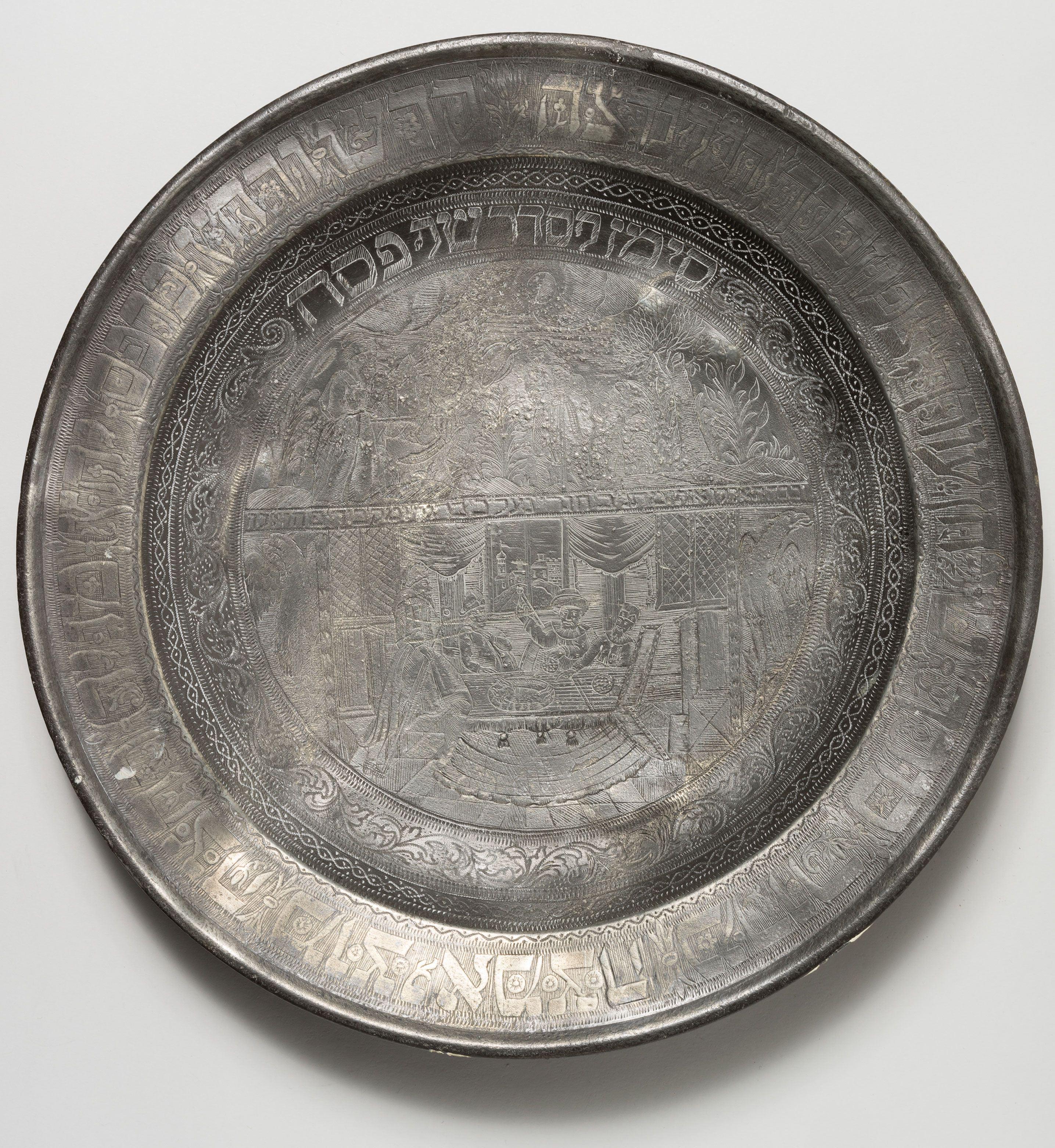
Work
Plate depicting a Jerusalem synagogue
Date
1804–5
Artist
Unknown
Place Made
Bohemia (now the Czech Republic) or Germany
Medium
Engraved pewter
Credit Line
The H. Ephraim and Mordecai Benguiat Family Collection, S 149
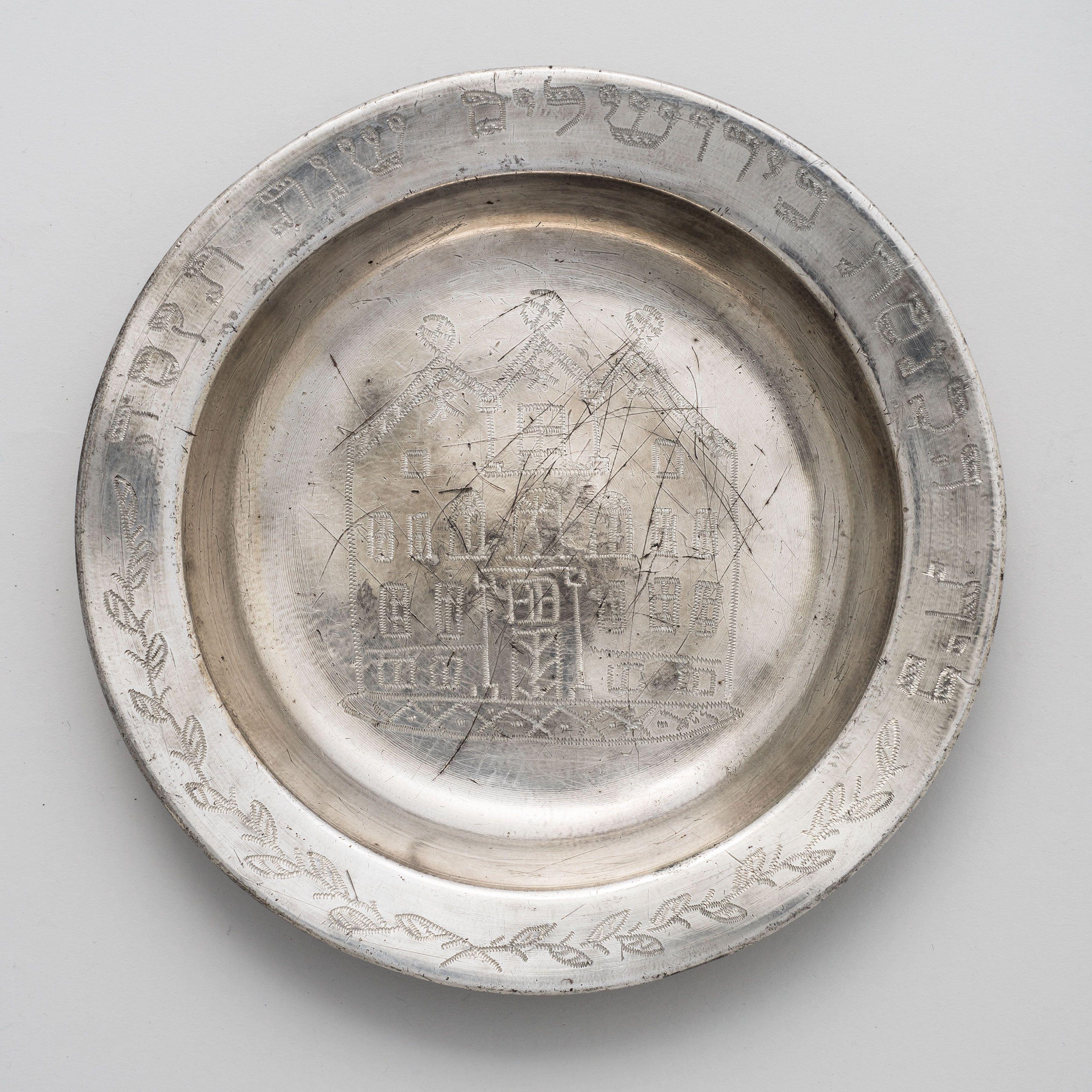
Work
Alms container for the Sages of Lublin
Date
1934
Artist
Unknown
Place Made
Warsaw
Medium
Enamel on tin, twine, and lead
Credit Line
Gift of Rose B. Mintz, S 1284.1

Work
Alms container for the Jewish National Fund
Date
1980s
Artist
Unknown
Place Made
United States
Medium
Enamel on tin
Credit Line
Gift of Vivian B. Mann, 1990-42
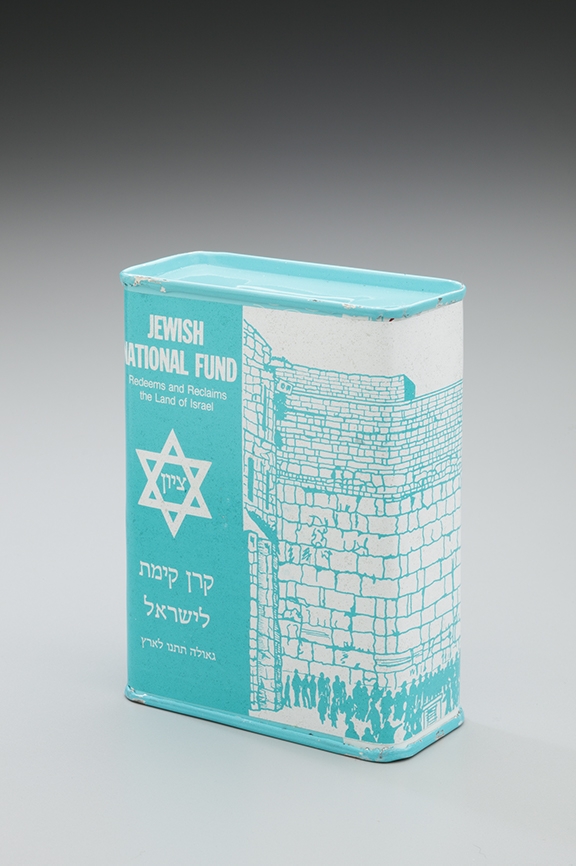
Work
Alms container
Date
Early twentieth century
Artist
Unknown
Place Made
United States?
Medium
Silver-plated and engraved copper alloy
Credit Line
Gift of Daniel W. Sharkey, 1987-92a-b
This alms container was found by a diver in New York’s East River near 96th Street. The hole punched in the bottom suggests that it may have been stolen for the money it contained and thrown into the river after it was emptied. The lid is too large for it and may have come from a second container that met the same fate.

Work
Alms container
Date
1790
Artist
Unknown
Place Made
Germany?
Medium
Engraved copper alloy
Credit Line
U 7353

Work
Alms container for an orphanage school in Jerusalem
Date
Probably late nineteenth or early twentieth century
Artist
Unknown
Place Made
Europe or Jerusalem
Medium
Engraved brass
Credit Line
Gift of Dr. Harry G. Friedman, F 4305

Work
Alms container for a Youth Welfare Society
Date
1855
Artist
Unknown, stamped with the maker’s initials J M
Place Made
Vienna
Medium
Repoussé, engraved, and cast silver
Credit Line
Gift of Dr. Harry G. Friedman, F 2400

Work
Alms container for visiting the sick
Date
Early nineteenth century
Artist
Szulem
Place Made
Austrian Empire
Medium
Silver appliqué and repoussé, chased, parcel-gilt, punched, and pierced silver
Credit Line
Gift of Dr. Harry G. Friedman, F 2351
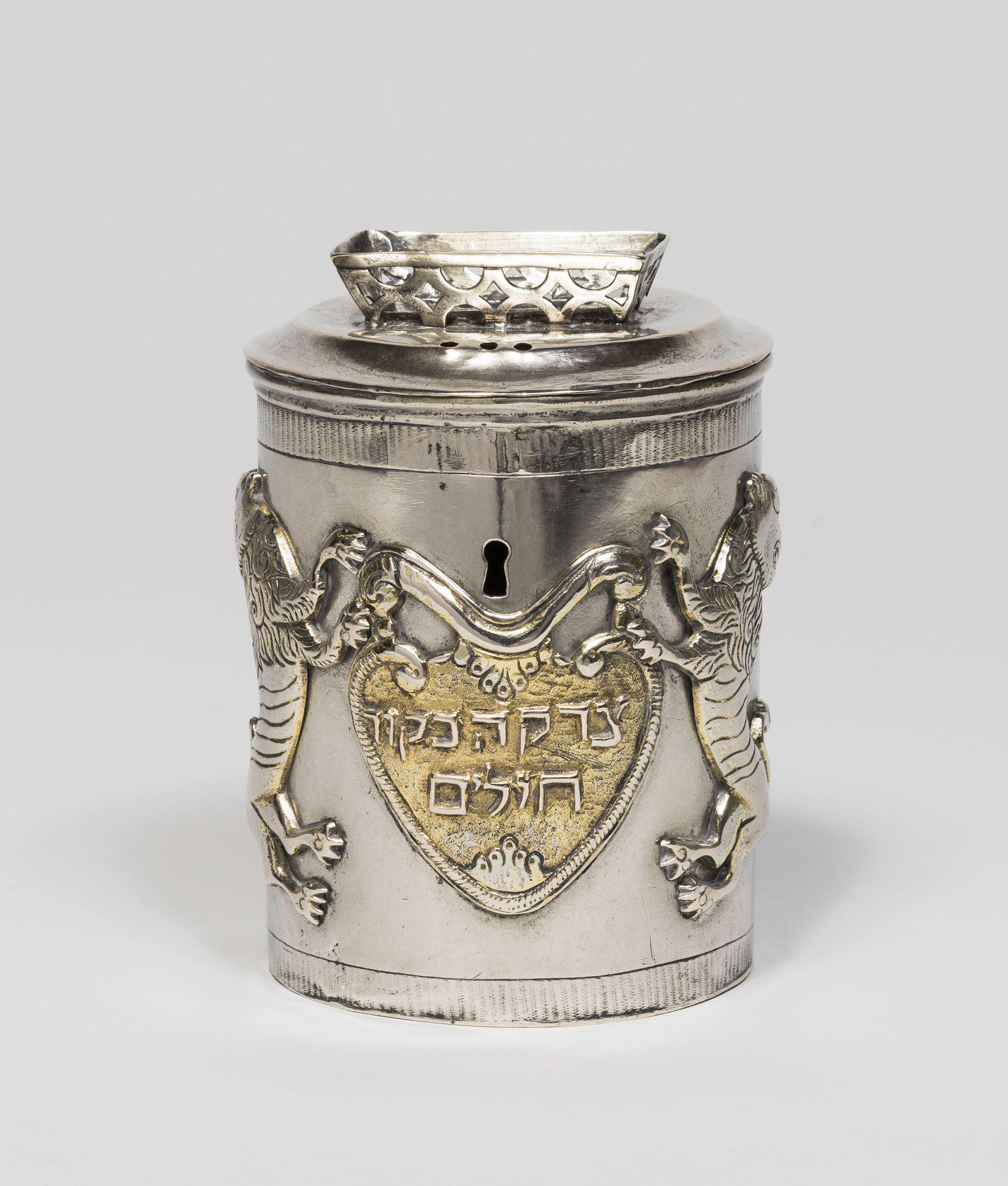
Work
Alms container for the Burial Society of Keszthely, Hungary
Date
Probably between 1872 and 1900
Artist
Unknown, stamped with the maker’s initials K H
Place Made
Vienna?
Medium
Engraved, traced, and cast silver
Credit Line
Gift of Dr. Harry G. Friedman, F 4283

Work
Alms container
Date
1859–60
Artist
Unknown, stamped with the maker’s initials C W
Place Made
Eperjes, Hungary (now Prešov, Slovakia)
Medium
Engraved and cast silver and paint on wood
Credit Line
Gift of Dr. Harry G. Friedman, F 3792
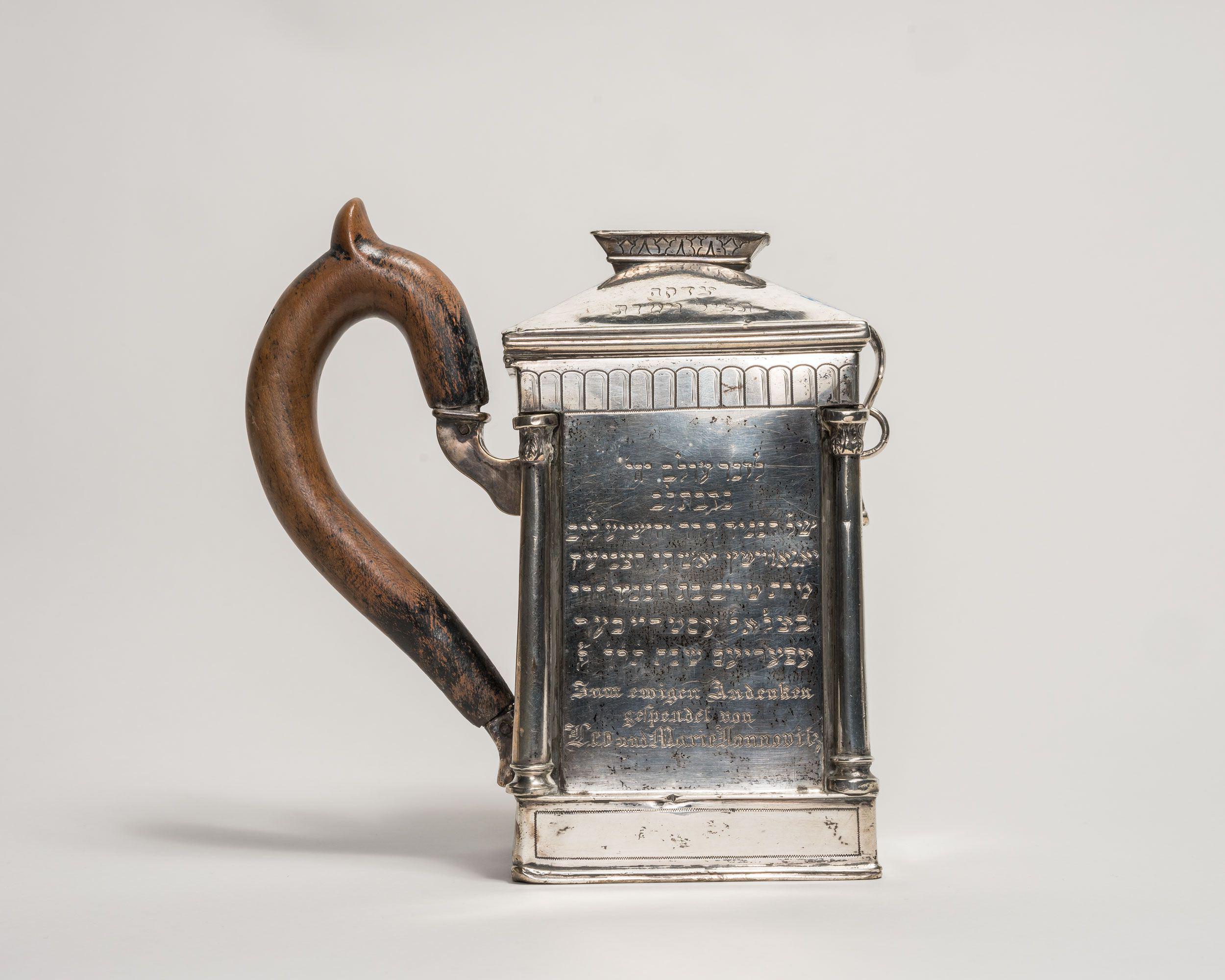
Work
Alms container for the Jewish National Fund
Date
c. 1910
Artist
Leopold Fleischhacker, German, born in 1882, died in 1946
Place Made
Designed: Düsseldorf; manufactured by Homann-Werke, founded in Vohwinkel, Germany, 1902, closed after 1955
Medium
Die-stamped, engraved, and embossed copper alloy
Credit Line
Gift of Thamar Luksenberg, 1994-66

Work
Alms container
Date
1764
Artist
Friedrich Wilhelm Sponholtz, nationality unknown, birth and death dates unknown
Place Made
Danzig (now Gdańsk, Poland)
Medium
Engraved silver
Credit Line
Gift of the Danzig Jewish Community, D 221

Work
Eight prutot of King Herod the Great
Date
37 BCE
Place Made
Jerusalem
Medium
Bronze
Credit Line
Gift of the Samuel Friedenberg Collection, FBS 244
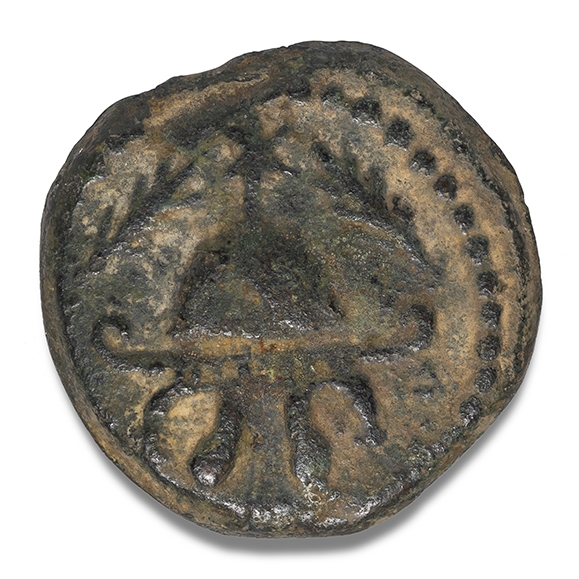
Work
Tetradachm of Emperor Trajan
Date
103–109 CE
Place Made
Antioch (now Antakya, Turkey)
Medium
Silver
Credit Line
Gift of the Samuel Friedenberg Collection, FBS 284

Work
Coin of Marathus
Date
187–186 BCE
Place Made
Marathus (now in Syria)
Medium
Bronze
Credit Line
Gift of the Samuel Friedenberg Collection, FBS 283
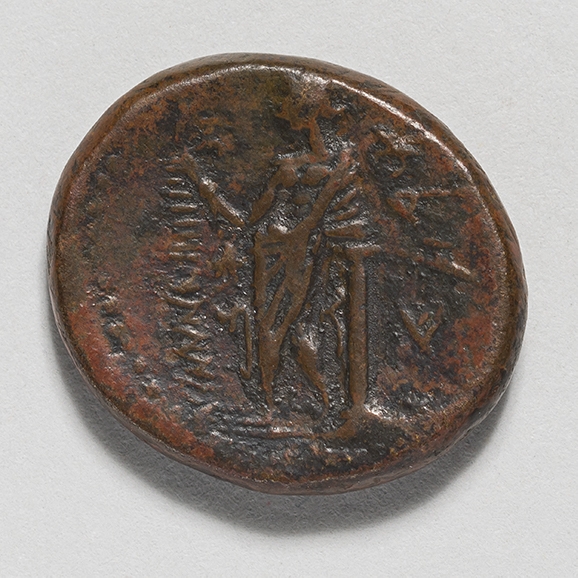
Work
Denarius of Emperor Vespasian
Date
72 CE
Place Made
Caesarea (now Kayseri, Turkey)
Medium
Silver
Credit Line
Gift of the Samuel Friedenberg Collection, FBS 181

Work
Coin of Emperor Gordian III
Date
238–244 CE
Place Made
Berytus (now Beirut, Lebanon)
Medium
Bronze
Credit Line
Gift of the Samuel Friedenberg Collection, FBS 287

Work
Coin of Procurator Coponius
Date
6 CE
Place Made
Jerusalem
Medium
Bronze
Credit Line
Gift of the Samuel Friedenberg Collection, FBS 141
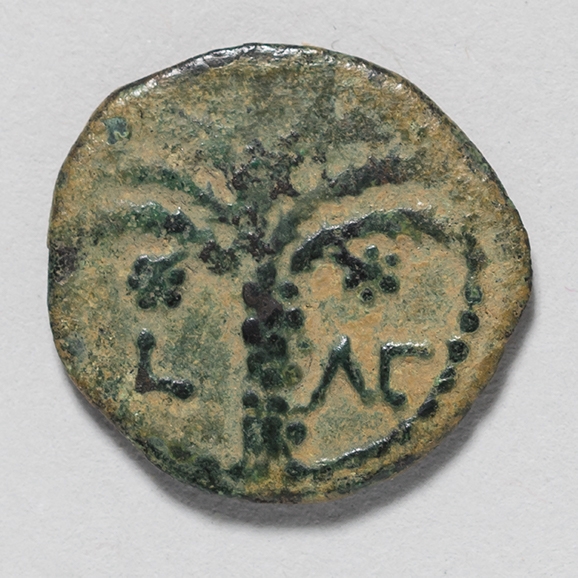
Work
Coin of Emperors Marcus Aurelius and Lucius Verus
Date
c. 165 CE
Place Made
Aelia Capitolina (now Jerusalem)
Medium
Bronze
Credit Line
Gift of the Samuel Friedenberg Collection, FBS 189

Work
Prutah of Procurator Valerius Gratus
Date
17 CE
Place Made
Jerusalem
Medium
Bronze
Credit Line
Gift of the Samuel Friedenberg Collection, FBS 149
Procurator was the title given to the governors of the Roman province of Judaea, appointed by Rome. Procurators issued coins with the names of the Roman emperors they served, rather than their own. The symbols they chose were considerate of Jewish sensibilities—they did not include portraits of emperors, but rather designs of Jewish character, such as the produce of the land.
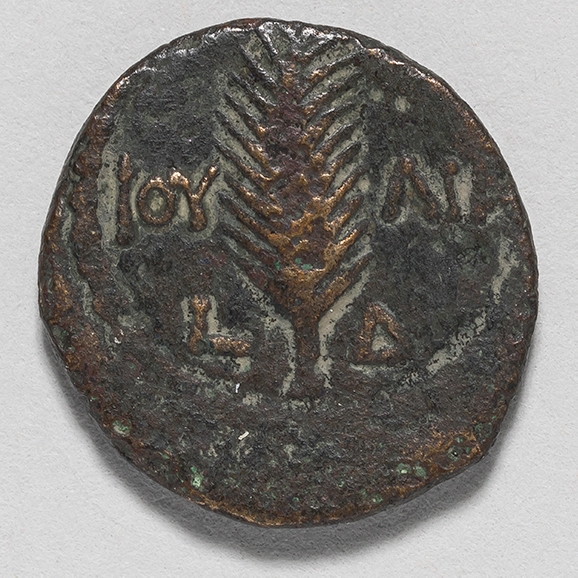
Work
Prutah of Procurator Marcus Ambibulus
Date
9–12 CE
Place Made
Jerusalem
Medium
Bronze
Credit Line
Gift of the Samuel Friedenberg Collection, FBS 172
Procurator was the title given to the governors of the Roman province of Judaea, appointed by Rome. Procurators issued coins with the names of the Roman emperors they served, rather than their own. The symbols they chose were considerate of Jewish sensibilities—they did not include portraits of emperors, but rather designs of Jewish character, such as the produce of the land.
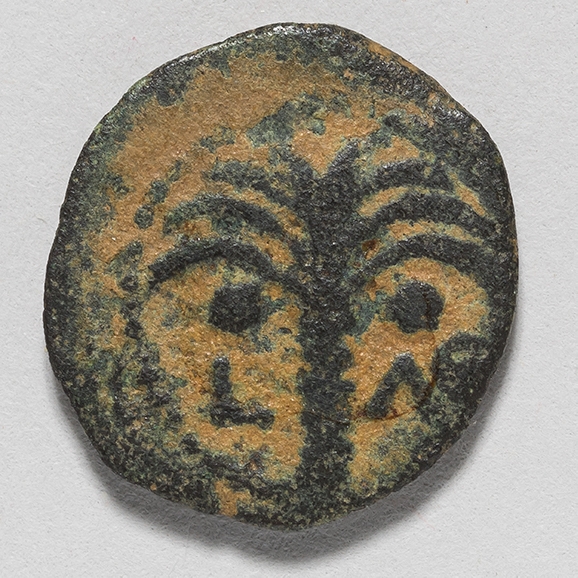
Work
Prutah of King Agrippa I
Date
42–43 CE
Place Made
Jerusalem
Medium
Bronze
Credit Line
Gift of the Samuel Friedenberg Collection, FBS 136
Agrippa I, also called Herod Agrippa (11 BCE–44 CE), was grandson of Herod the Great. He was appointed king of Judaea by Emperor Gaius Caligula and became a beloved ruler.
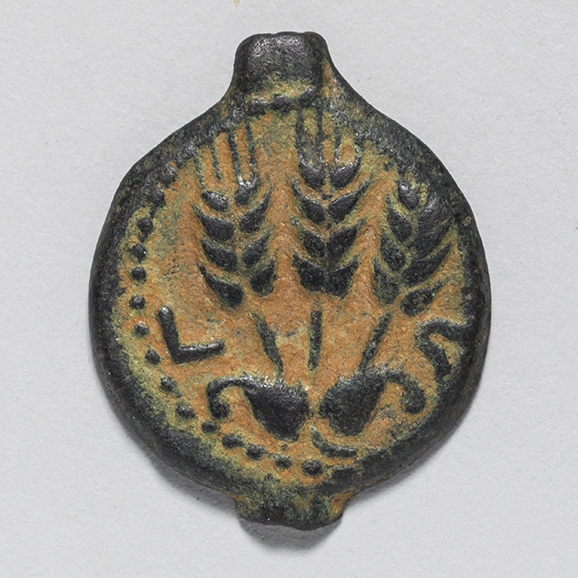
Work
Prutah of King Herod Archelaus
Date
Between 4 BCE and 6 CE
Place Made
Roman province of Judaea
Medium
Bronze
Credit Line
Gift of the Samuel Friedenberg Collection, FBS 126
Herod Archelaus, one of the three sons of Herod the Great, was ruler of Judaea in the first years of the Common Era.
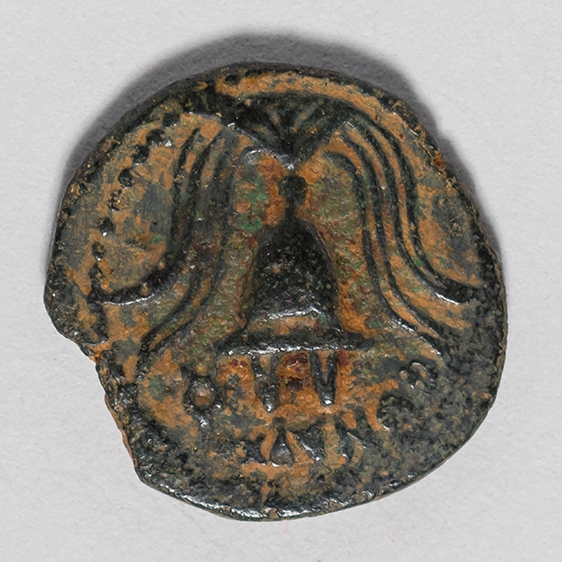
Work
Prutah of Ethnarch John Hyrcanus I (Yohanan)
Date
135–104 BCE
Place Made
Jerusalem
Medium
Bronze
Credit Line
Gift of the Samuel Friedenberg Collection, FBS 194
John (or Yehohanan) Hyrcanus I was the high priest and ruler of Judaea in the second century BCE. He was a member of the Hasmonean dynasty that liberated the Jews of ancient Israel from Greek Seleucid rule. The coin depicts a double cornucopia; between the horns is a pomegranate, one of the “first fruits” brought to the Temple as offerings.
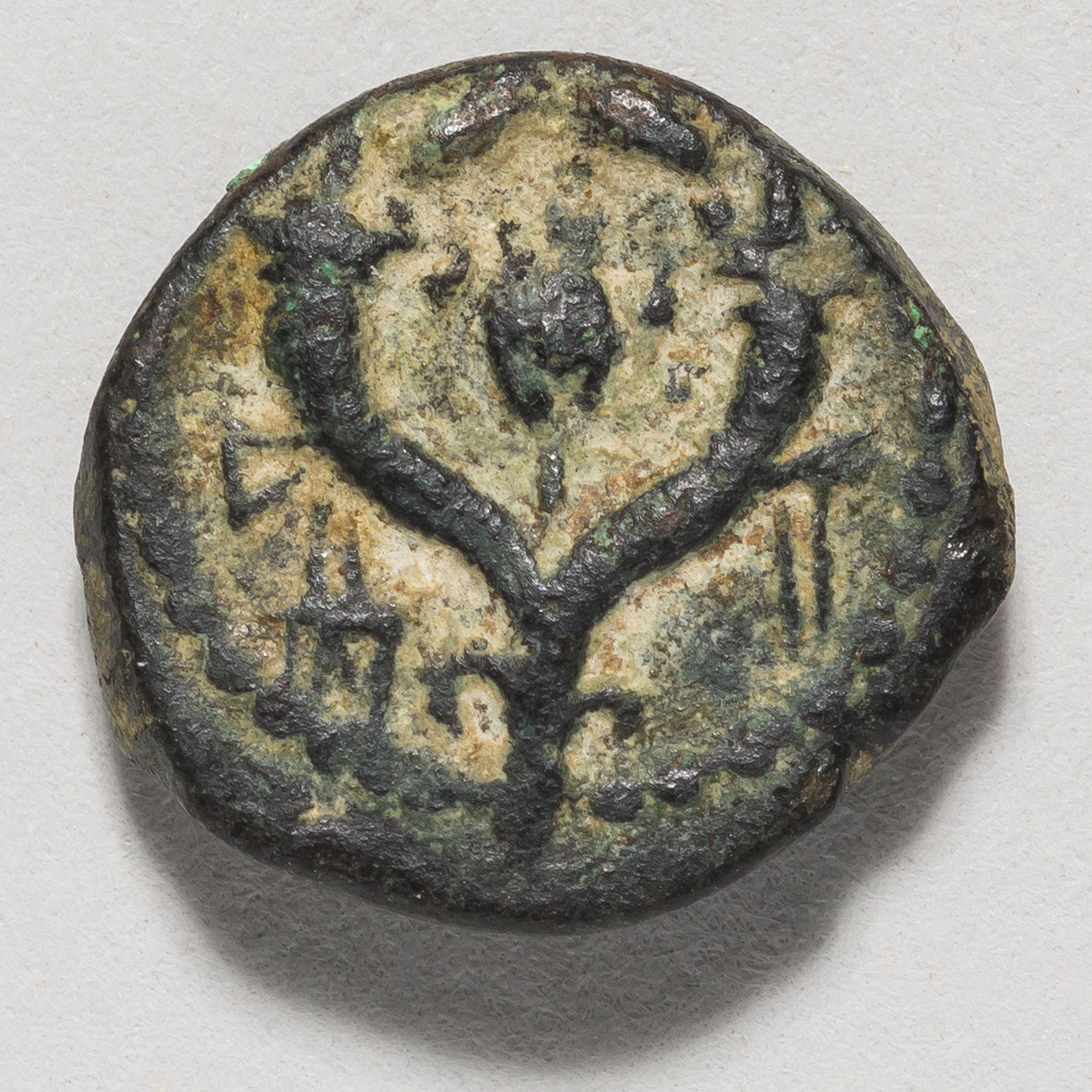
Work
Coin of the Bar Kokhba Revolt
Date
134–135 CE
Place Made
Roman province of Judaea
Medium
Bronze
Credit Line
Gift of the Samuel Friedenberg Collection, FBS 82
During the Second Jewish War for independence from Rome, led by Simon bar Kokhba, Jews minted coins as a way to declare independence. The revolt was unsuccessful.
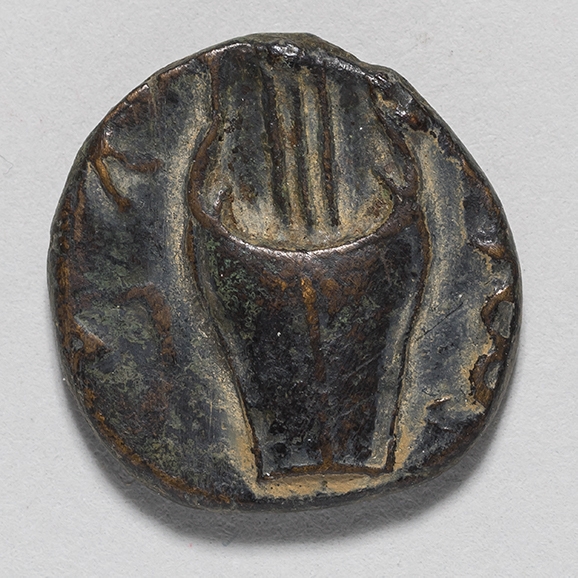
Work
Tetradrachm of King Antiochus IV Epiphanes
Date
167 BCE
Place Made
Antioch (now Antakya, Turkey)
Medium
Silver
Credit Line
Gift of the Samuel Friedenberg Collection, FBS 220
The Jewish Hasmonean family, which included Judah Maccabee, revolted against the repressive King Antiochus IV, freeing the Jews from the rule of the Seleucid Empire.

Work
Zuz of the Bar Kokhba Revolt
Date
134–135 CE
Place Made
Roman province of Judaea
Medium
Silver
Credit Line
Gift of the Samuel Friedenberg Collection, FBS 86
During the Second Jewish War for independence from Rome, led by Simon bar Kokhba, Jews minted coins as a way to declare independence. The revolt was unsuccessful.

Work
Coin of Emperor Augustus
Date
5 BCE
Place Made
Antioch (now Antakya, Turkey)
Medium
Bronze
Credit Line
Gift of the Samuel Friedenberg Collection, FBS 191

Work
Denarius of Emperor Vespasian
Date
75 CE
Place Made
Rome
Medium
Silver
Credit Line
Gift of the Samuel Friedenberg Collection, X1983-89
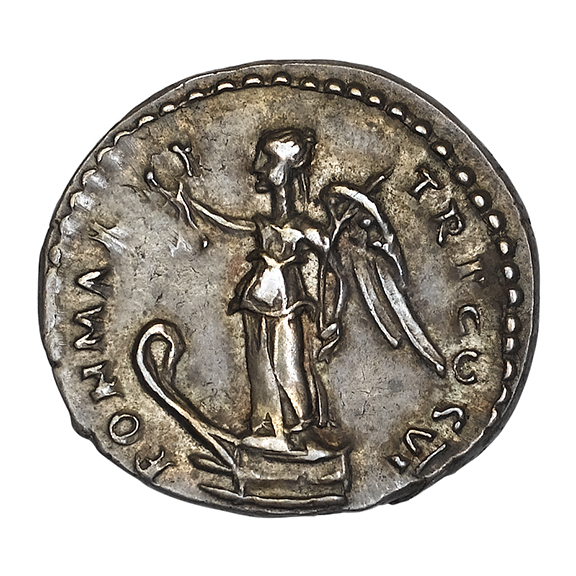
Work
Coin of Tarsus
Date
Second century CE
Place Made
Tarsus (now in Turkey)
Medium
Bronze
Credit Line
Gift of the Samuel Friedenberg Collection, FBS 251

Work
Coin of Chrysorrhoas
Date
81–96 CE
Place Made
Lucas on the Chrysorrhoas (now in Syria)
Medium
Bronze
Credit Line
Gift of the Samuel Friedenberg Collection, FBS 252

Work
Sela of the Bar Kokhba Revolt
Date
134–135 CE
Place Made
Roman province of Judaea
Medium
Silver
Credit Line
Gift of the Samuel Friedenberg Collection, FBS 88?
Simon bar Kokhba’s rebellion in Judaea was the last of three Jewish wars for independence from Greece and Rome. In all three, Jewish leaders minted coins as a way to symbolize independence.
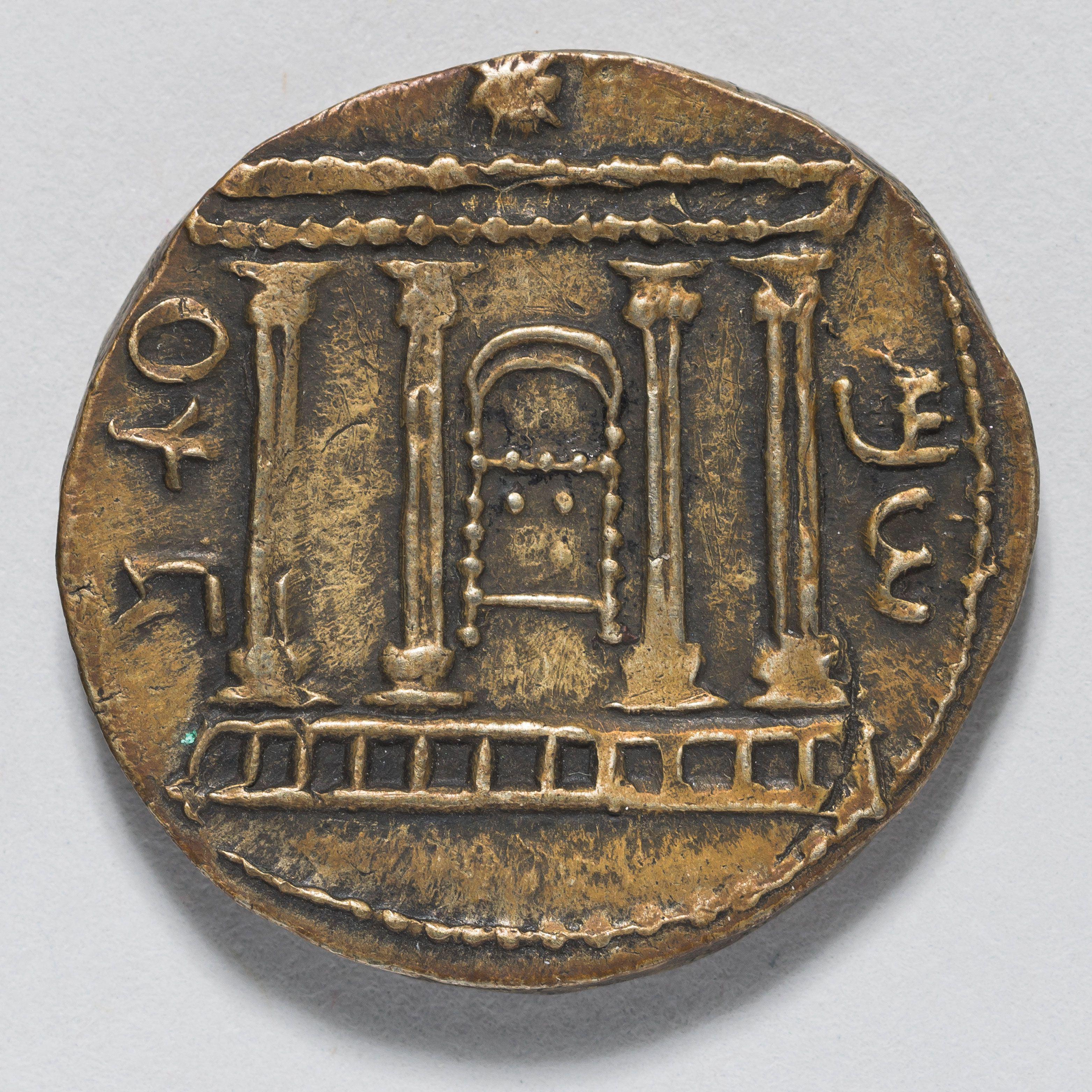
Work
Solidus of Emperor Maurice Tiberius
Date
c. 595 CE
Place Made
Constantinople (now Istanbul)
Medium
Gold
Credit Line
Gift of the Samuel Friedenberg Collection, JM 163-79
This gold solidus of the Emperor Maurice Tiberius (582–602 CE), ruler of Judea, is a fine example of the Byzantine style. The ruler is seen face front rather than in profile; he wears a plumed helmet with a jeweled diadem and holds in his right hand the globus cruciger, an orb surmounted by a cross.

Work
Prutah of Procurator Porcius Festus
Date
59 CE
Place Made
Roman province of Judaea
Medium
Bronze
Credit Line
Gift of the Samuel Friedenberg Collection, FBS 259
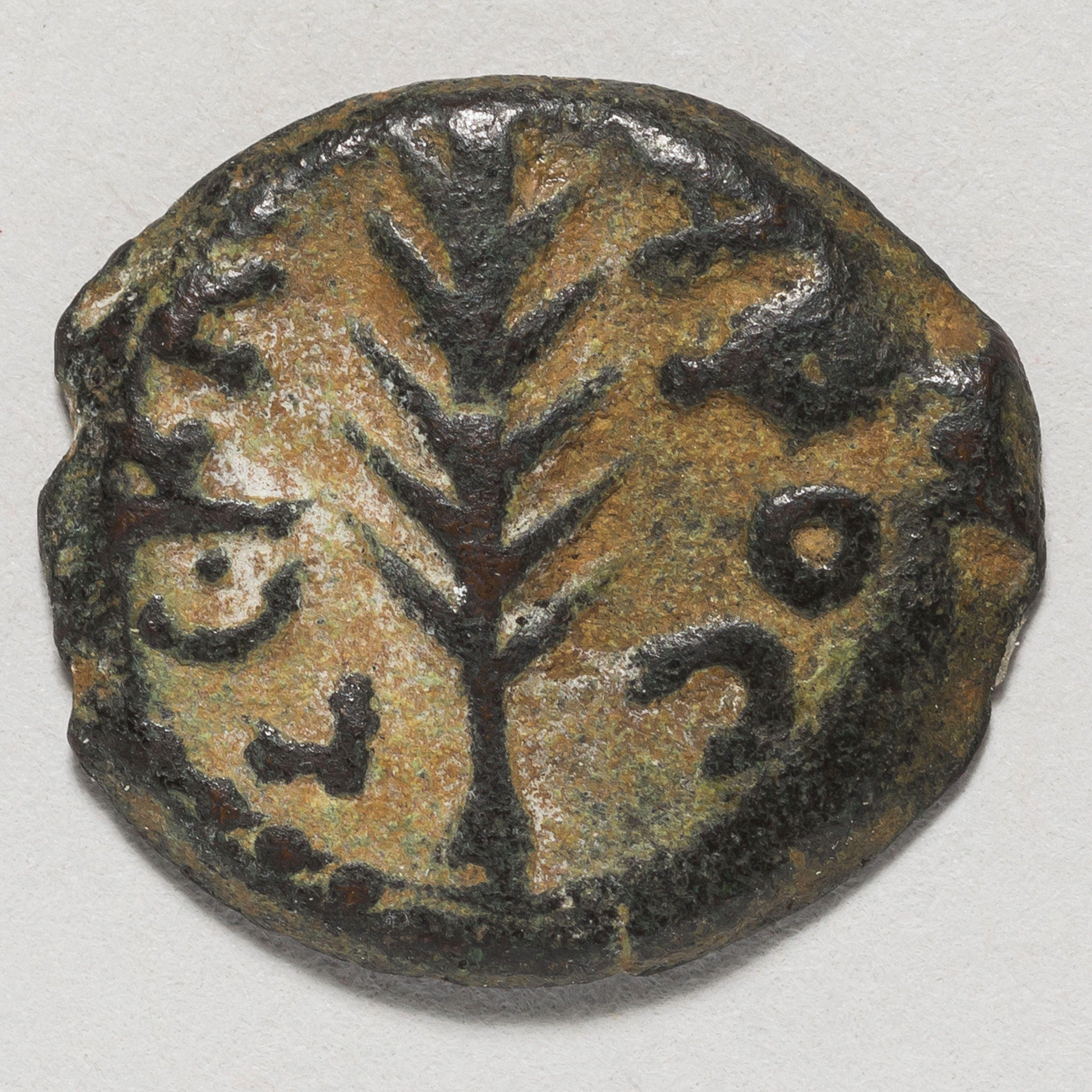
Work
Coin of Emperor Lucius Verus
Date
161–169 CE
Place Made
Philadelphia (now Amman, Jordan)
Medium
Bronze
Credit Line
Gift of the Samuel Friedenberg Collection, FBS 290
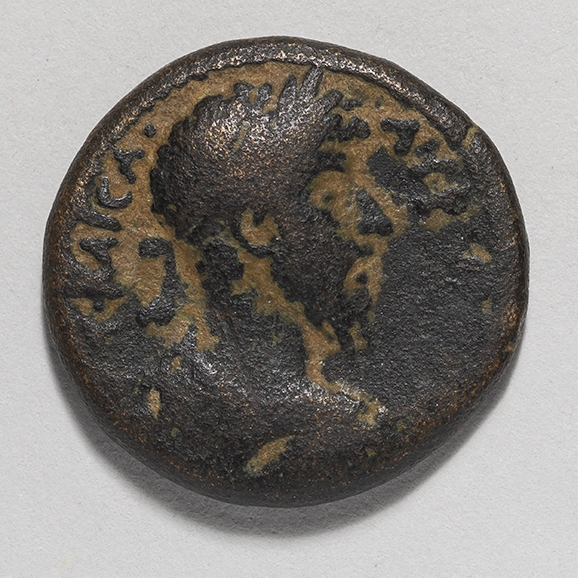
Work
Coin of the Bar Kokhba Revolt
Date
132 CE
Place Made
Roman province of Judaea
Medium
Bronze
Credit Line
X1960-3

Work
Zuz of the Bar Kokhba Revolt
Date
134–135 CE
Place Made
Roman province of Judaea
Medium
Silver
Credit Line
Gift of the Samuel Friedenberg Collection, X1983-99

Work
Coin of Emperor Trajan
Date
98–117 CE
Place Made
Sepphoris (now in Israel)
Medium
Bronze
Credit Line
Gift of the Samuel Friedenberg Collection, FBS 215

Work
Coin of Pharaoh Ptolemy IV Philopator
Date
221–205 BCE
Place Made
Egypt
Medium
Bronze
Credit Line
Gift of the Samuel Friedenberg Collection, FBS 231

Work
Tetradrachm of King Demetrius I Soter
Date
162–150 BCE
Place Made
Seleucid Empire (now Syria)
Medium
Silver
Credit Line
Gift of the Samuel Friedenberg Collection, FBS 228
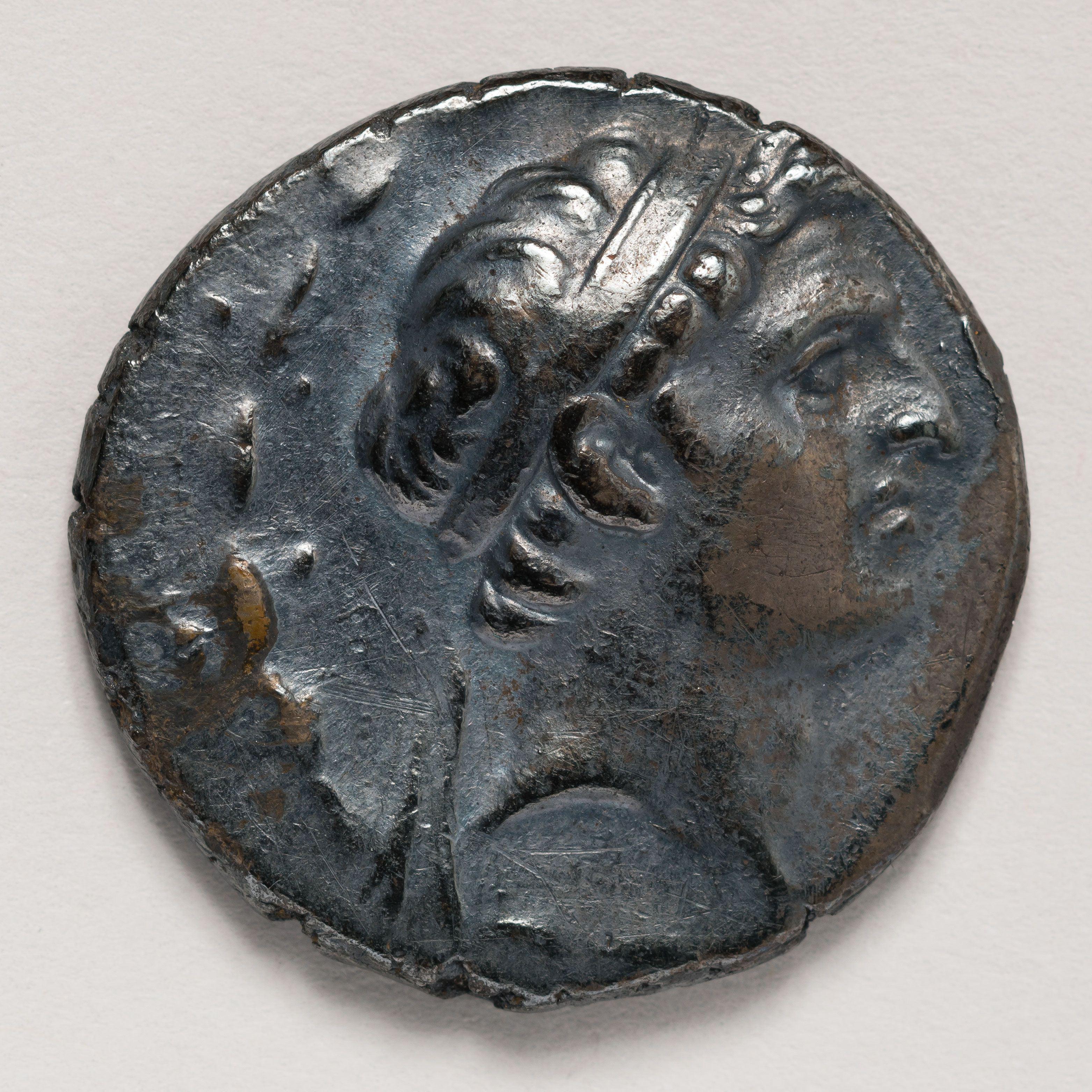
Work
Coin of Regent Julia Mamaea
Date
222–235 CE
Place Made
Bostra (now in Syria)
Medium
Bronze
Credit Line
Gift of the Samuel Friedenberg Collection, FBS 267
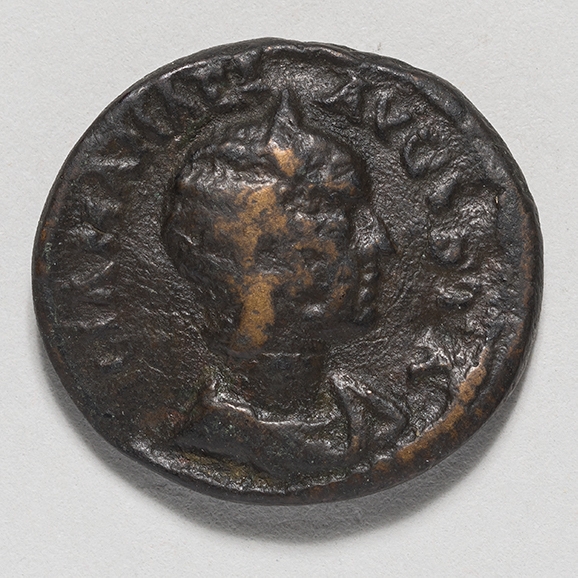
Work
Judaea Capta coin of Emperor Titus
Date
c. 76 CE
Place Made
Caesarea (now in Israel)
Medium
Bronze
Credit Line
Gift of the Samuel Friedenberg Collection, FBS 28
Judaea Capta is Latin for “Judaea conquered.” In the reign of the Roman emperor Titus (39–81 CE) an uprising in the Roman province of Judaea was suppressed; Jerusalem was sacked and the Second Temple burned. This coin was minted in Roman-held Caesarea to celebrate the Roman victory in what is now called the First Jewish War against Rome (66–70 CE). Judaea is often represented on these coins as a weeping woman.
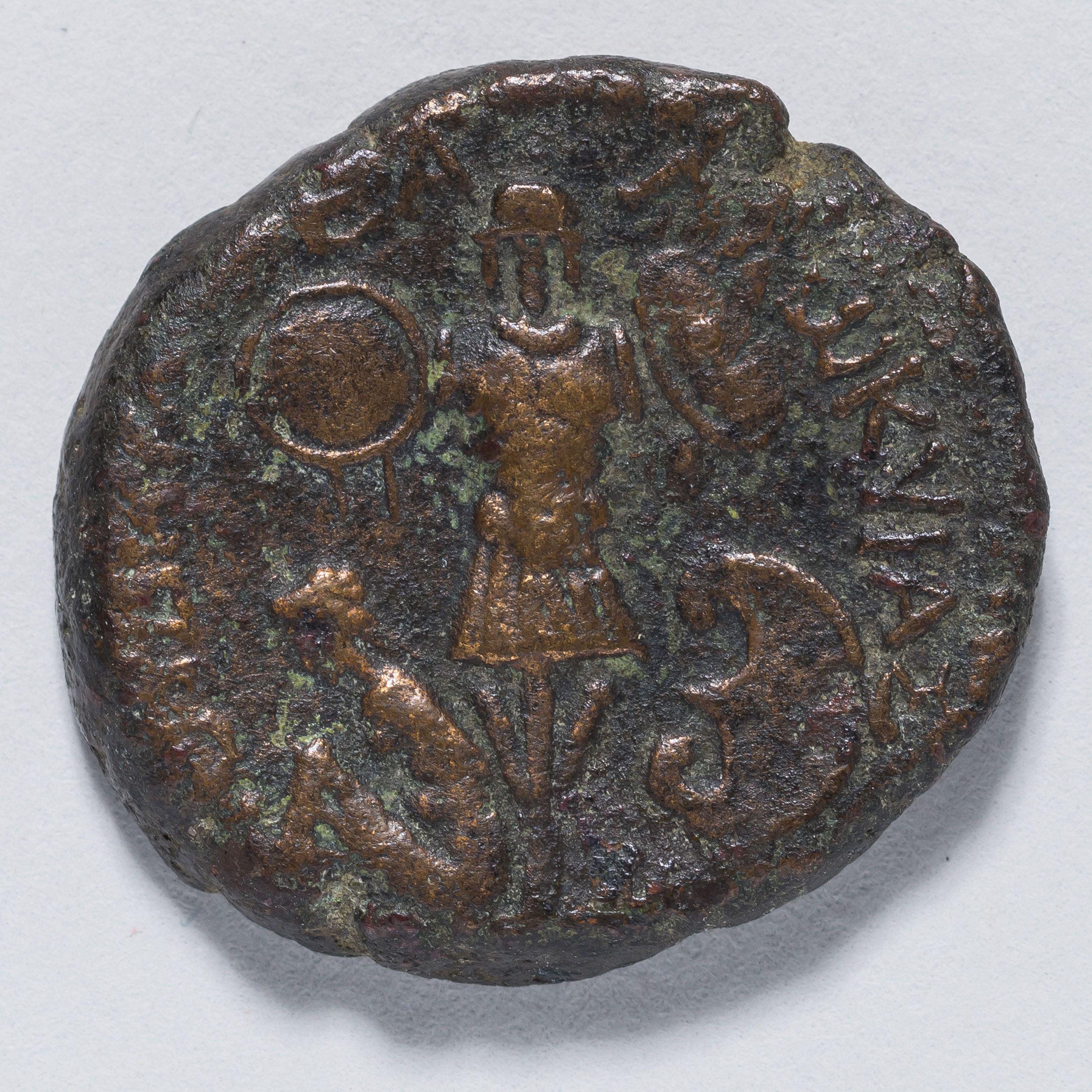
Work
Coin of Emperor Antoninus Pius
Date
138–161 CE
Place Made
Aelia Capitolina (now Jerusalem)
Medium
Bronze
Credit Line
Gift of the Samuel Friedenberg Collection, X1983-101
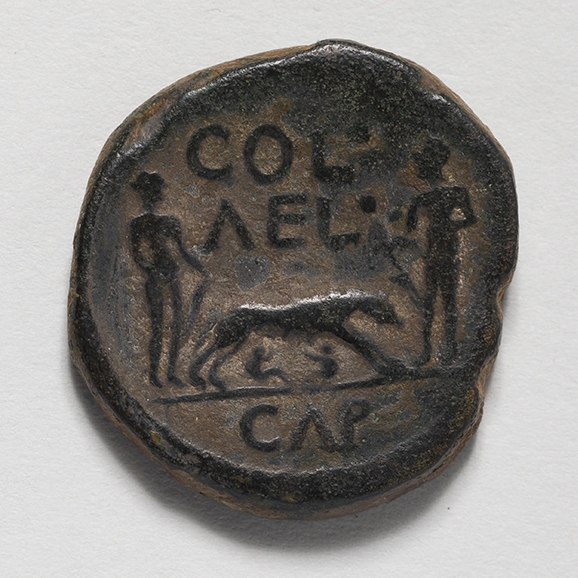
Work
Shekel of the Jewish War against Rome
Date
69 CE
Place Made
Jerusalem
Medium
Silver
Credit Line
Gift of the Samuel Friedenberg Collection, X1968-2
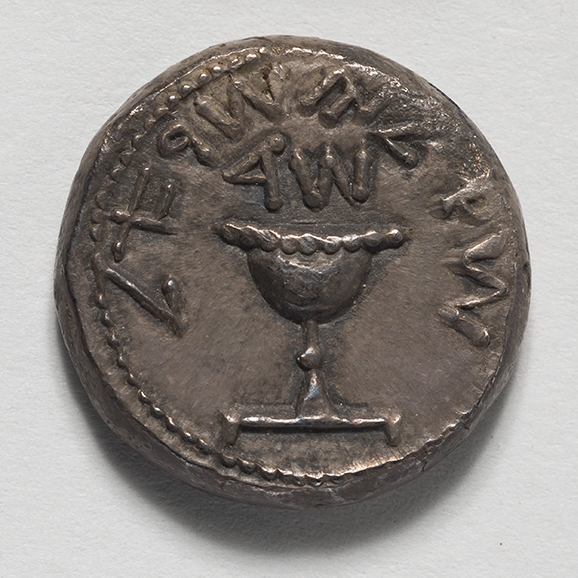
Work
Follis of Emperor Justinian the Great
Date
c. 535 CE
Place Made
Constantinople (now Istanbul)
Medium
Bronze
Credit Line
Gift of the Samuel Friedenberg Collection, JM 166-79
K indicates the denomination of the coin at twenty units.
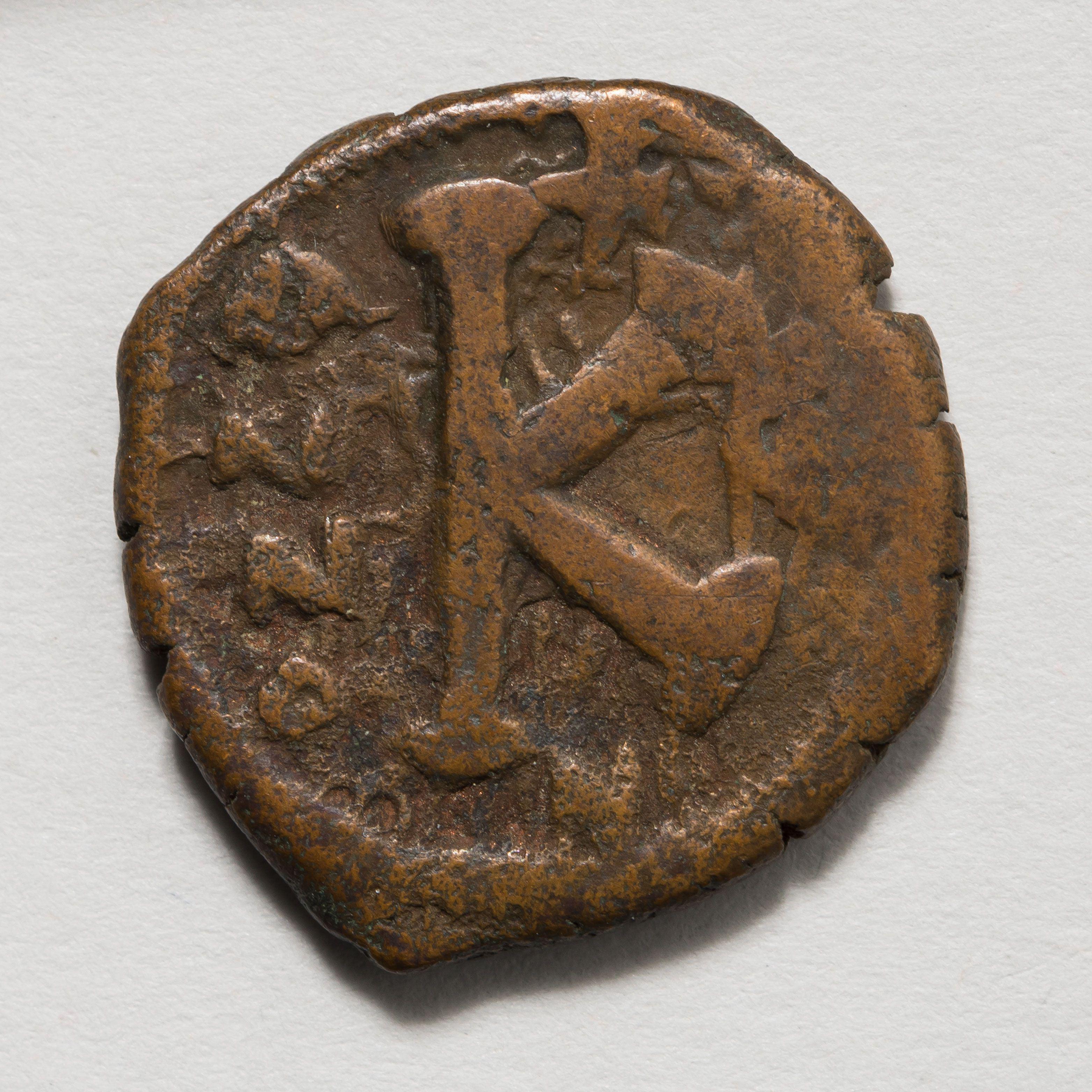
Work
Prutah of the Jewish War against Rome
Date
67–68 CE
Place Made
Jerusalem
Medium
Bronze
Credit Line
Gift of the Samuel Friedenberg Collection, FBS 53
During the First Jewish War for independence from Rome, Jewish leaders minted coins as a way to declare independence.

Work
Double shekel of Sidon
Date
Fourth century BCE
Place Made
Sidon (now in Lebanon)
Medium
Silver
Credit Line
Gift of the Samuel Friedenberg Collection, JM 155-79
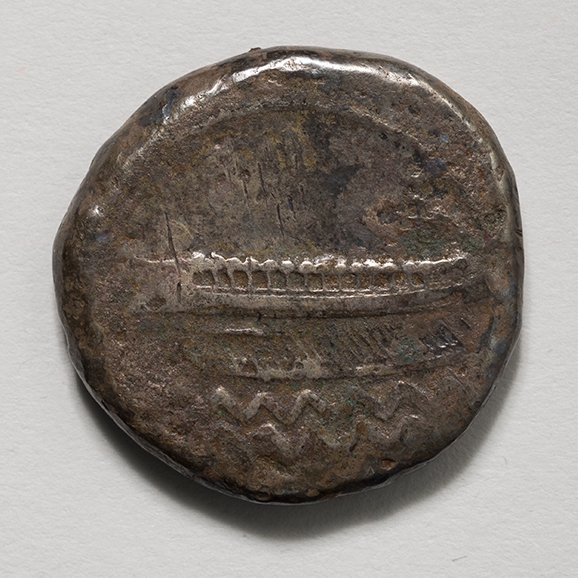
Work
Daric of a king of Persia
Date
Fifth century BCE
Place Made
Persian Empire
Medium
Gold
Credit Line
Gift of the Samuel Friedenberg Collection, FBS 233
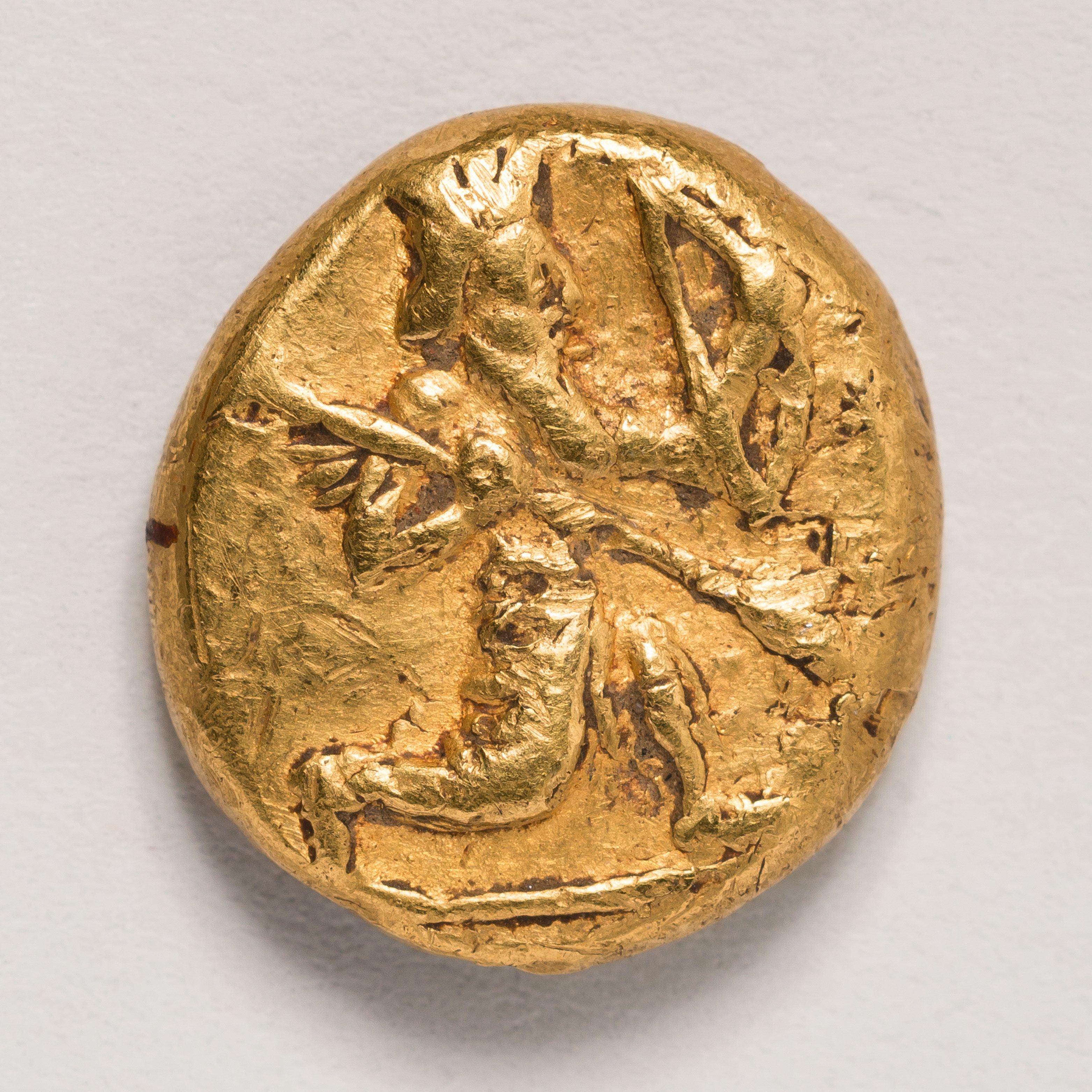
Work
Coin of Emperor Hadrian
Date
117–138 CE
Place Made
Caesarea (now in Israel)
Medium
Bronze
Credit Line
Gift of the Samuel Friedenberg Collection, FBS 204
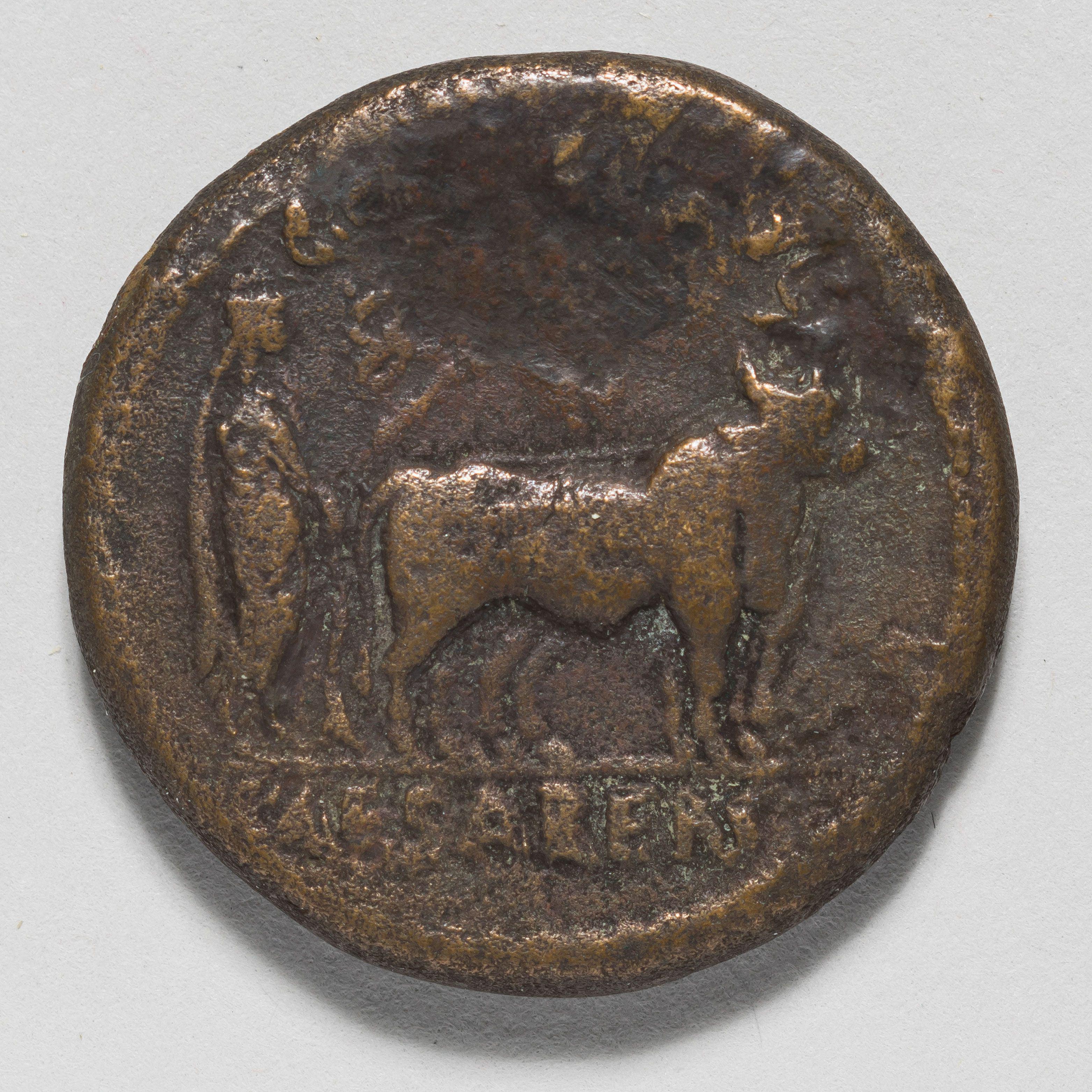
Work
Coin of Emperor Augustus
Date
27 BCE–14 CE
Place Made
Berytus (now Beirut, Lebanon)
Medium
Bronze
Credit Line
Gift of the Samuel Friedenberg Collection, FBS 299
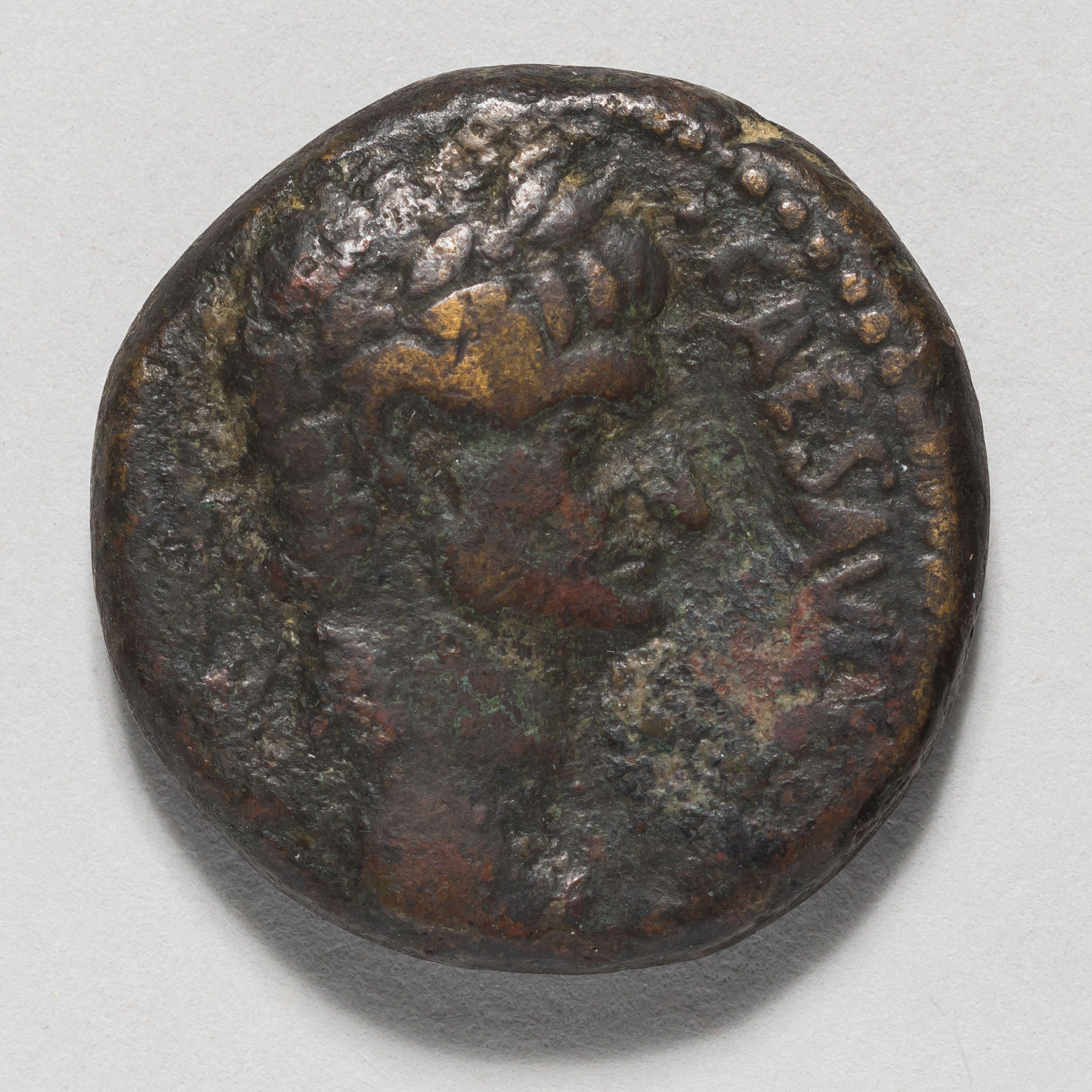
Work
Zuz of the Bar Kokhba Revolt
Date
134–135 CE
Place Made
Roman province of Judaea
Medium
Silver
Credit Line
Gift of the Samuel Friedenberg Collection, X1983-98
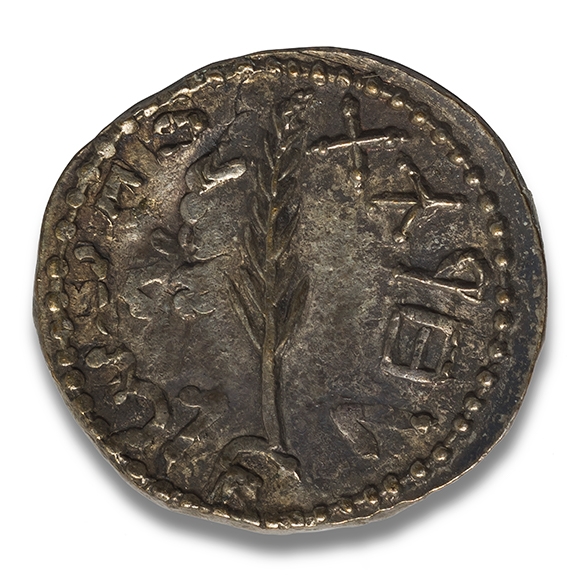
Work
Tetradrachm of Emperor Elagabalus
Date
218–222 CE
Place Made
Antioch (now Antakya, Turkey)
Medium
Silver
Credit Line
Gift of the Samuel Friedenberg Collection, FBS 266
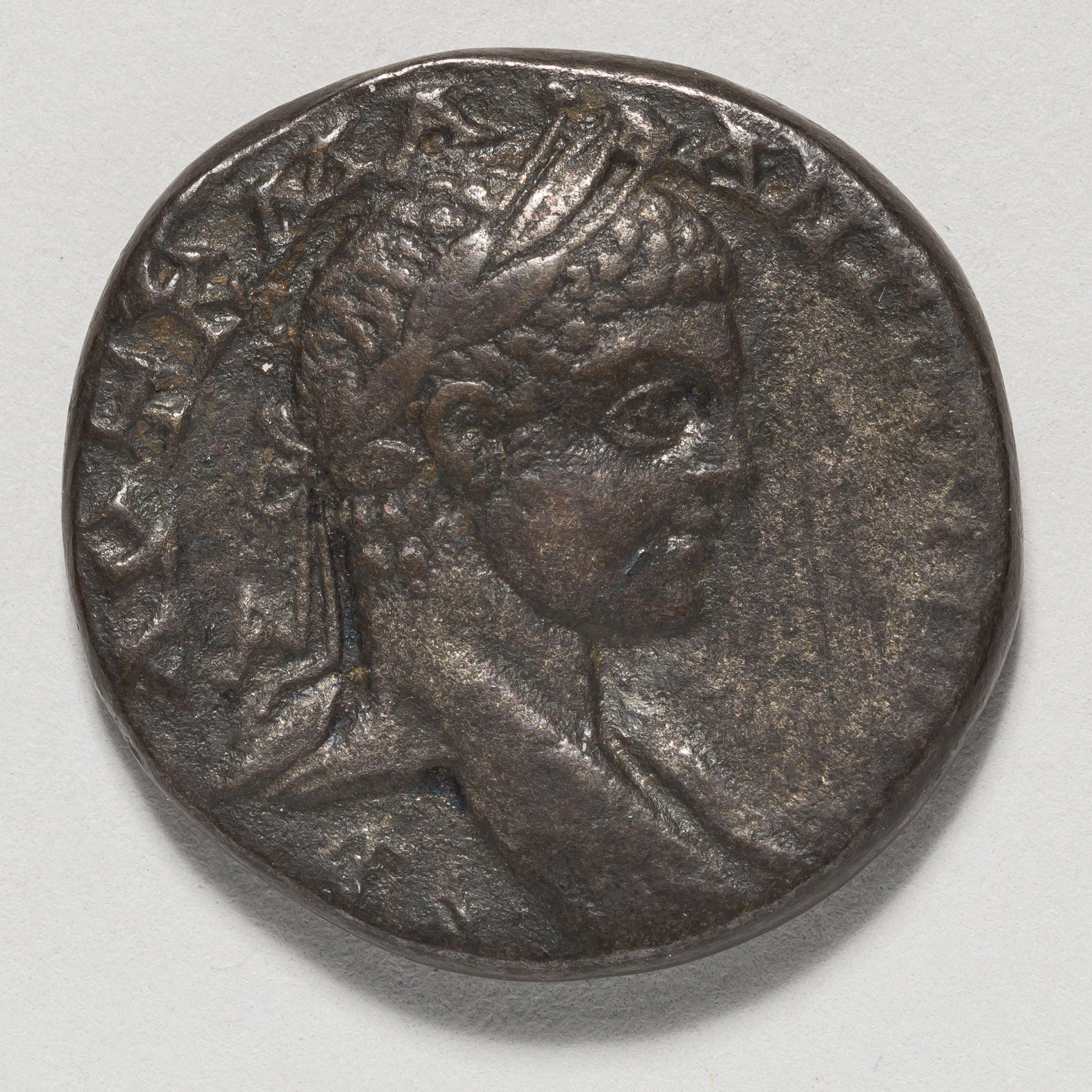
Work
Sestertius of Emperor Hadrian
Date
130 CE
Place Made
Rome
Medium
Bronze
Credit Line
Gift of the Samuel Friedenberg Collection, FBS 178

Work
Coin of Emperor Trebonianus Gallus
Date
251–253 CE
Place Made
Antioch (now Antakya, Turkey)
Medium
Bronze
Credit Line
Gift of the Samuel Friedenberg Collection, FBS 286
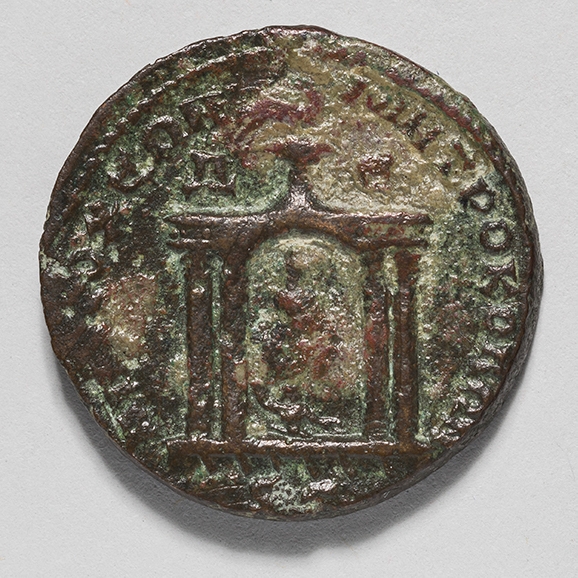
Work
Coin of King Agrippa II
Date
82 CE
Place Made
Caesarea (now in Israel)
Medium
Bronze
Credit Line
Gift of the Samuel Friedenberg Collection, FBS 246
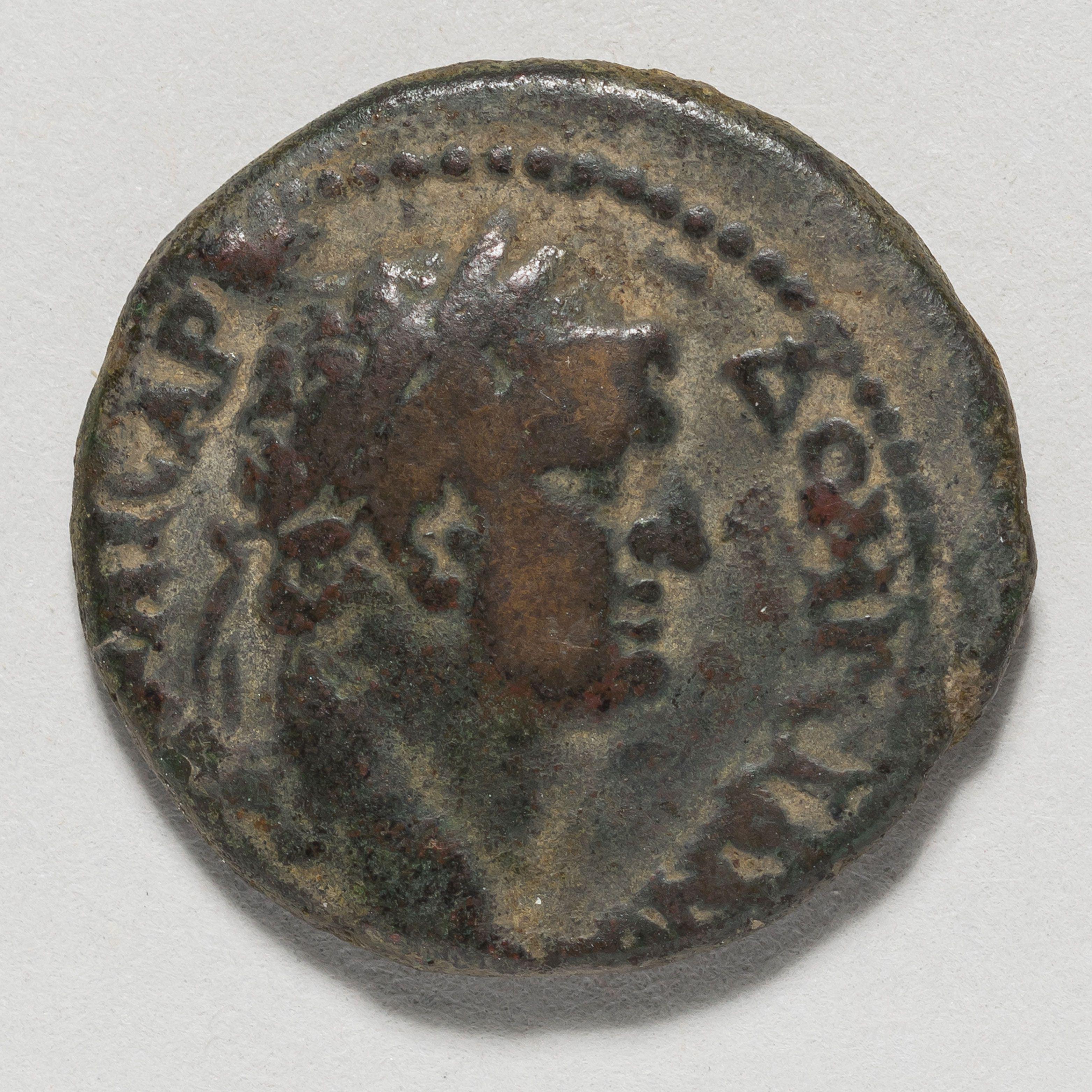
Work
Prutah of Procurator Valerius Gratus
Date
16 CE
Place Made
Jerusalem
Medium
Bronze
Credit Line
Gift of the Samuel Friedenberg Collection, FBS 156
Procurator was the title given to the governors of the Roman province of Judaea, appointed by Rome. Procurators issued coins with the names of the Roman emperors they served, rather than their own. The symbols they chose were considerate of Jewish sensibilities—they did not include portraits of emperors, but rather designs of Jewish character, such as the produce of the land.
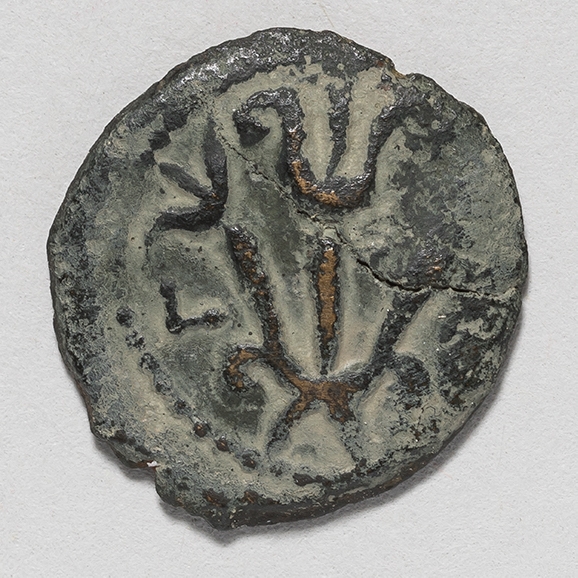
Work
Coin of Emperor Trajan
Date
107–108 CE
Place Made
Tiberias (now in Israel)
Medium
Bronze
Credit Line
Gift of the Samuel Friedenberg Collection, X1960-10

Work
Four prutot of King Mattathias Antigonus
Date
40–37 BCE
Place Made
Jerusalem
Medium
Bronze
Credit Line
Gift of the Samuel Friedenberg Collection, JM 158-79

Work
Half shekel of the Jewish War against Rome
Date
66 CE
Place Made
Jerusalem
Medium
Silver
Credit Line
Gift of the Samuel Friedenberg Collection, X1960-1
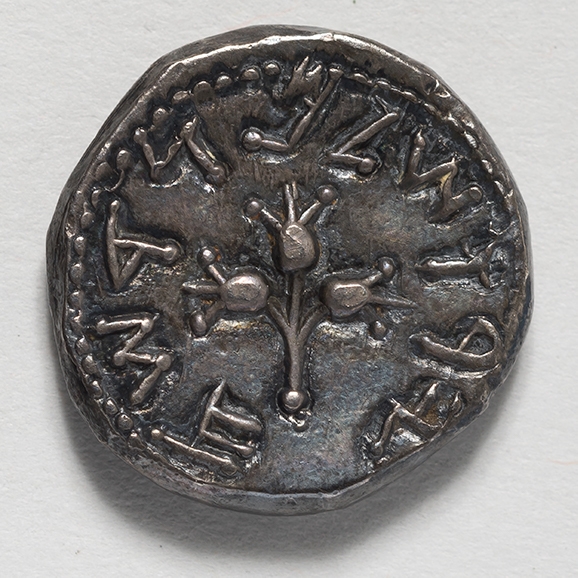
Work
Shekel of the Jewish War against Rome
Date
67–68 CE
Place Made
Jerusalem
Medium
Silver
Credit Line
Gift of the Samuel Friedenberg Collection, U 8565
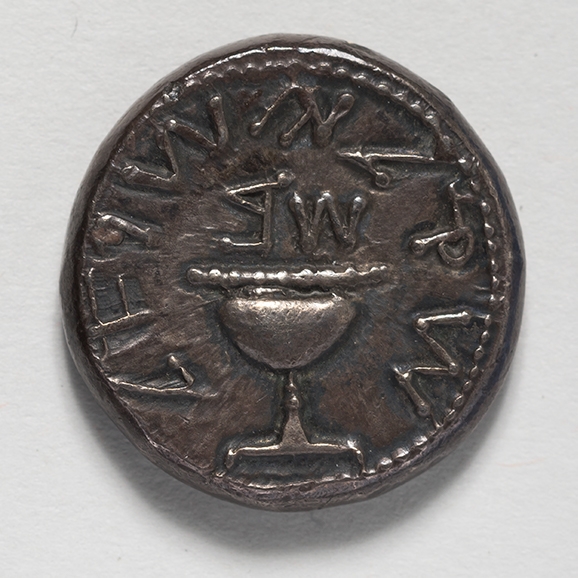
Work
Coin inscribed Hierusalem
Date
Thirteenth century
Place Made
Jerusalem or Cyprus
Medium
Silver
Credit Line
Gift of the Samuel Friedenberg Collection, JM 173-79
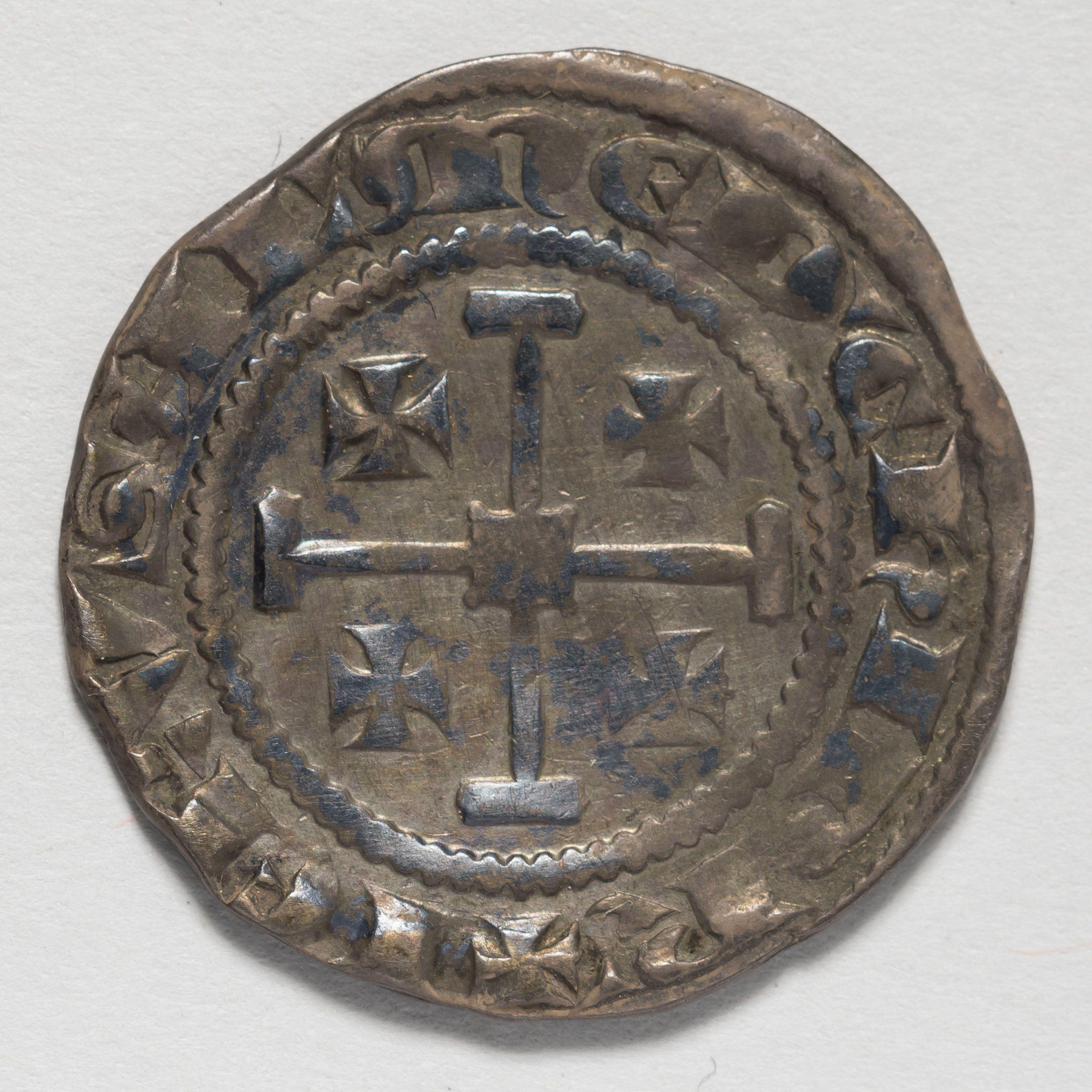
Work
Coin of Pharaoh Ptolemy II Philadelphus
Date
c. 260 BCE
Place Made
Alexandria, Egypt
Medium
Bronze
Credit Line
Gift of Daniel M. Friedenberg, X1983-102

Work
Zuz of the Bar Kokhba Revolt
Date
c. 133 CE
Place Made
Roman province of Judaea
Medium
Silver
Credit Line
Purchase, X1960-4

Work
Denarius of Emperor Titus
Date
c. 76 CE
Place Made
Rome
Medium
Silver
Credit Line
Gift of the Samuel Friedenberg Collection, FBS 180
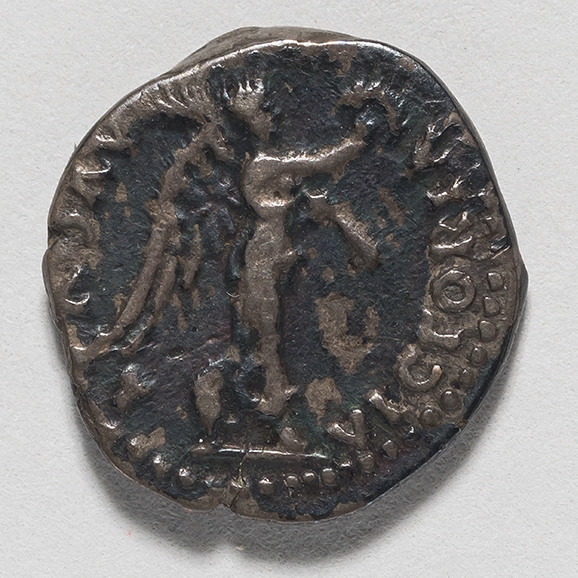
Work
Quarter shekel of the Jewish War against Rome
Date
69 CE
Place Made
Jerusalem
Medium
Bronze
Credit Line
Gift of the Samuel Friedenberg Collection, X1983-87

Work
Judaea Capta sestertius of Emperor Titus
Date
71 CE
Place Made
Rome
Medium
Bronze
Credit Line
Gift of the Samuel Friedenberg Collection, FBS 29
Judaea Capta is Latin for “Judaea conquered.” In the reign of the Roman Emperor Titus (39–81 CE) an uprising in the Roman province of Judaea was suppressed, Jerusalem was sacked, and the Second Temple burned. This coin was minted in Roman-held Caesarea to celebrate the Roman victory in what is now called the First Jewish War against Rome (66–70 CE). Here, the image of a seated, weeping Jewess with the Roman goddess Victory towering over her, makes a succinct propagandistic point.
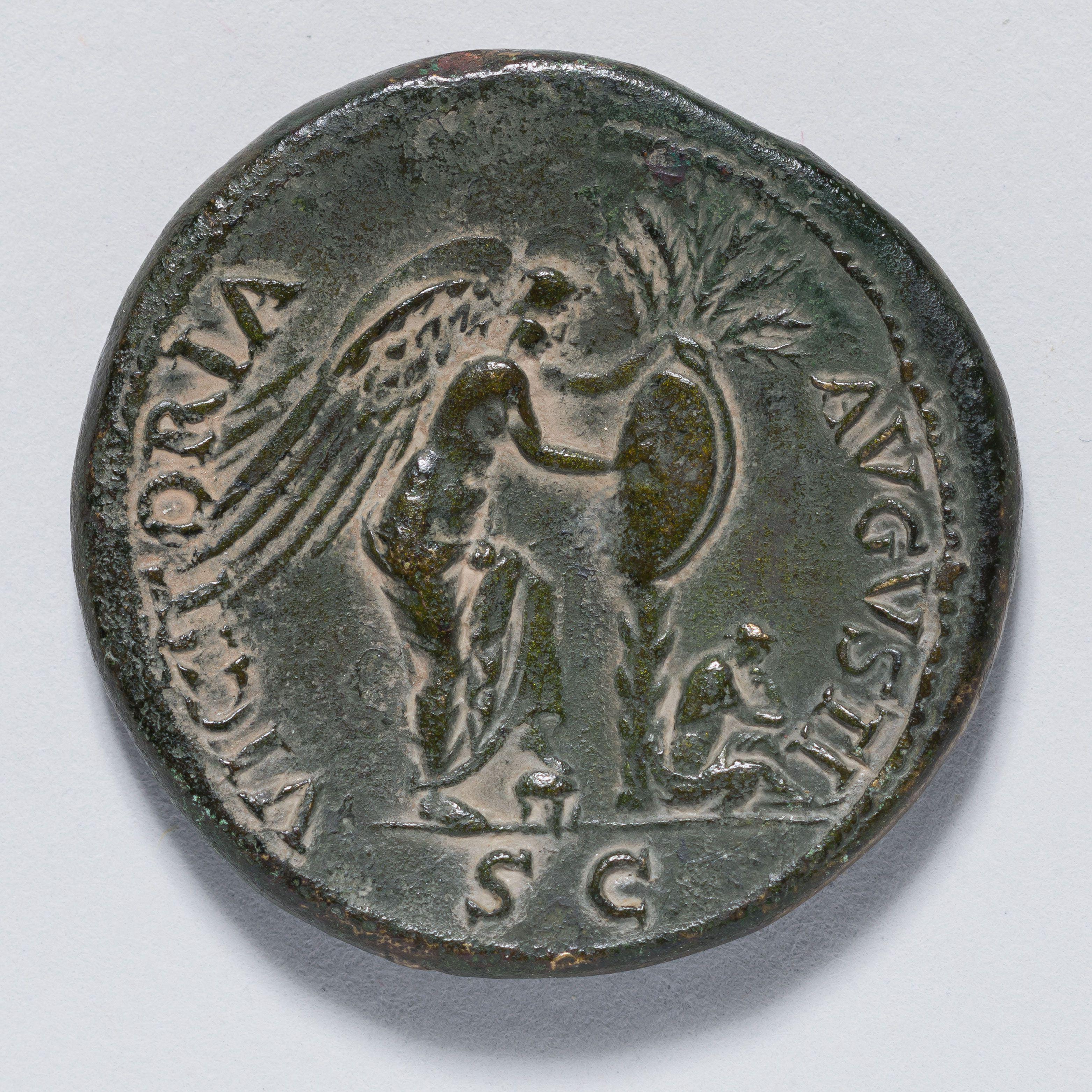
Work
Coin of Colonia Aelia Capitolina
Date
Second century CE
Place Made
Aelia Capitolina (now Jerusalem)
Medium
Bronze
Credit Line
Gift of the Samuel Friedenberg Collection, X1960-6
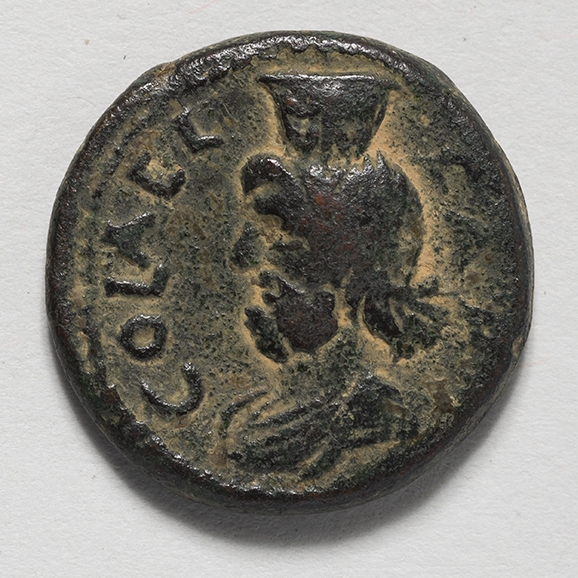
Work
Tetradrachm of Alexander the Great
Date
183–182 BCE
Place Made
Macedonia
Medium
Silver
Credit Line
Gift of the Samuel Friedenberg Collection, FBS 221
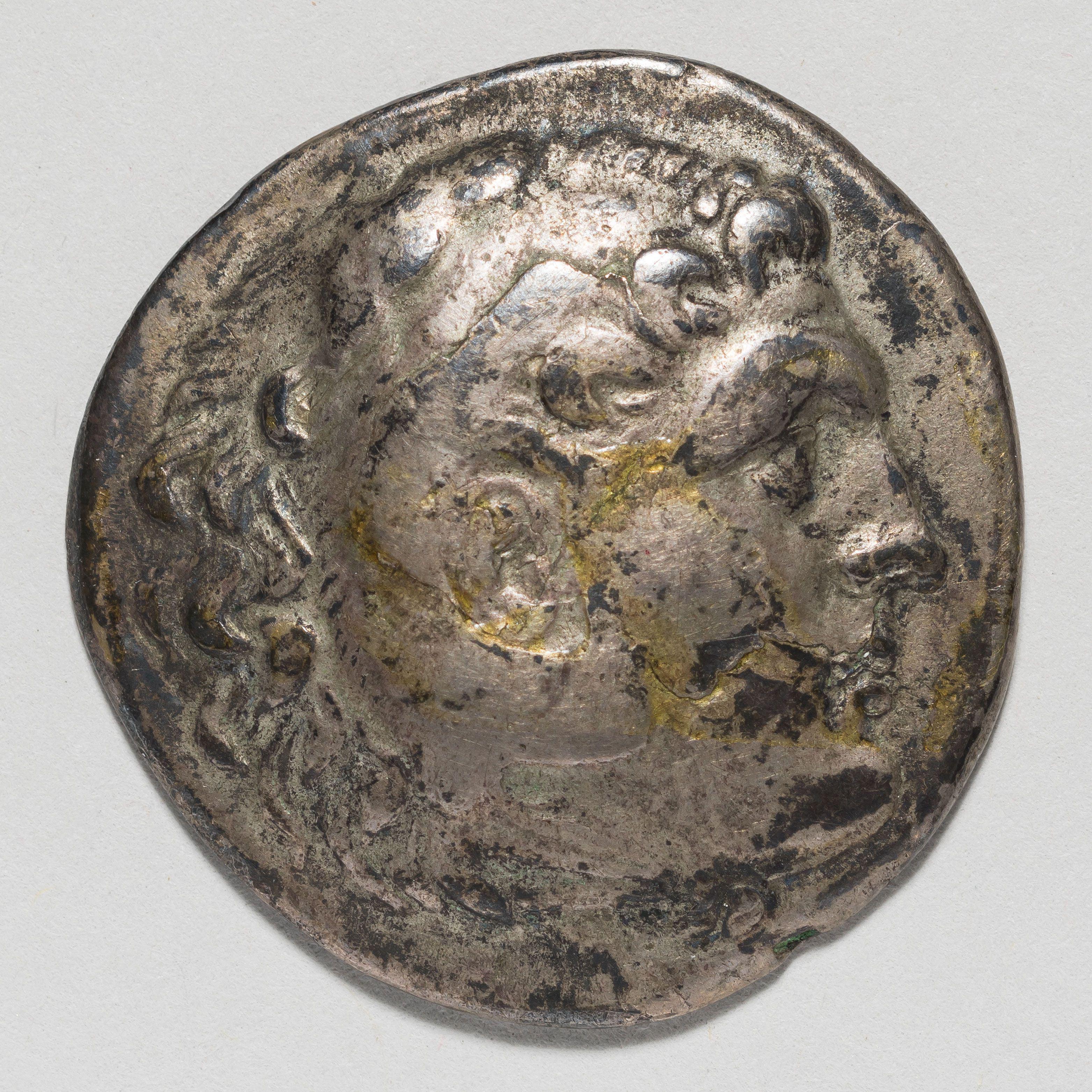
Work
Coin with an early Arabic inscription
Date
Eighth century CE
Place Made
Jerusalem
Medium
Bronze
Credit Line
Gift of the Samuel Friedenberg Collection, JM 170-79
In this period Jerusalem was under the rule of the Muslim Abbasid Caliphate. The Arabic inscription reads: “Muhammad, Messenger of God, Ilya” (the Arabic name for Jerusalem at that time).
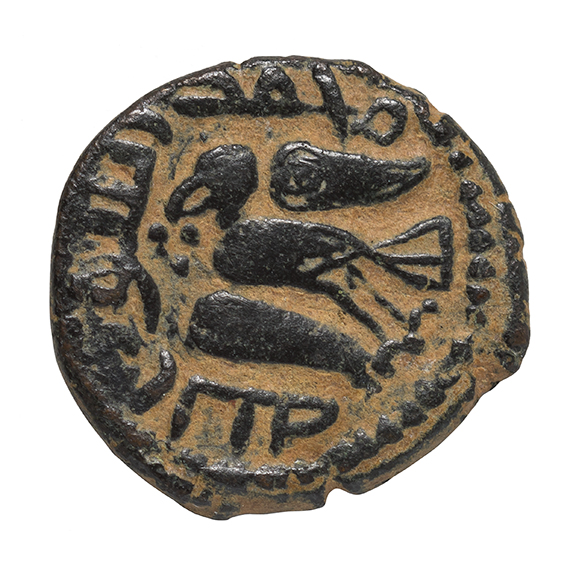
Work
Coin of King Antiochus VII Sidetes
Date
138–129 BCE
Place Made
Antioch (now Antakya, Turkey)
Medium
Silver
Credit Line
X1986-3
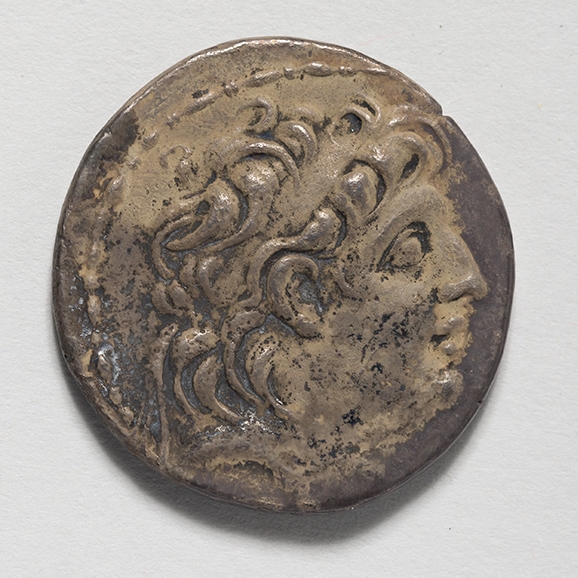
Work
Prutah of Procurator Marcus Ambibulus
Date
9–12 CE
Place Made
Jerusalem
Medium
Bronze
Credit Line
Gift of the Samuel Friedenberg Collection, FBS 279
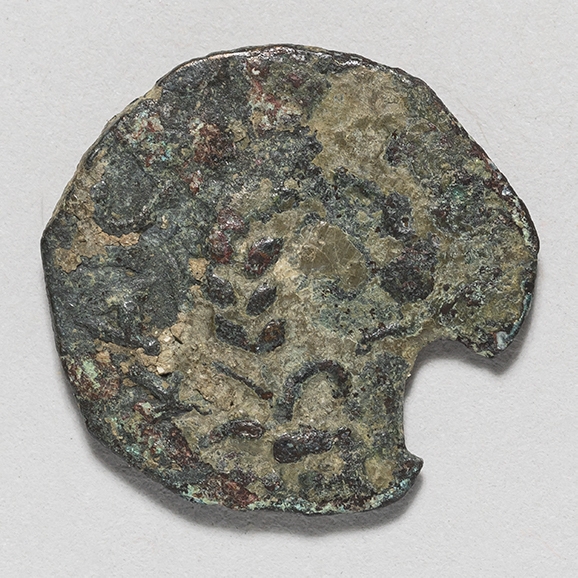
Work
Stater of Aradus
Date
Early fourth century BCE
Place Made
Aradus (now Arwad, Syria)
Medium
Silver
Credit Line
Gift of the Samuel Friedenberg Collection, JM 156-79

Work
Judaea Capta denarius of Emperor Titus
Date
80–81 CE
Place Made
Rome
Medium
Silver
Credit Line
Gift of the Samuel Friedenberg Collection, X1983-90

Work
Judaea Capta aureus of Emperor Vespasian
Date
71 CE
Place Made
Rome
Medium
Gold
Credit Line
Gift of the Samuel Friedenberg Collection, X1983-88
Judaea Capta is Latin for “Judaea conquered.” In the reign of the Roman Emperor Titus (39–81 CE) an uprising in the Roman province of Judaea was suppressed, Jerusalem was sacked, and the Second Temple burned. This coin was minted in the reign of the Roman Emperor Vespasian (69–79 CE) to celebrate the suppression of the second Jewish Revolt against Rome (66–70 CE).
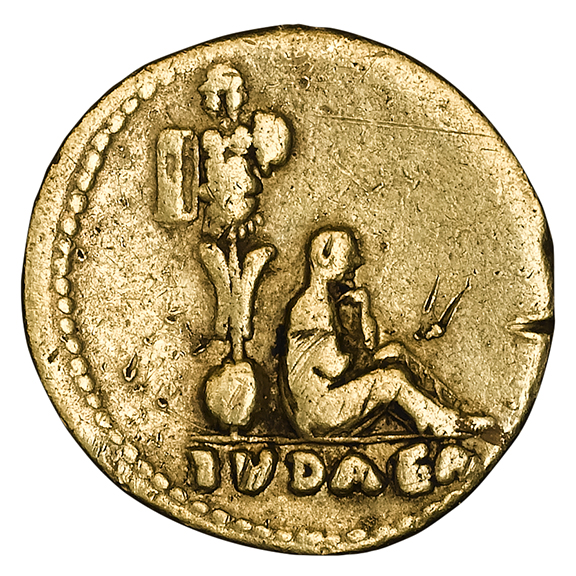
Work
Prutah of King Mattathias Antigonus
Date
40–37 BCE
Place Made
Jerusalem
Medium
Bronze
Credit Line
Gift of the Samuel Friedenberg Collection, X1968-1
This coin bears an image of the menorah, the seven-branched lampstand that stood in the Temple of Jerusalem until the building was destroyed in 70 CE. This is one of the rare depictions of the menorah to have been made while the Temple was still standing.
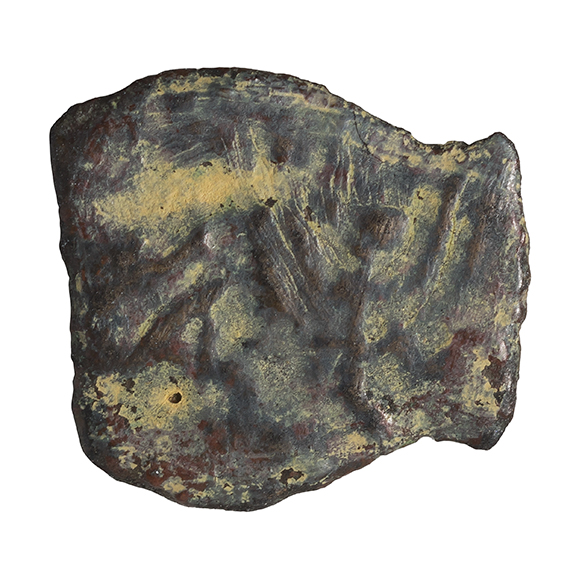
Work
Coin of Ascalon
Date
Late first century BCE
Place Made
Ascalon (now Ashkelon, Israel)
Medium
Bronze
Credit Line
Gift of the Samuel Friedenberg Collection, FBS 196
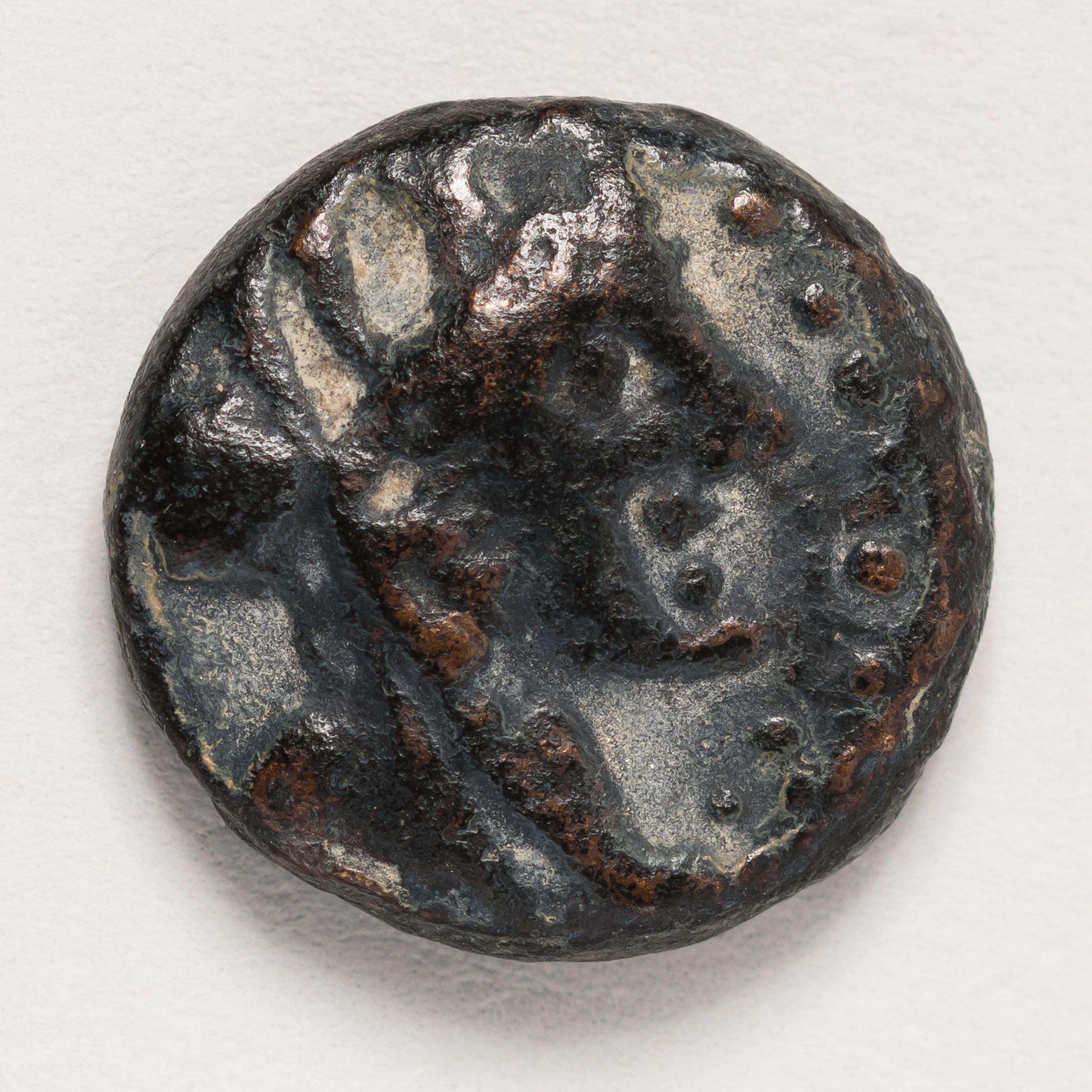
Work
Zuz of the Bar Kokhba Revolt
Date
133 CE
Place Made
Roman province of Judaea
Medium
Silver
Credit Line
Gift of the Samuel Friedenberg Collection, X1967-2

Work
Zuz of the Bar Kokhba Revolt
Date
134–135 CE
Place Made
Roman province of Judaea
Medium
Silver
Credit Line
Gift of the Samuel Friedenberg Collection, X1967-4

Work
Zuz of the Bar Kokhba Revolt
Date
134–135 CE
Place Made
Roman province of Judaea
Medium
Silver
Credit Line
Gift of the Samuel Friedenberg Collection, X1967-3
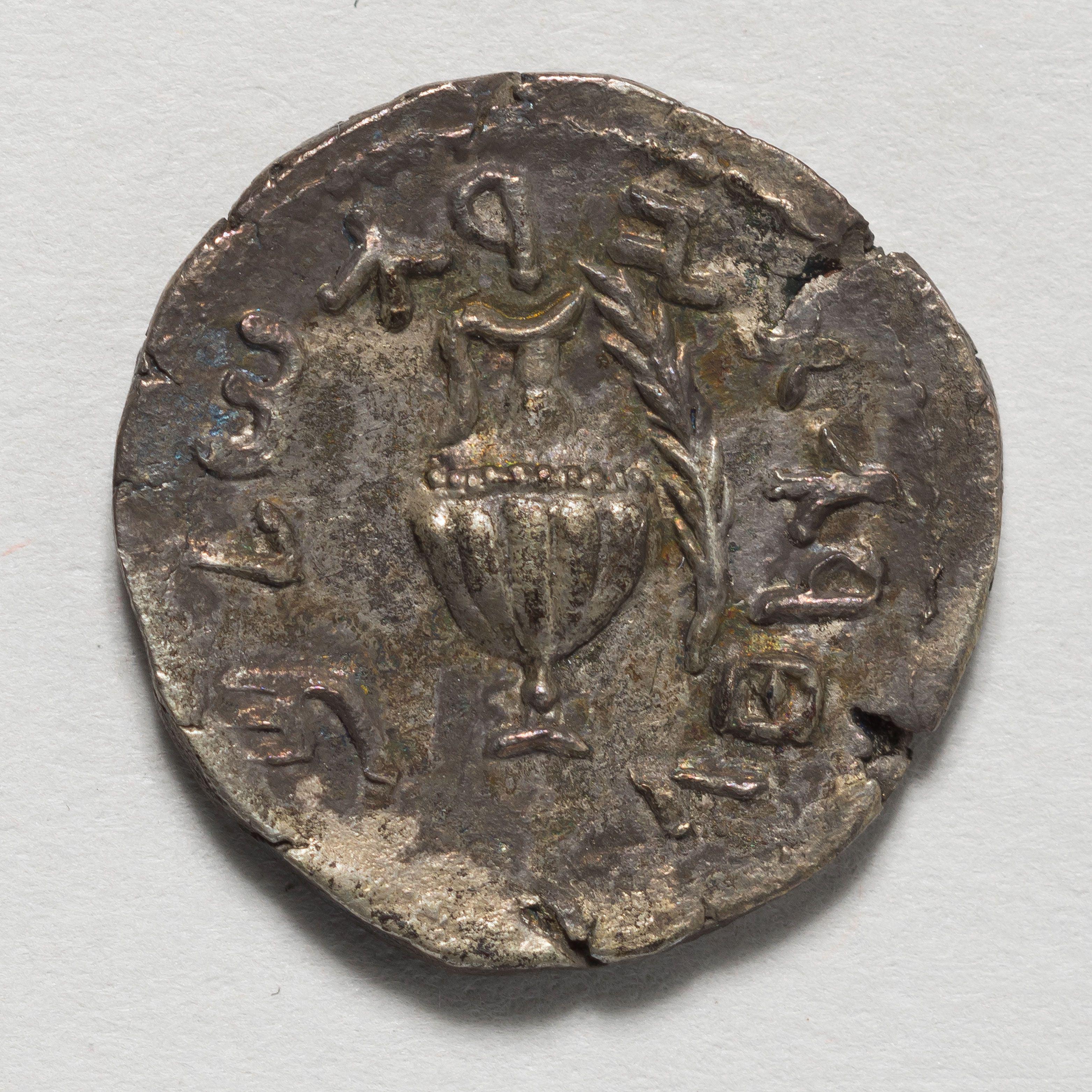
Work
Dreidel
Date
Late nineteenth or early twentieth century
Artist
Unknown
Place Made
Eastern Europe?
Medium
Cast lead
Credit Line
U 9660
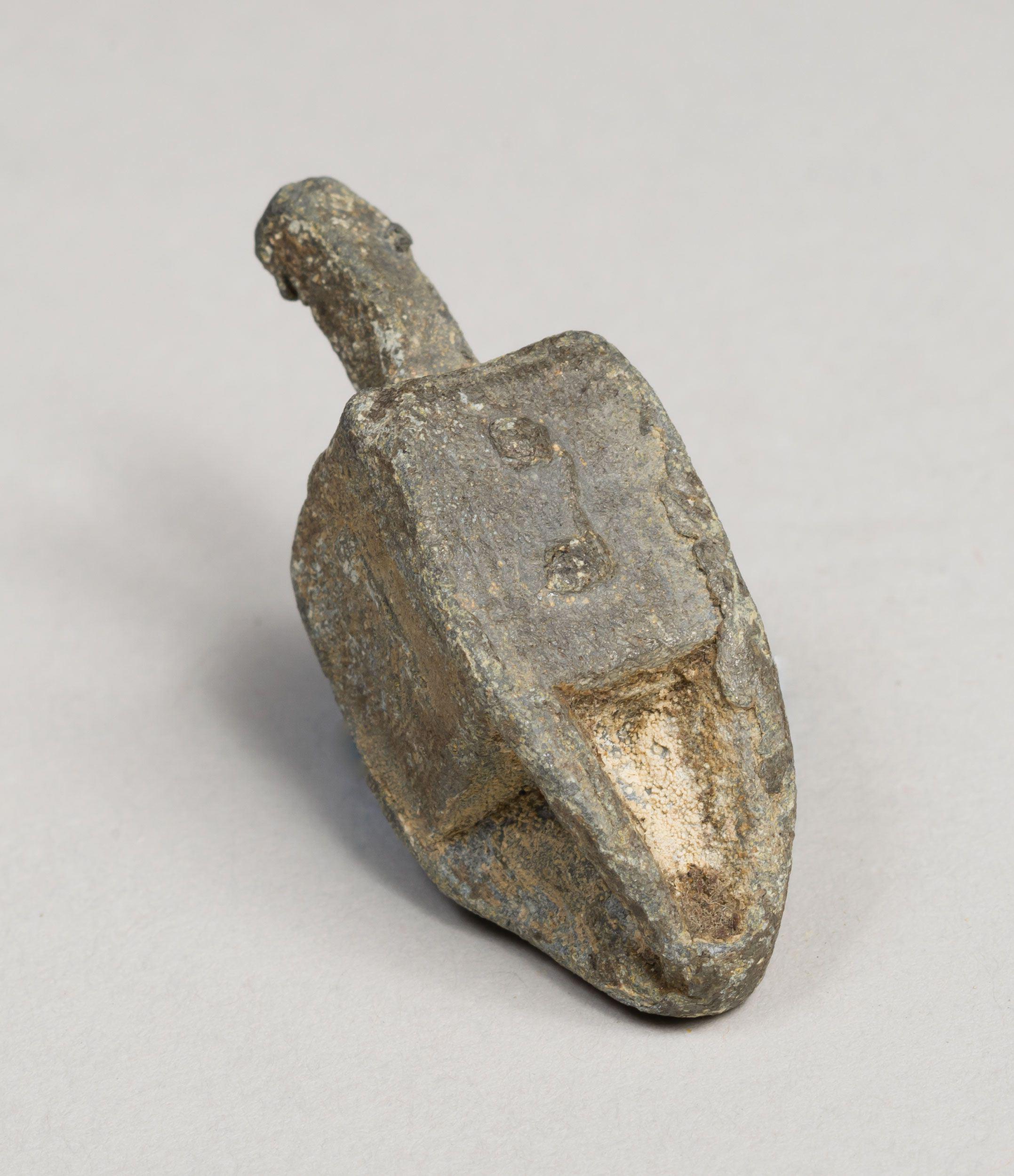
Work
Dreidel
Date
Late nineteenth or early twentieth century
Artist
Unknown
Place Made
Eastern Europe?
Medium
Cast pewter
Credit Line
U 9662

Work
Dreidel
Date
Eighteenth century
Artist
Unknown
Place Made
Poland
Medium
Carved wood
Credit Line
The Rose and Benjamin Mintz Collection, M 306
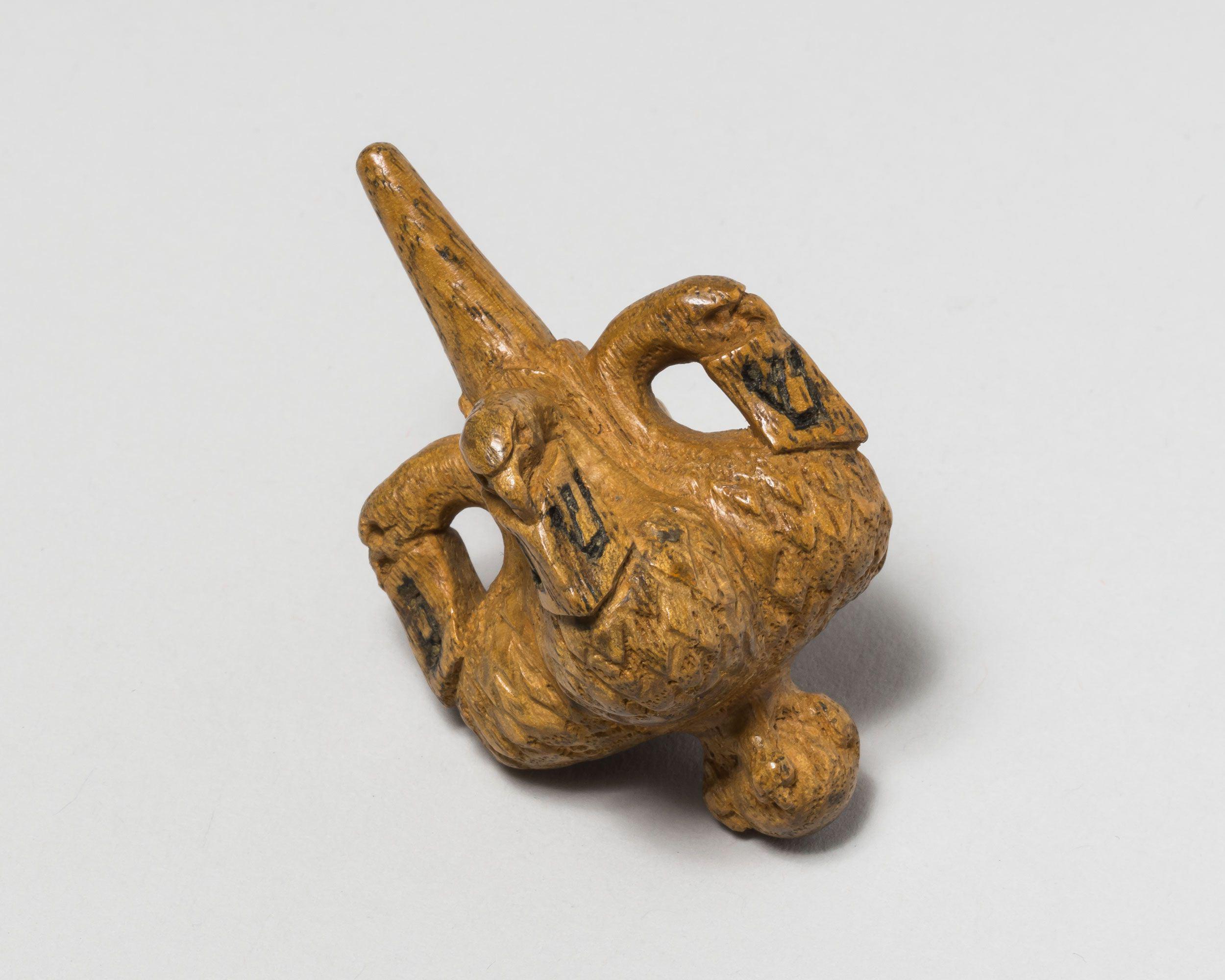
Work
Dreidel
Date
Eighteenth century
Artist
Unknown
Place Made
Poland
Medium
Carved wood
Credit Line
The Rose and Benjamin Mintz Collection, M 304

Work
Dreidel
Date
Eighteenth century
Artist
Unknown
Place Made
Poland
Medium
Carved wood
Credit Line
The Rose and Benjamin Mintz Collection, M 305

Work
Dreidel
Date
Eighteenth or nineteenth century
Artist
Unknown
Place Made
Poland
Medium
Carved wood
Credit Line
The Rose and Benjamin Mintz Collection, M 311
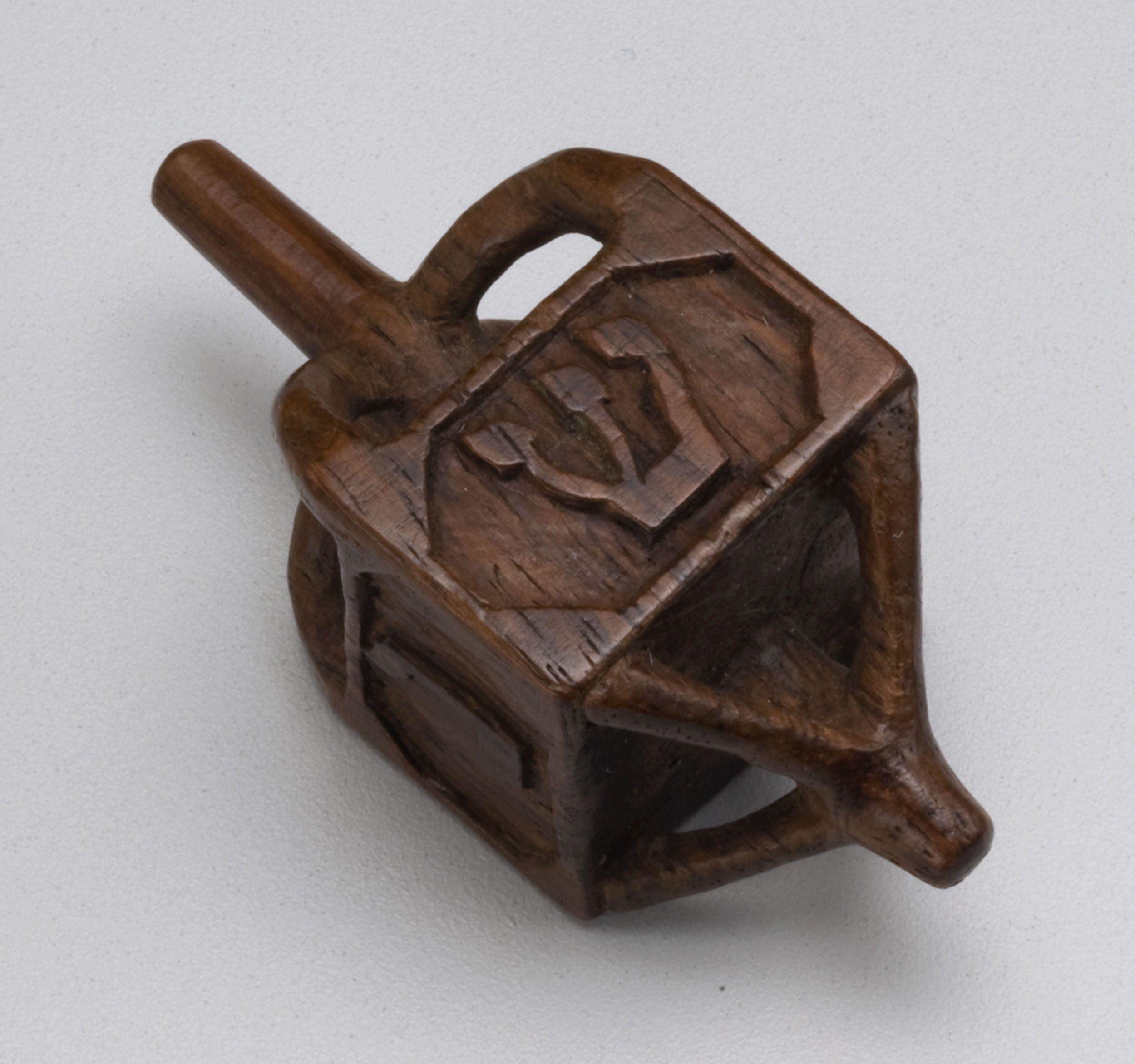
Work
Artistic Palestine Play-Cards
Date
c. 1925
Artist
Ze’ev Raban, Israeli, born in Poland, 1890–1970; published by Duchifat Press, Jerusalem
Place Made
British Mandate Palestine
Medium
Ink on paper
Credit Line
Gift of Dr. Harry G. Friedman, F 4561

Work
Die
Date
Probably first century CE
Artist
Unknown
Place Made
Eastern Mediterranean
Medium
Drilled bone
Credit Line
Gift of Bernard and Tzila Weiss, 1994-642
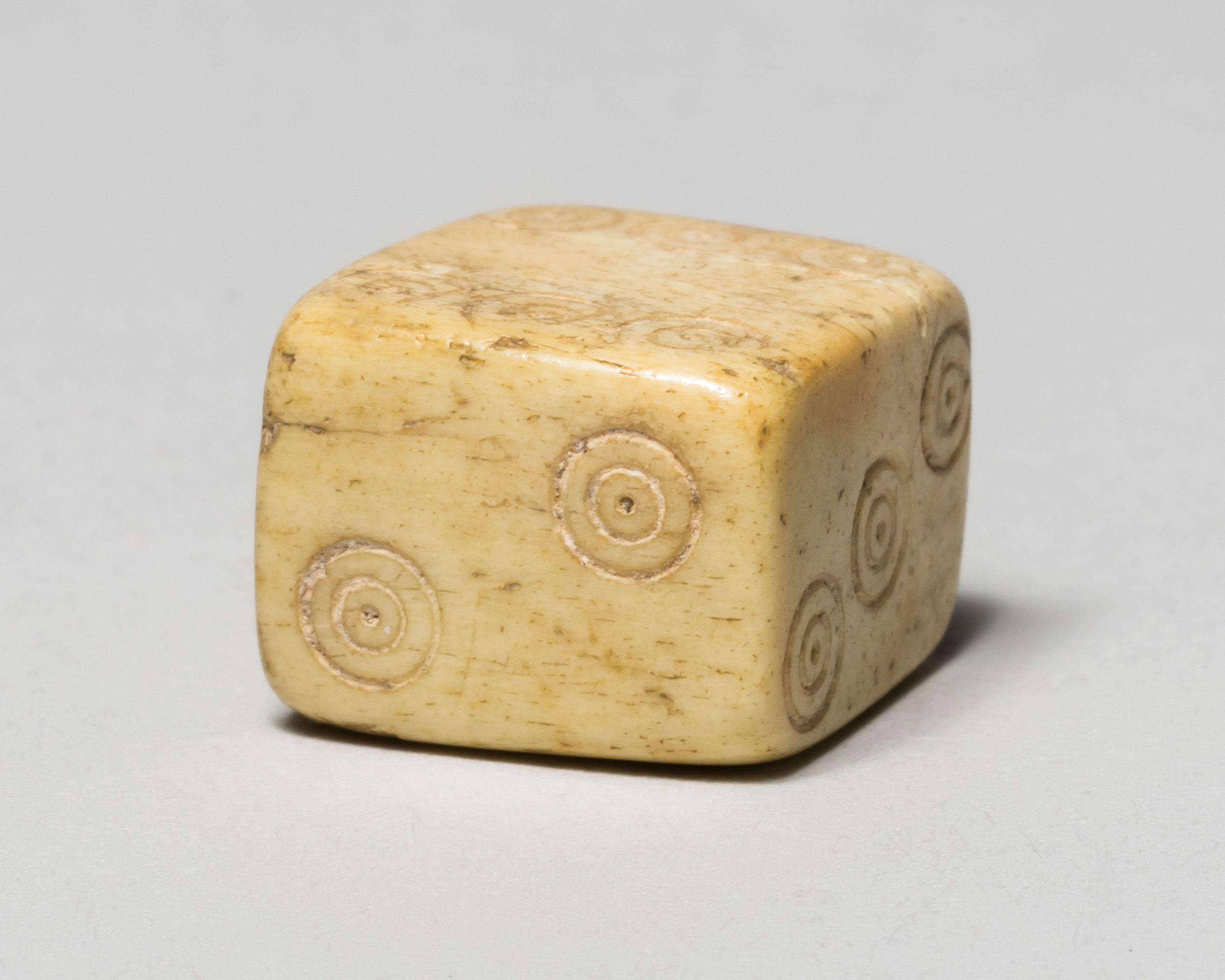
Work
Astragalus (gaming piece)
Date
Second millennium BCE?
Artist
Unknown
Place Made
Gaza
Medium
Bone
Credit Line
Purchase: Archaeology Acquisition Fund, JM 12-73.408
Astragali are an ancient form of dice made from animal ankle bones.
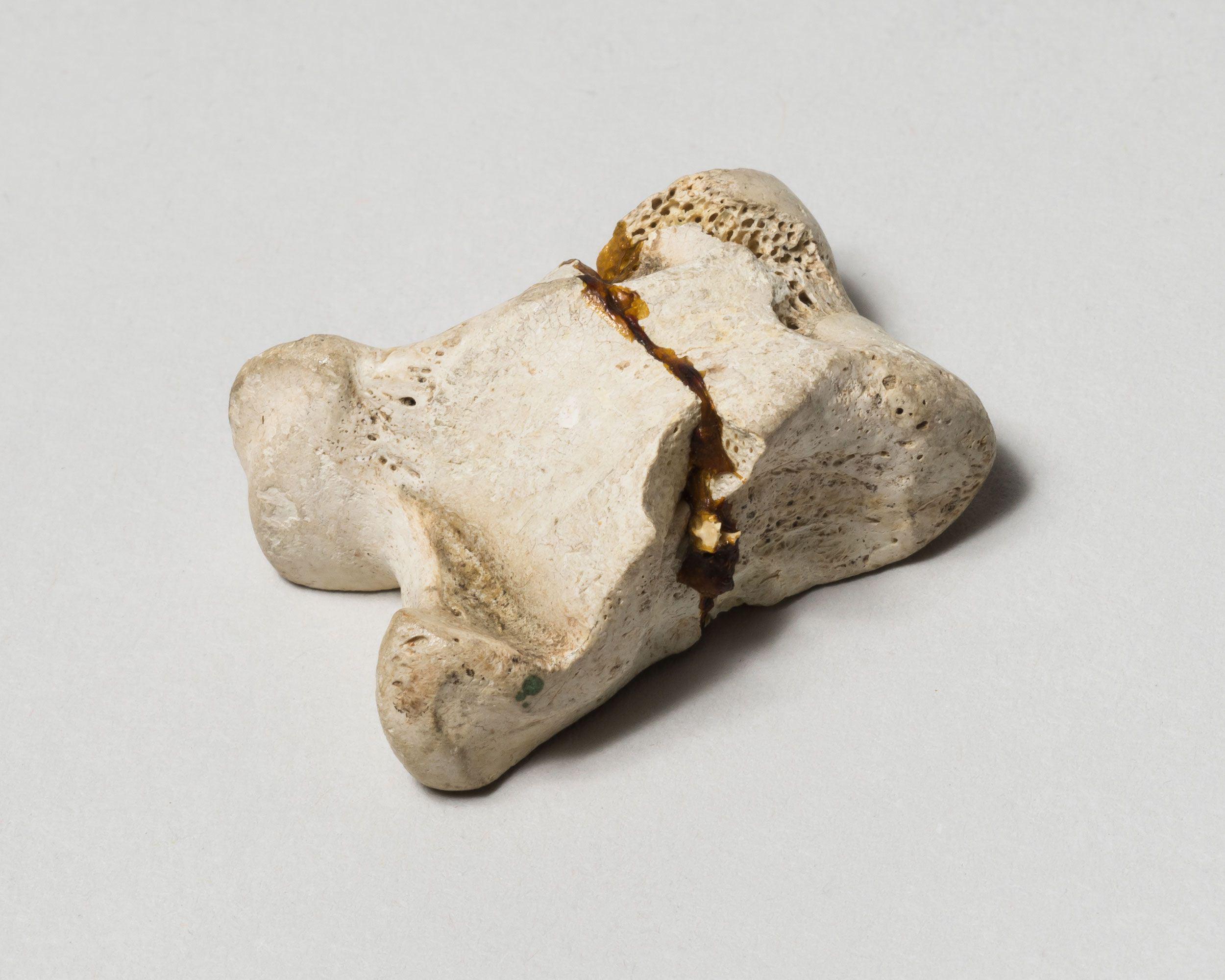
Work
Passover plate
Date
Late seventeenth or early eighteenth century; with later decoration
Artist
Bernhardt van Zeets
German, active in the late seventeenth and early eighteenth century
Place Made
Nieder-Weisel, Germany
Medium
Engraved pewter
Credit Line
Gift of the Collection of Joseph and Fanya Gottesfeld Heller, 2010-50
The engraving on this plate was executed by three different hands, probably at different times. Two sets of initials in Roman script on the rim identify the first owner. A Hebrew inscription in a good scribal hand around the rim was added later and includes Hebrew initials of another owner. The childlike Passover imagery in the center appears to have been added last.

Work
Marriage plate
Date
Late nineteenth century
Artist
Unknown
Place Made
Germany?
Medium
Cast and engraved pewter
Credit Line
Gift of Dr. Harry G. Friedman, F 521
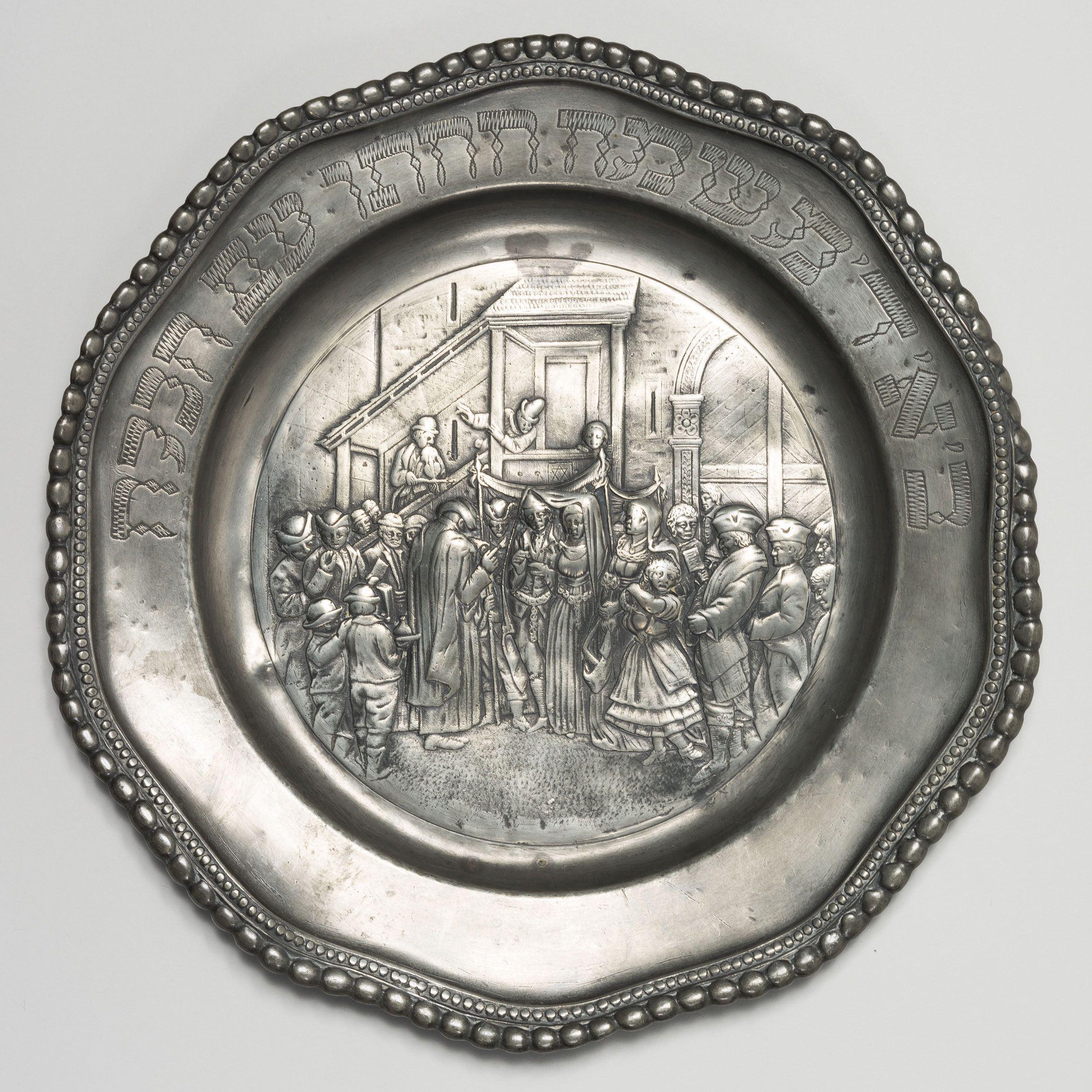
Work
Passover plate
Date
Second half of the eighteenth century, with later additions
Artist
Unknown
Place Made
Schwäbisch Hall, Germany
Medium
Repoussé, punched, and engraved pewter
Credit Line
Gift of the Danzig Jewish Community, D 111
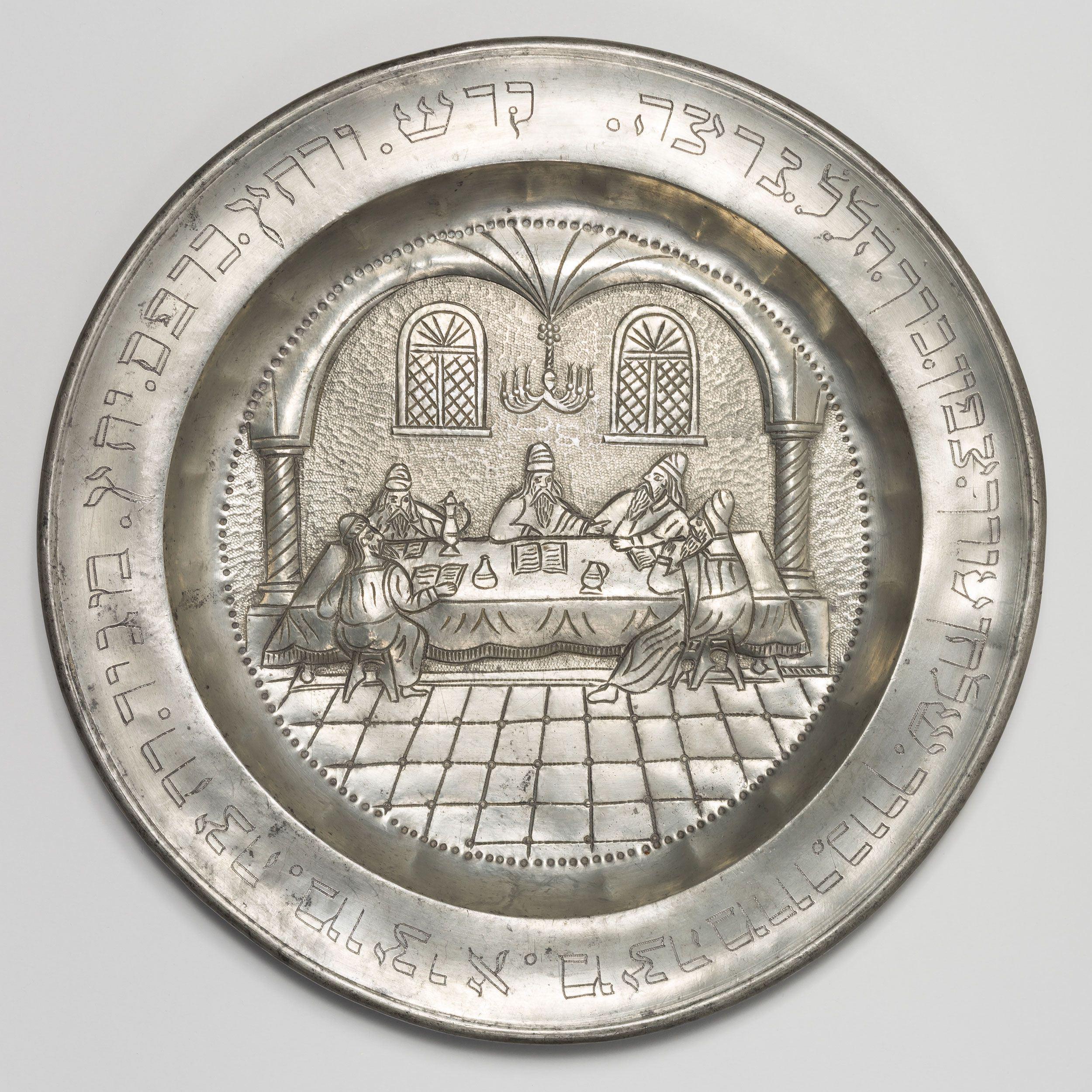
Work
Sukkot plate
Date
Late nineteenth century
Artist
Unknown
Place Made
Germany?
Medium
Cast and engraved pewter
Credit Line
Gift of Dr. Harry G. Friedman, F 767
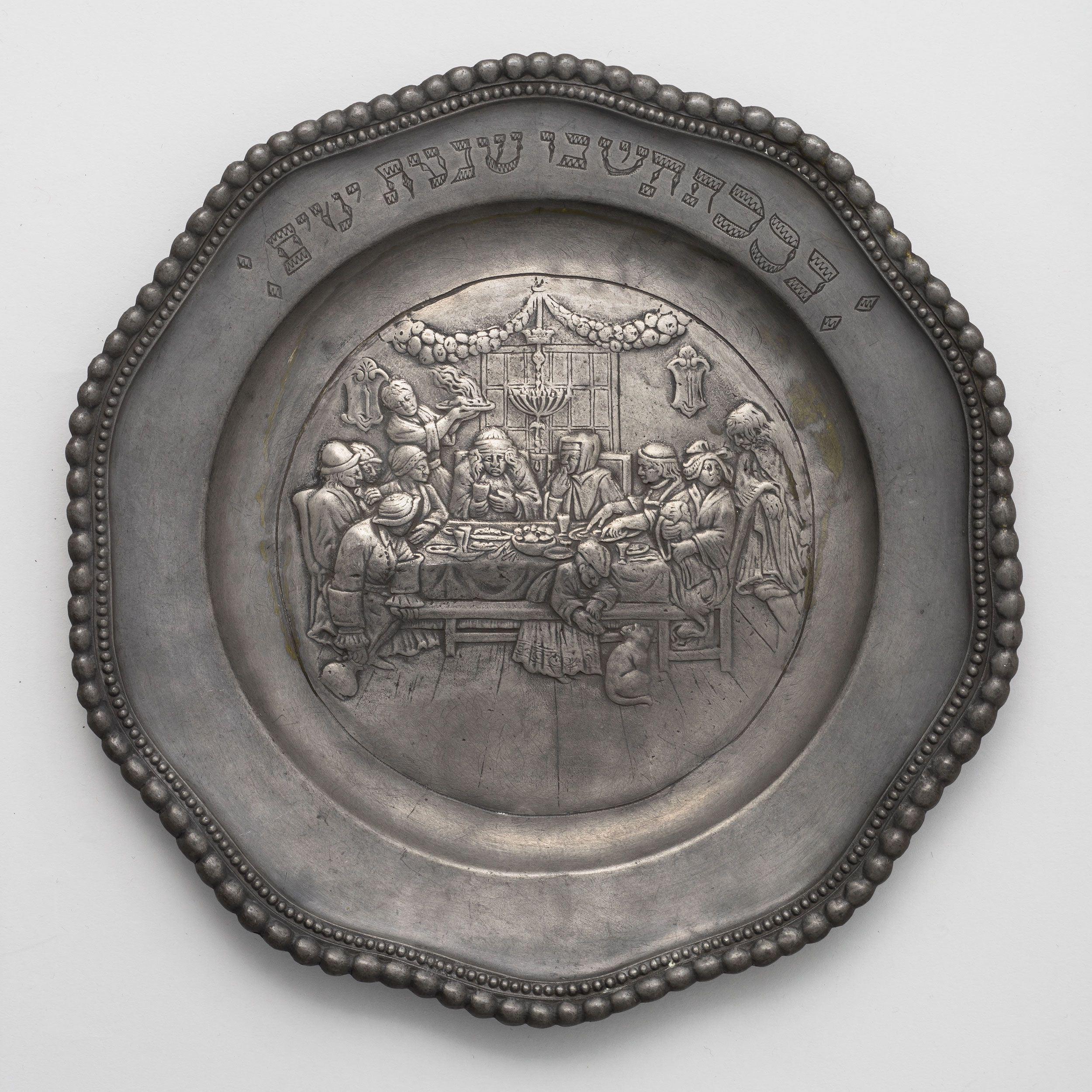
Work
Passover plate
Date
Between 1770 and 1776, with later engraving
Artist
Sebald Ruprecht III, German, born in 1745, active through 1776
Place Made
Augsburg, Germany
Medium
Engraved and repoussé pewter
Credit Line
Gift of Dr. Harry G. Friedman, F 2804
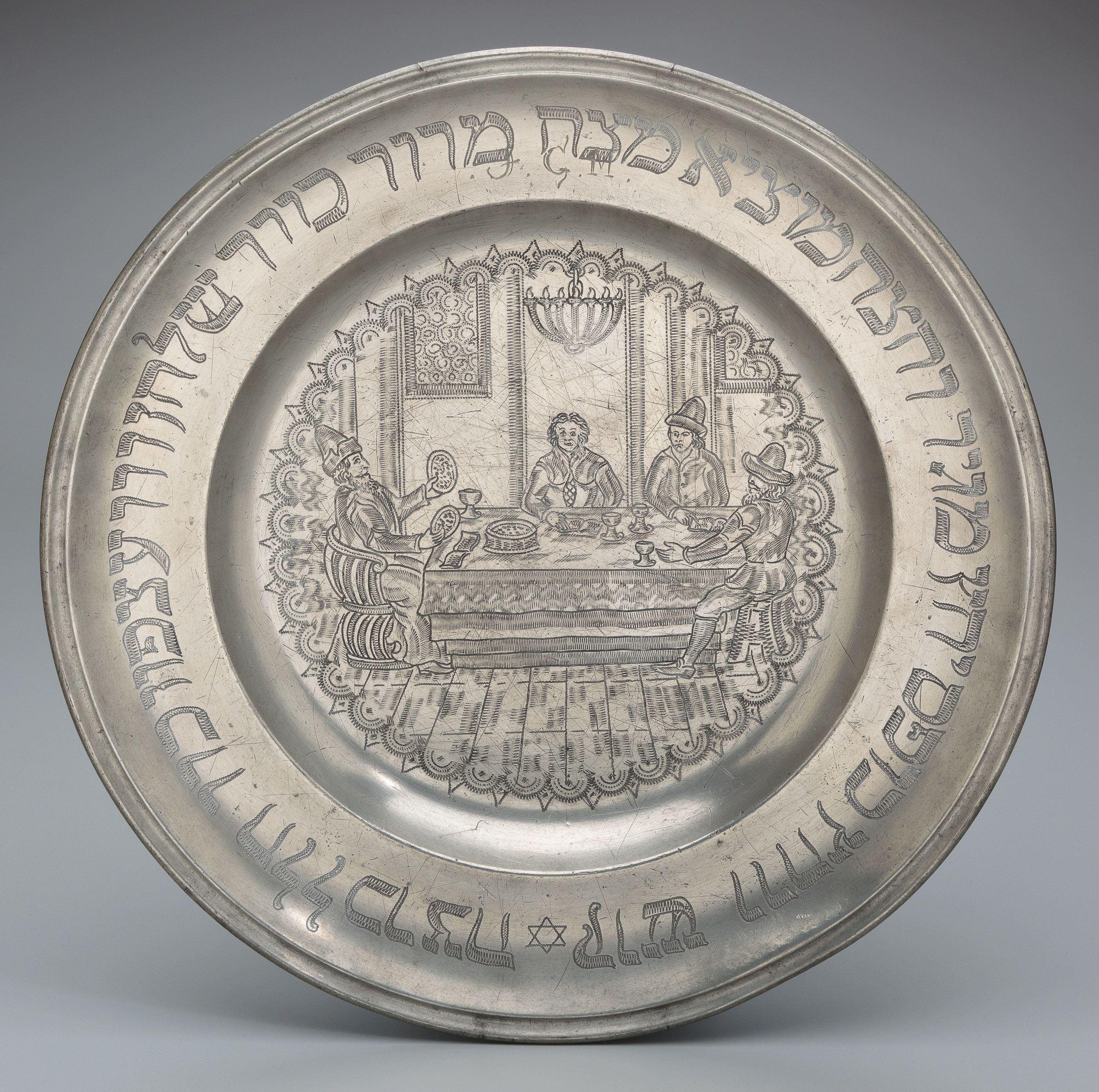
Work
Etrog container
Date
Between 1850 and 1875
Artist
Unknown
Place Made
Europe, possibly England
Medium
Repoussé, cast, applied, and chased silver
Credit Line
Gift of Kallia H. Bokser in memory of Dr. Baruch Micah Bokser, 1991-27a-b
This piece is stamped “Tiffany” and “Old Silver.” Although Tiffany occasionally sold antiques, the company has no record of this container.

Work
Etrog container
Date
1896
Artist
Unknown
Place Made
Russia
Medium
Parcel-gilt, cast, and chased silver
Credit Line
Gift of Dr. Harry G. Friedman, F 2067
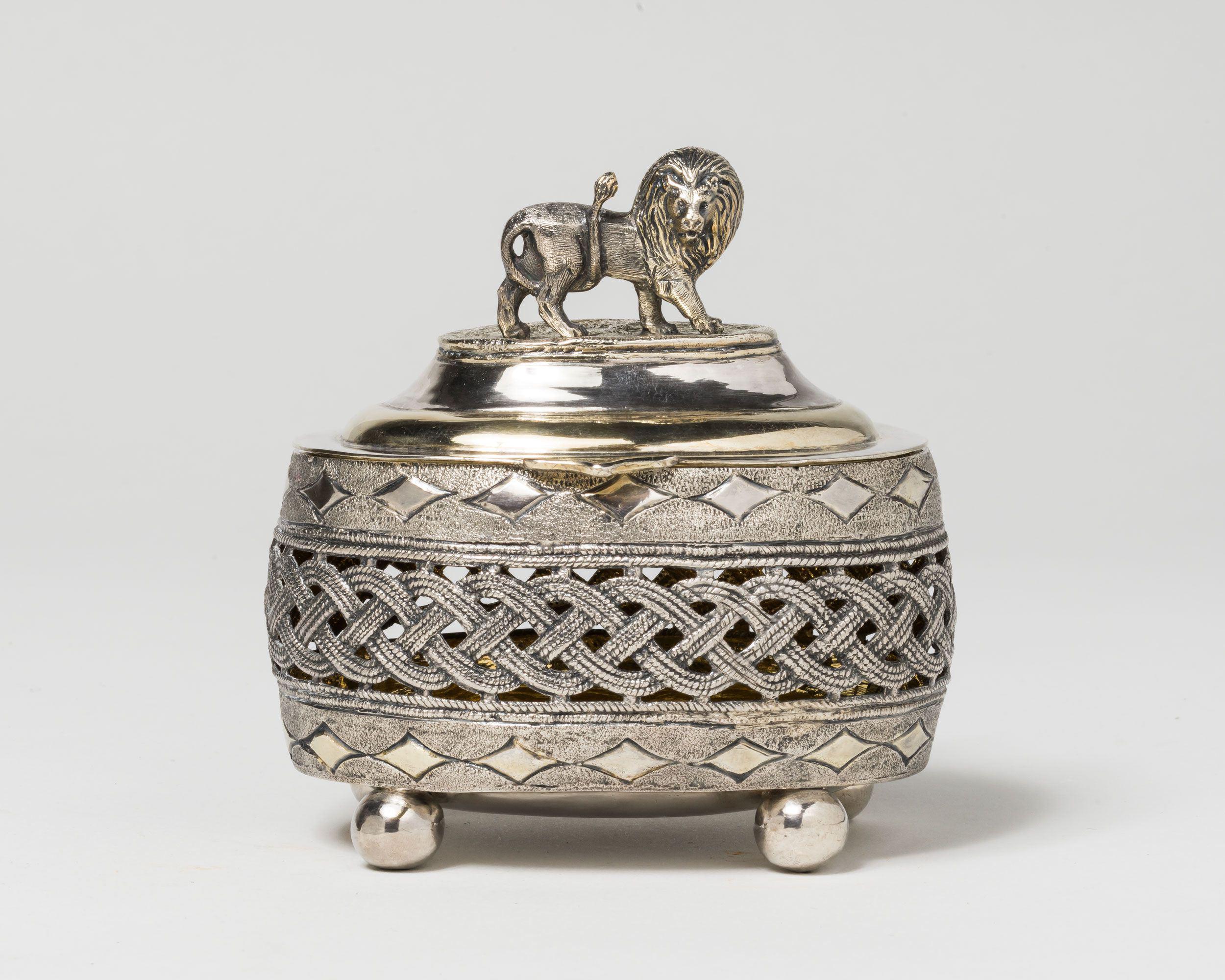
Work
Etrog container
Date
Late nineteenth century
Artist
Unknown, stamped with the maker’s initials K B
Place Made
Germany
Medium
Chased and gilt silver
Credit Line
Gift of Dr. Harry G. Friedman, F 4390
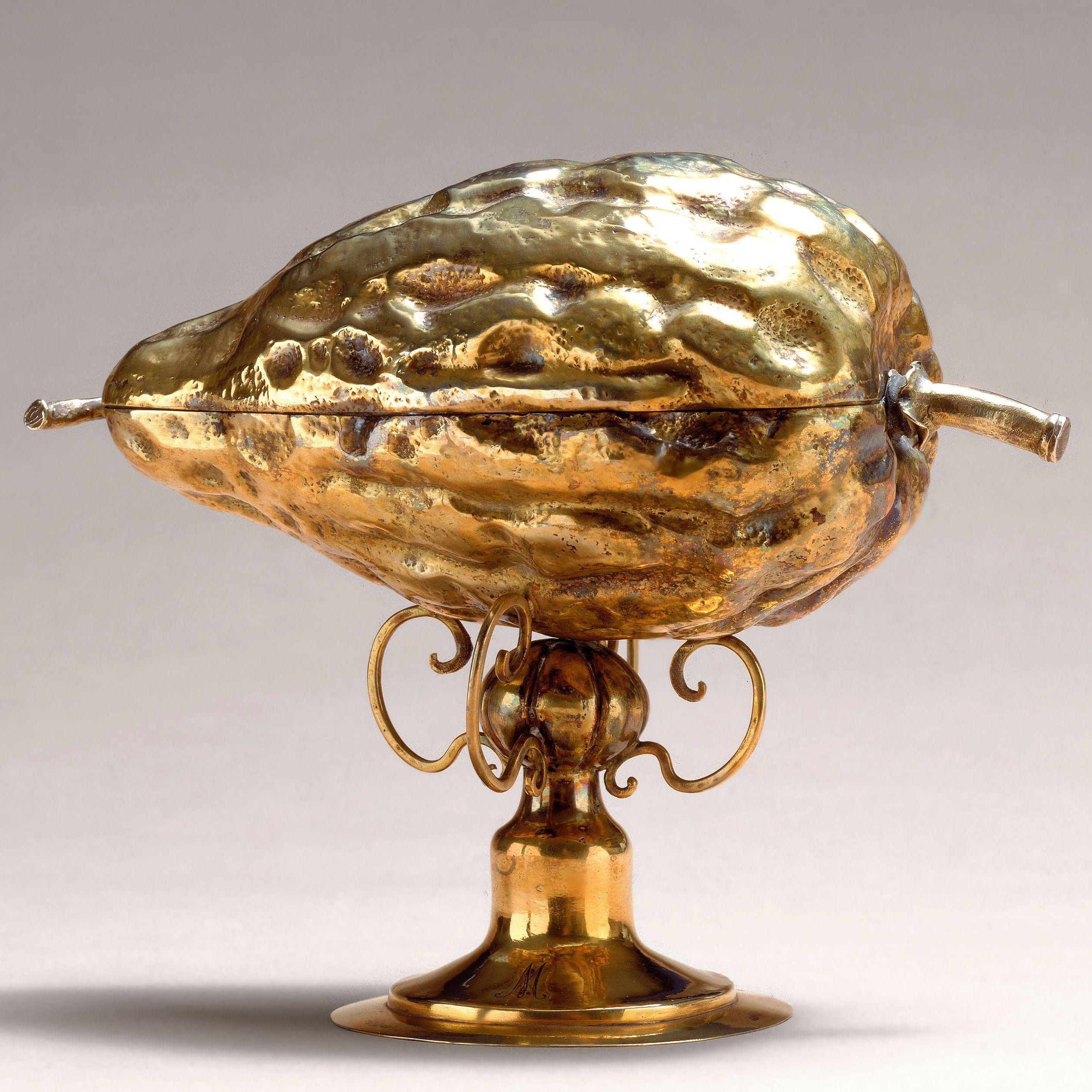
Work
Etrog container
Date
Between 1888 and 1930
Artist
Unknown
Place Made
Germany
Medium
Chased and engraved silver
Credit Line
Gift of Dr. Harry G. Friedman, F 2659
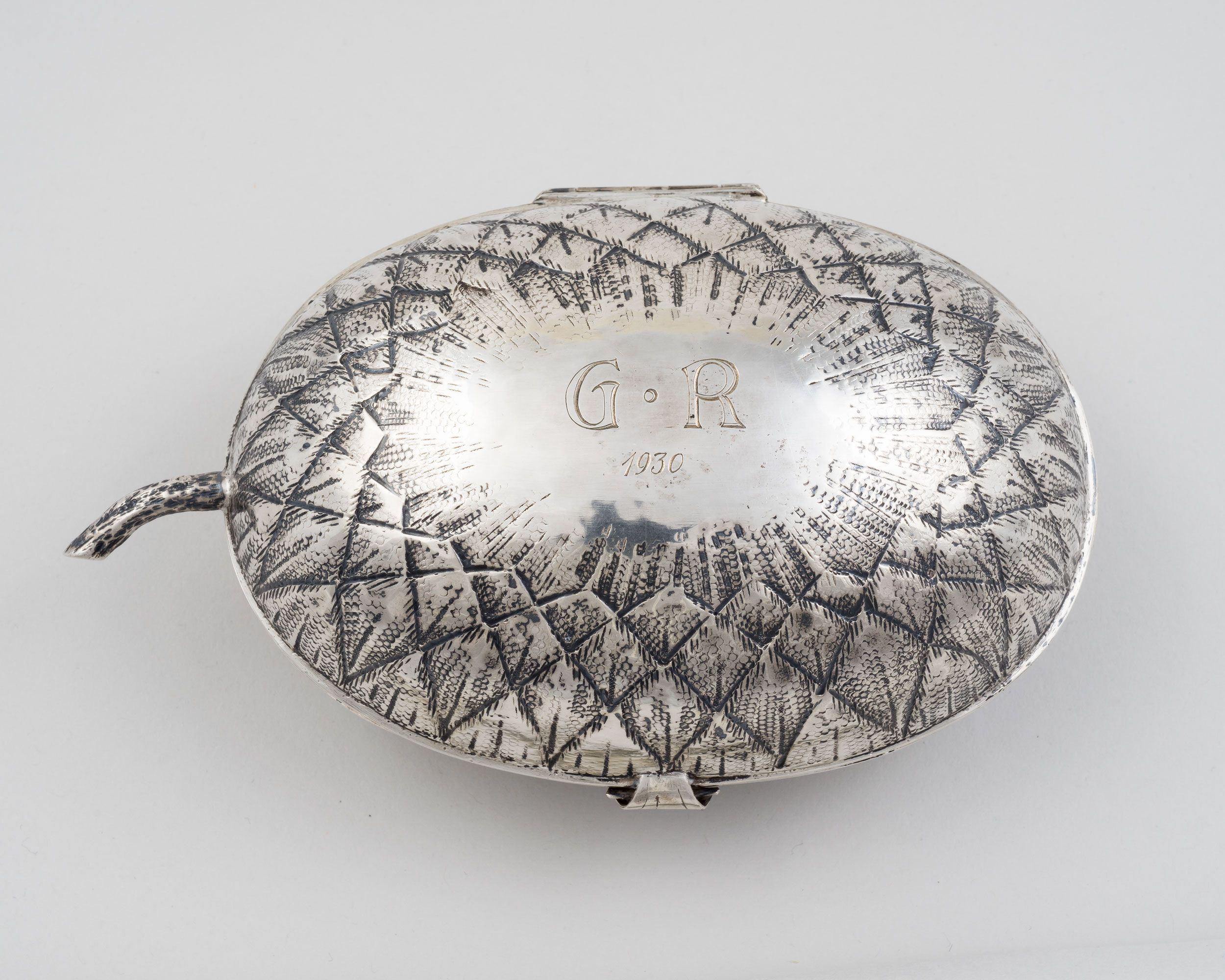
Work
Etrog container
Date
1903
Artist
Unknown, stamped with the maker’s initials C H
Place Made
Netherlands
Medium
Chased, engraved, and cast silver
Credit Line
Gift of Mrs. Celia Rosenfelt in honor of Dr. Harry G. Friedman, F 2856
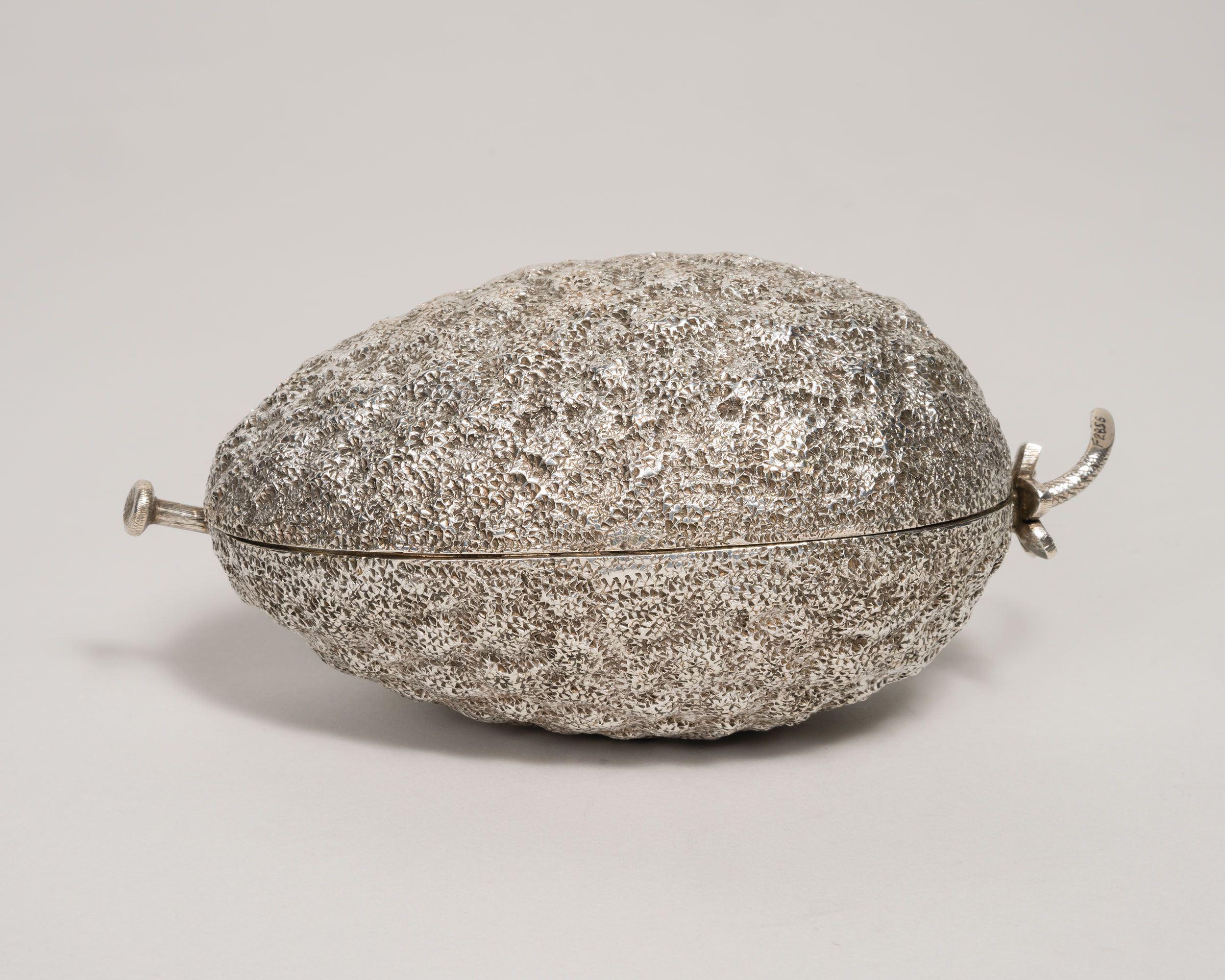
Work
Etrog container
Date
c. 1923
Artist
Unknown, fabricated by the Württembergische Metallwarenfabrik (WMF), founded in Geislingen, Germany, 1853
Place Made
Geislingen, Germany
Medium
Silver-plated and die-cast copper alloy
Credit Line
Gift of Dr. Harry G. Friedman, F 4343
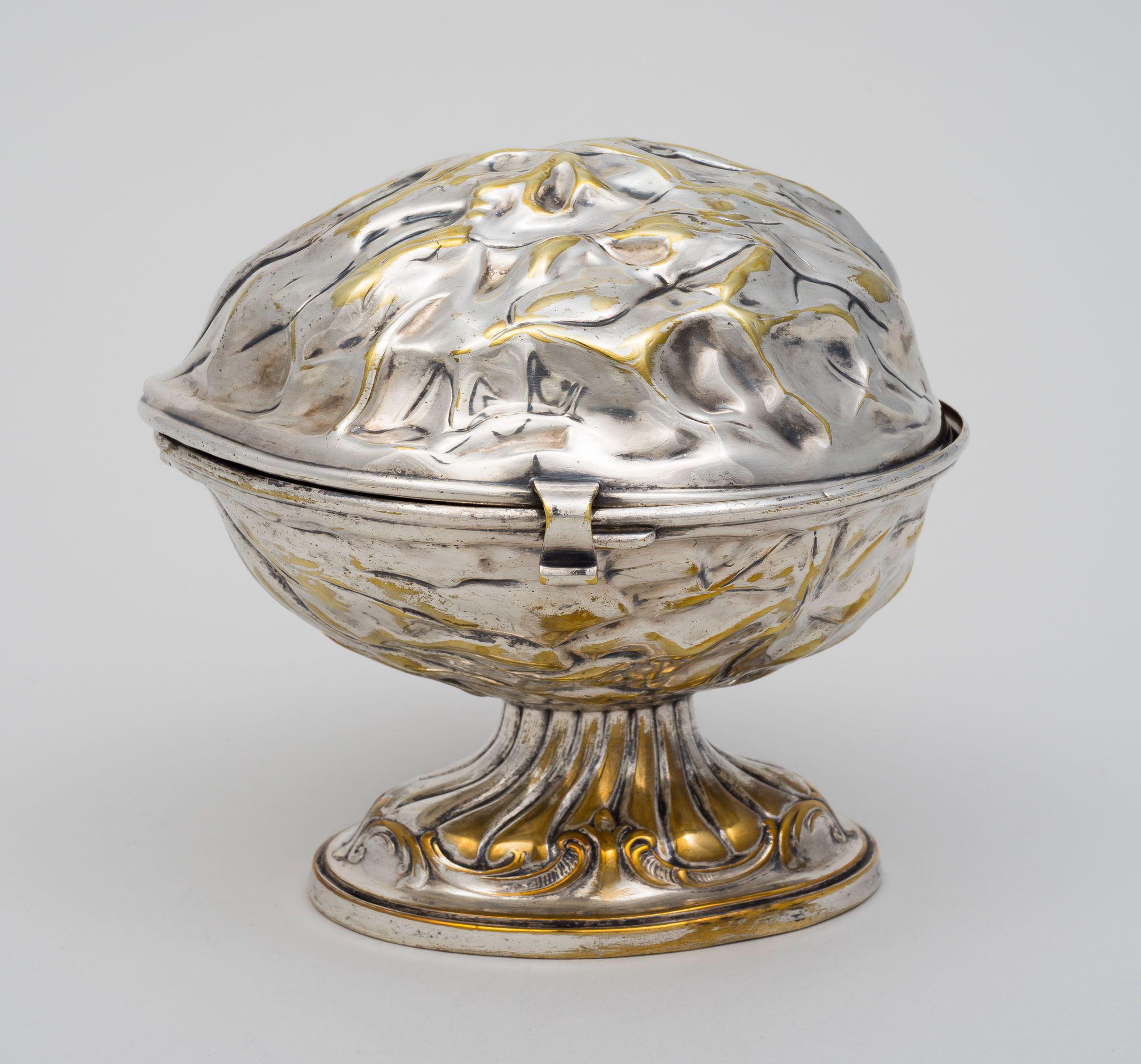
Work
Etrog container
Date
Late nineteenth century
Artist
Unknown
Place Made
Poland?
Medium
Repoussé, chased, and applied silver
Credit Line
Gift of the Danzig Jewish Community, D 74
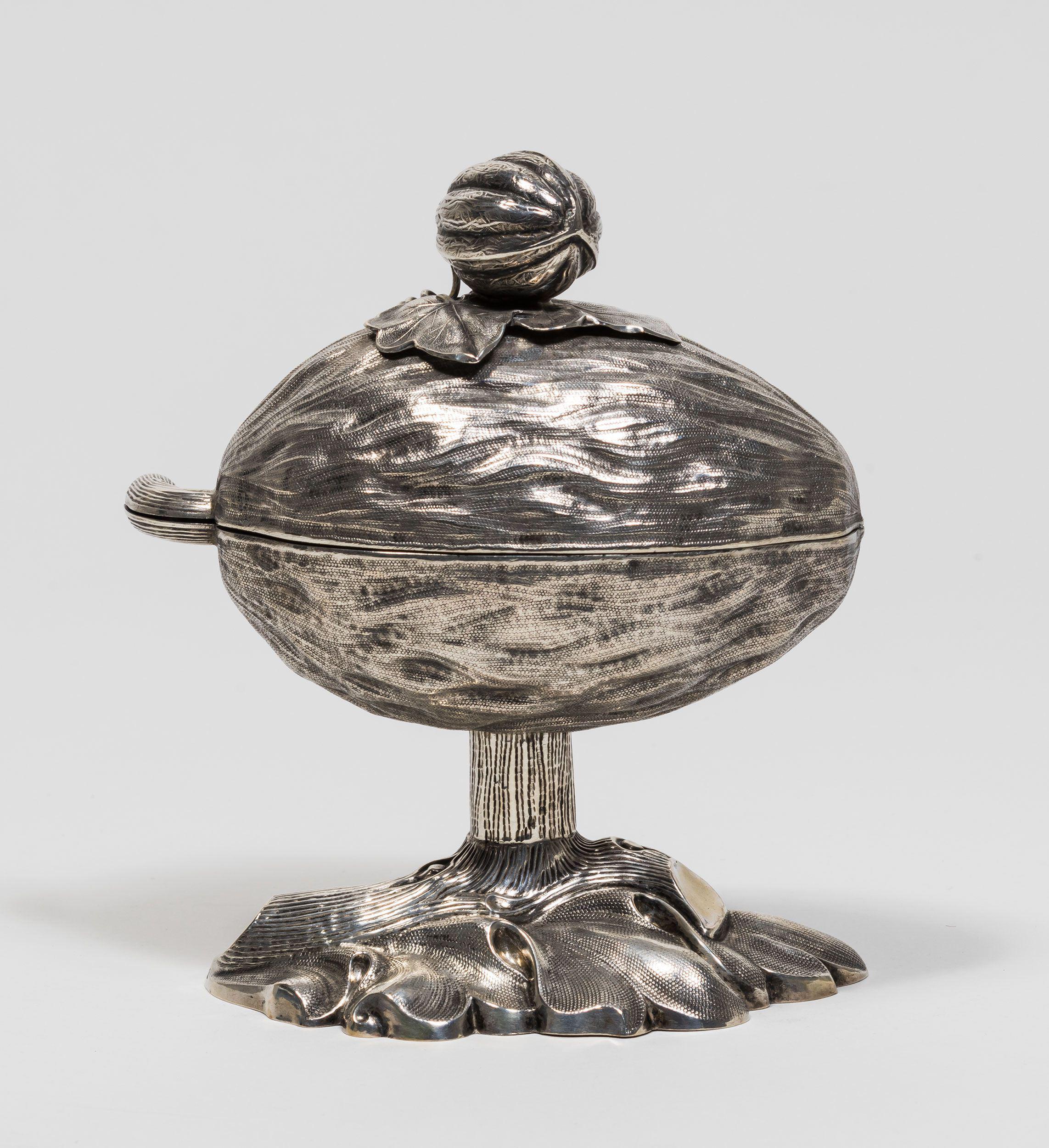
Work
Etrog container
Date
c. 1900
Artist
Firm of Fraget
Founded in Warsaw, 1824, closed in 1961
Place Made
Warsaw
Medium
Die-stamped, chased, and silver-plated copper alloy
Credit Line
Purchase: Hubert Brandt and the Albert Nordheimer Trust Fund Gifts, 1990-52
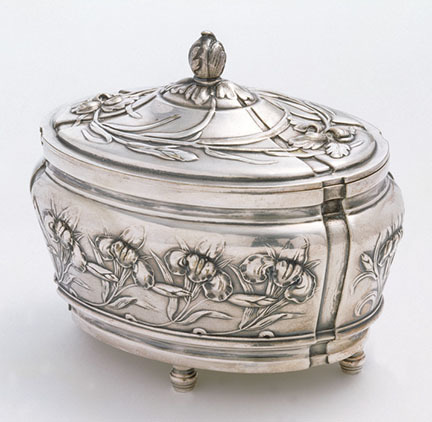
Work
Container, possibly for an etrog
Date
Early twentieth century
Artist
Unknown
Place Made
Damascus?
Medium
Silver- and copper-plated?, engraved, and traced copper alloy with wood and mother-of-pearl inlay
Credit Line
Gift of Dr. Harry G. Friedman, F 2380

Work
Etrog container
Date
Mid- to late nineteenth century
Artist
Unknown
Place Made
Bohemia (now Czech Republic), Austrian Empire
Medium
Blown, cut, engraved, pressed, and painted glass
Credit Line
The Rose and Benjamin Mintz Collection, M 361

Work
Arrowhead
Date
Between the seventh and fourth century BCE
Artist
Unknown
Place Made
Probably Israel
Medium
Cast bronze
Credit Line
Gift of the Betty and Max Ratner Collection, 1981-133

Work
Arrowhead
Date
c. 1200 BCE
Artist
Unknown
Place Made
Israel
Medium
Cast bronze
Credit Line
Gift of Bernard and Tzila Weiss, 1994-644
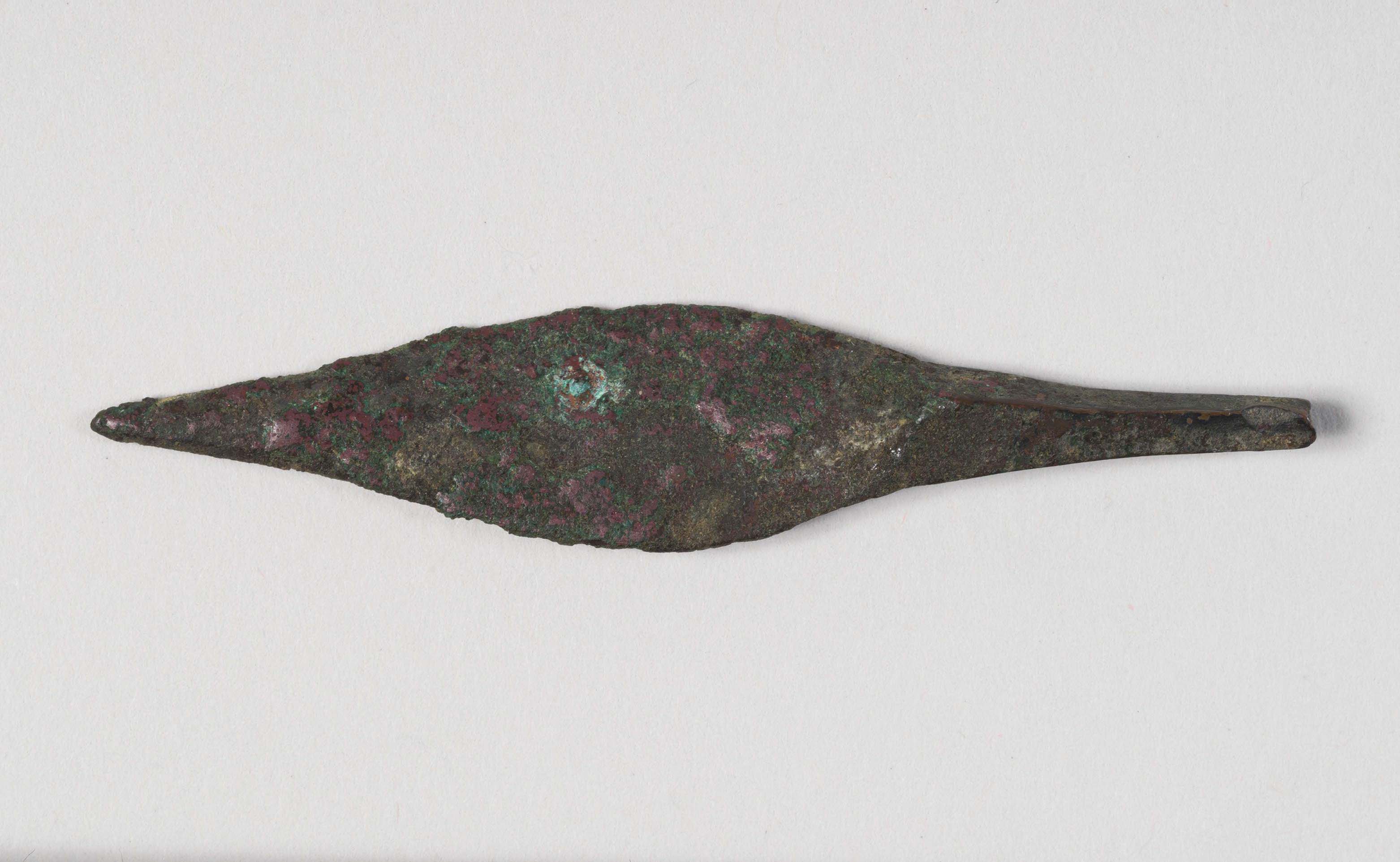
Work
Arrowhead
Date
c. 1200 BCE
Artist
Unknown
Place Made
Israel
Medium
Cast bronze
Credit Line
Gift of the Betty and Max Ratner Collection, 1981-60
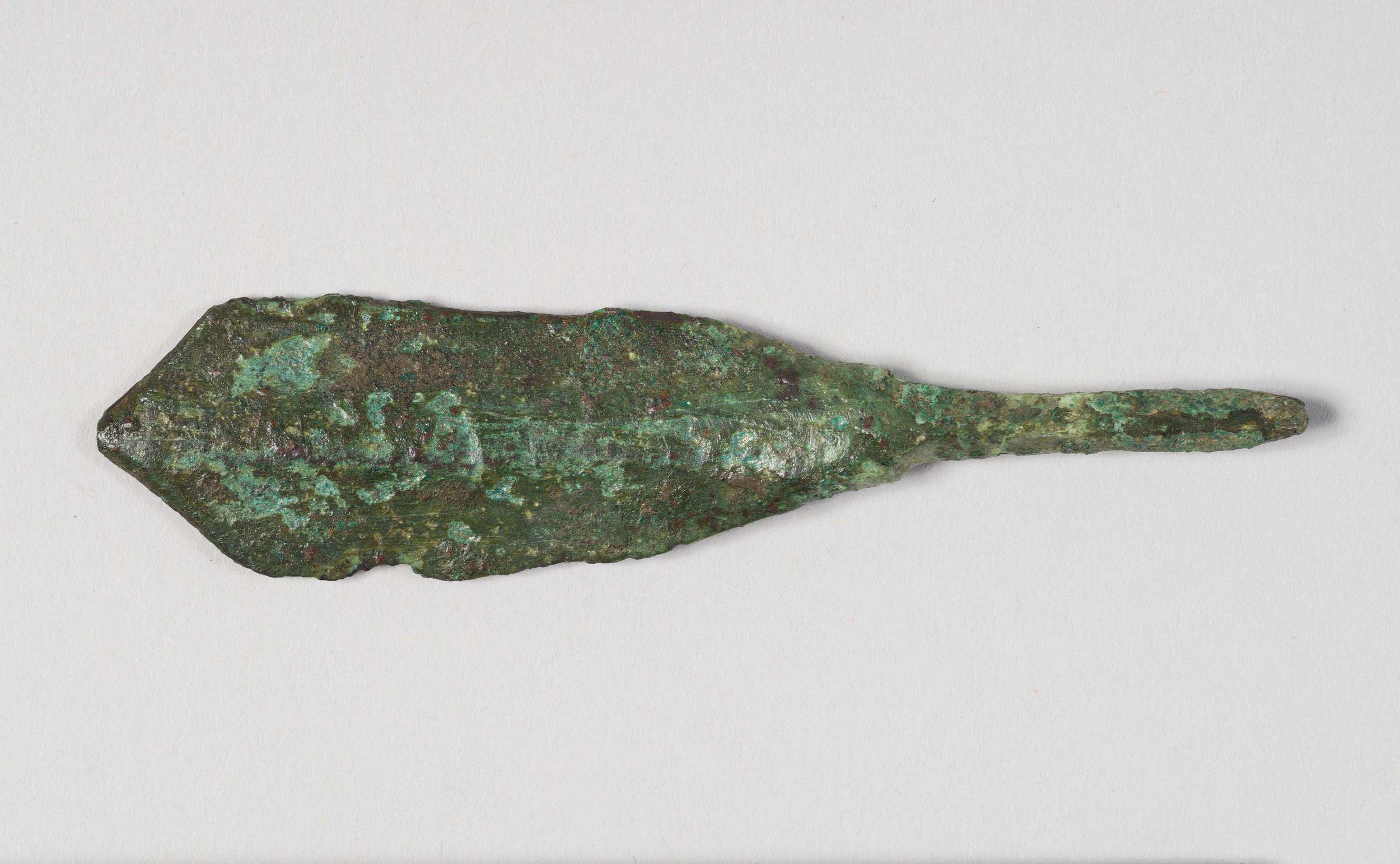
Work
Scraper
Date
Between 2200 and 2000 BCE
Artist
Unknown
Place Made
Israel
Medium
Cast bronze
Credit Line
Gift of the Betty and Max Ratner Collection, 1981-139
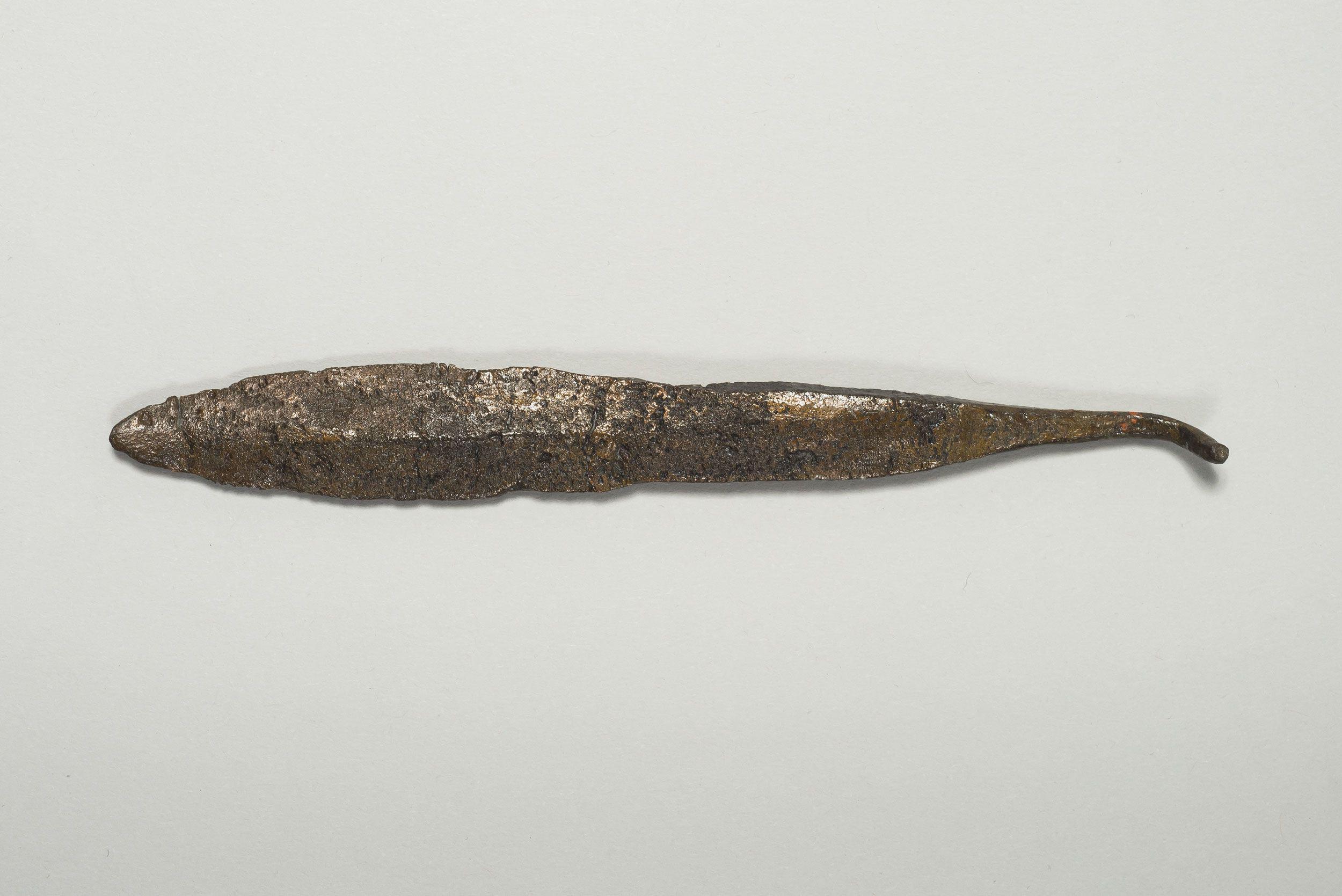
Work
Blade
Date
Between the sixth and fifth millennium BCE
Artist
Unknown
Place Made
Israel
Medium
Chipped flint
Credit Line
Purchase: Archaeology Acquisition Fund, JM 12-73.313

Work
Blade
Date
Between the sixth and fifth millennium BCE
Artist
Unknown
Place Made
Israel
Medium
Chipped flint
Credit Line
Purchase: Archaeology Acquisition Fund, JM 12-73.317

Work
Blade
Date
Between the sixth and fifth millennium BCE
Artist
Unknown
Place Made
Gaza
Medium
Chipped flint
Credit Line
Purchase: Archaeology Acquisition Fund, JM 12-73.325

Work
Blade
Date
Between the sixth and fifth millennium BCE
Artist
Unknown
Place Made
Israel
Medium
Chipped chert
Credit Line
Purchase: Archaeology Acquisition Fund, JM 12-73.311
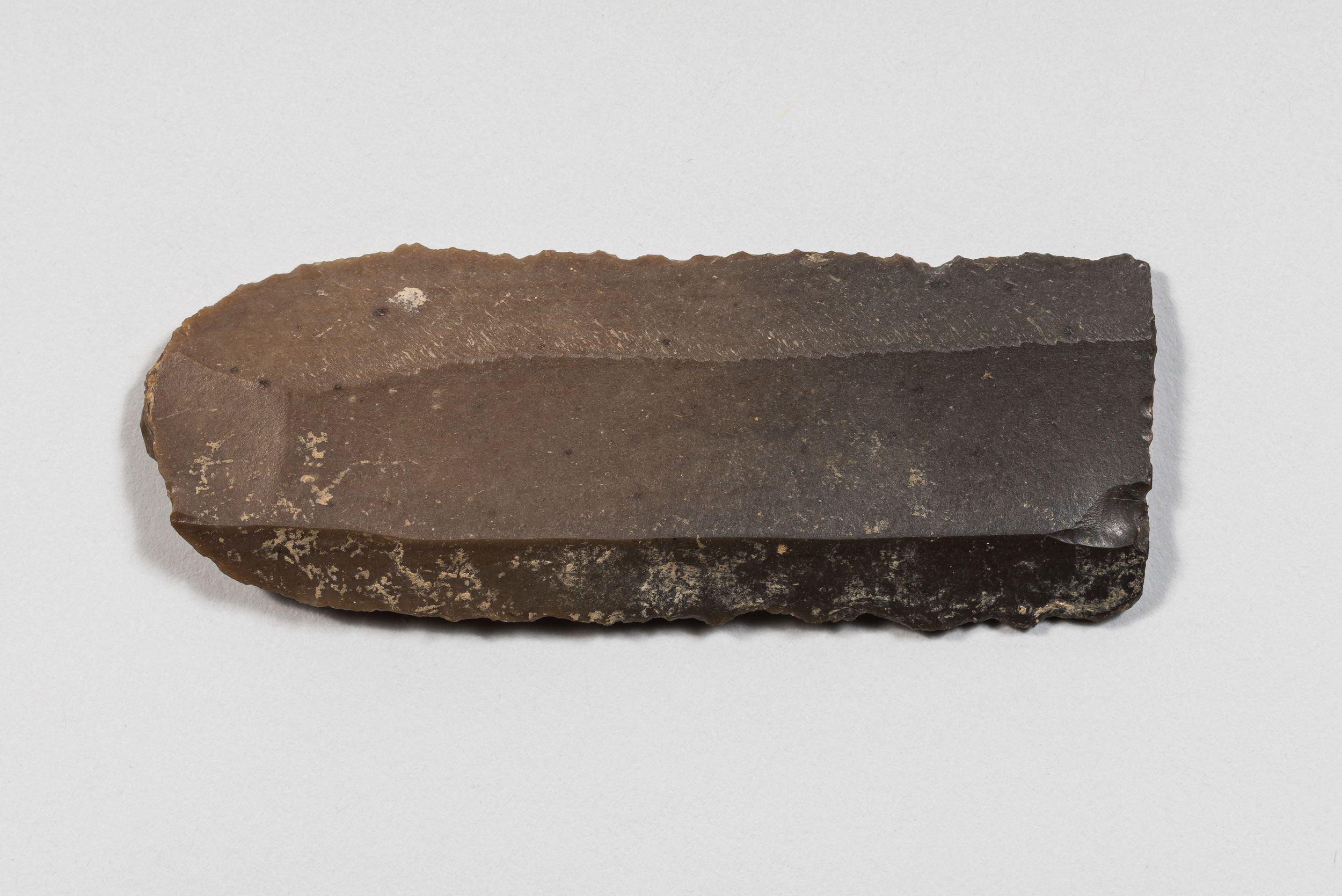
Work
Blade
Date
Between the sixth and fifth millennium BCE
Artist
Unknown
Place Made
Gaza
Medium
Chipped flint
Credit Line
Purchase: Archaeology Acquisition Fund, JM 12-73.322
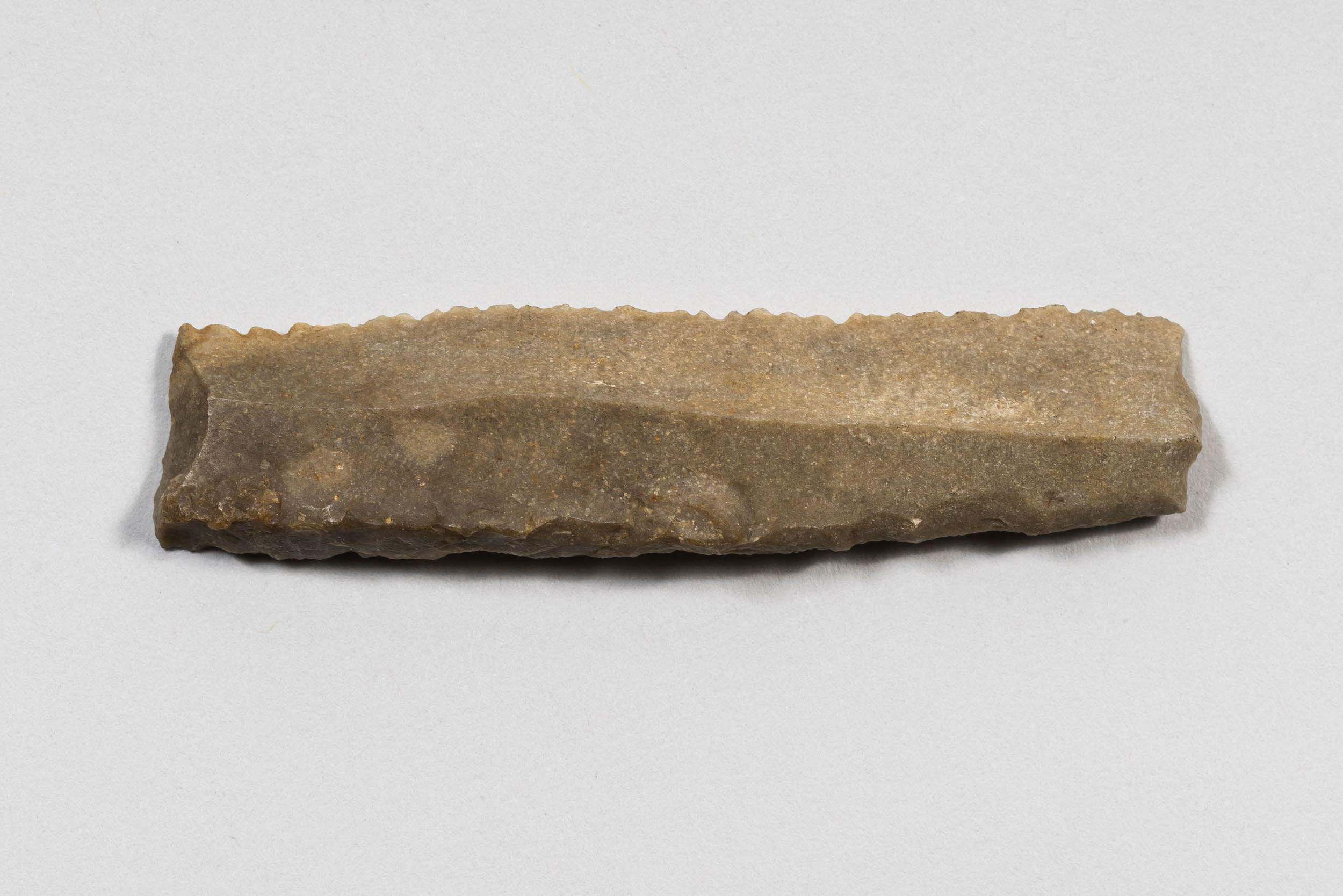
Work
Blade
Date
Between the sixth and fifth millennium BCE
Artist
Unknown
Place Made
Gaza
Medium
Chipped flint
Credit Line
Purchase: Archaeology Acquisition Fund, JM 12-73.327
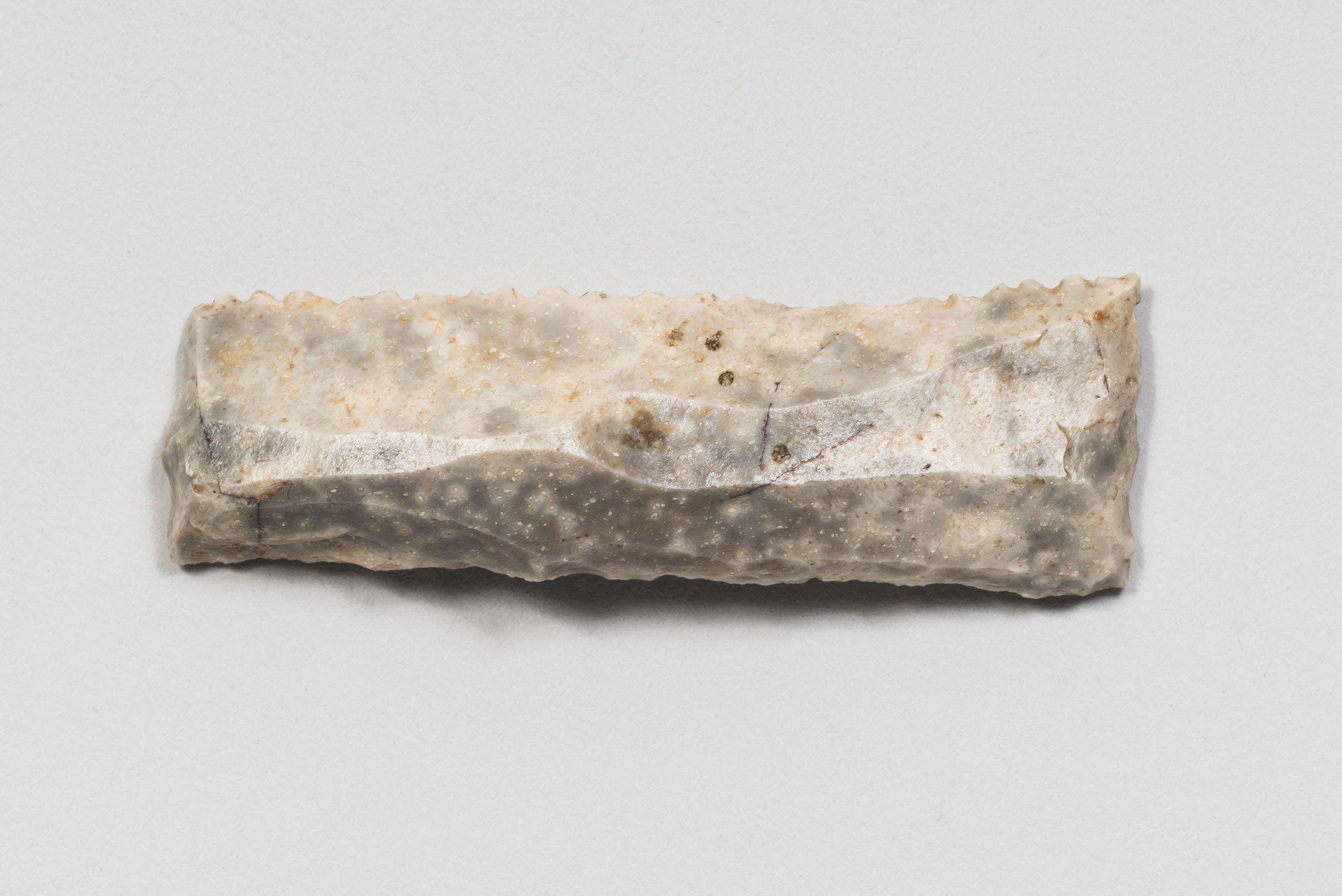
Work
Blade
Date
Between the sixth and fifth millennium BCE
Artist
Unknown
Place Made
Gaza
Medium
Chipped flint
Credit Line
Purchase: Archaeology Acquisition Fund, JM 12-73.326

Work
Arrowhead
Date
Between the sixth and fifth millennium BCE
Artist
Unknown
Place Made
Gaza
Medium
Chipped flint
Credit Line
Purchase: Archaeology Acquisition Fund, JM 12-73.385.1

Work
Six-gera weight
Date
Between the late eighth and early sixth century BCE
Artist
Unknown
Place Made
Israel
Medium
Carved limestone
Credit Line
Gift of David Hendin, JM 58-79
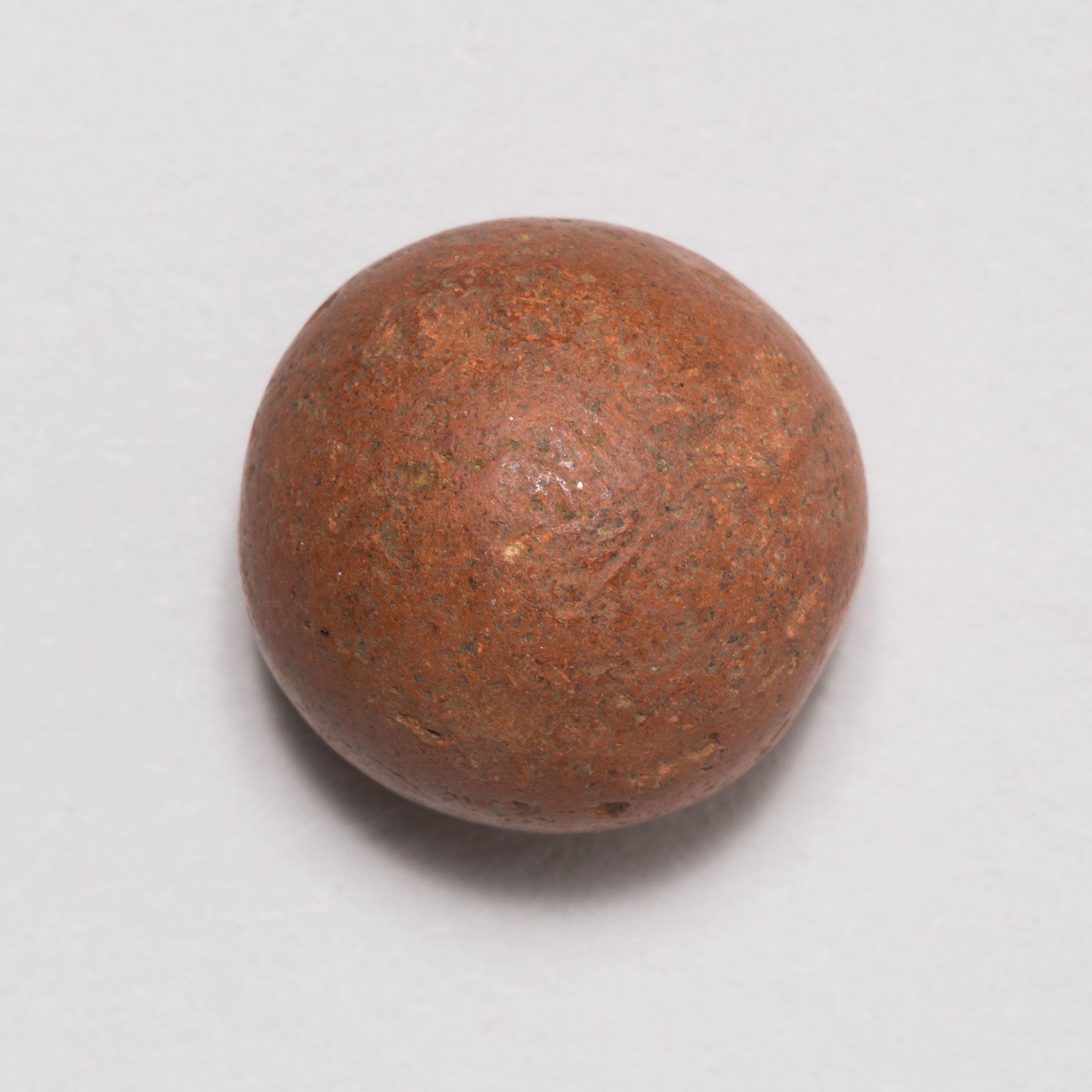
Work
Mortar and grinder
Date
Between 1400 and 586 BCE
Artist
Unknown
Place Made
Israel
Medium
Ground basalt
Credit Line
Gift of the Betty and Max Ratner Collection, 1983-215a-b

Work
Jar handle with the stamp of a Judaean king
Date
Late eighth century BCE
Artist
Unknown
Place Made
Israel
Medium
Wheel-formed, stamped, and fired clay
Credit Line
Purchase: Archaeology Acquisition Fund, JM 12-73.282
This handle came from a storage jar stamped “[belonging] to the king, [Heb]r[on],” along with an image of a scarab. The king in question was probably Hezekiah.

Work
Jar handle with the stamp of the official Nahum, son of Abdi
Date
Late eighth century BCE
Artist
Unknown
Place Made
Israel
Medium
Wheel-formed, stamped, and fired clay
Credit Line
Purchase: Archaeology Acquisition Fund, JM 12-73.281

Work
Jar handle with the stamp of a Judaean king
Date
Late eighth century BCE
Artist
Unknown
Place Made
Israel
Medium
Wheel-formed, stamped, and fired clay
Credit Line
Purchase: Archaeology Acquisition Fund, JM 12-73.273
This handle came from a storage jar stamped “[belonging] to the king, [Soc]oh,” along with an image of a scarab. The king in question was probably Hezekiah.
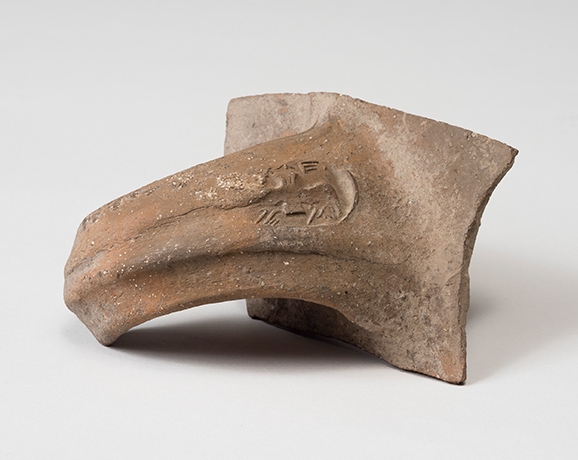
Work
Seal of A. Einhorn and impression
Date
Nineteenth century?
Artist
Unknown
Place Made
Europe?
Medium
Engraved carnelian, wax, fabric, leather, and paper
Credit Line
Gift of Dr. Harry G. Friedman, F 3190
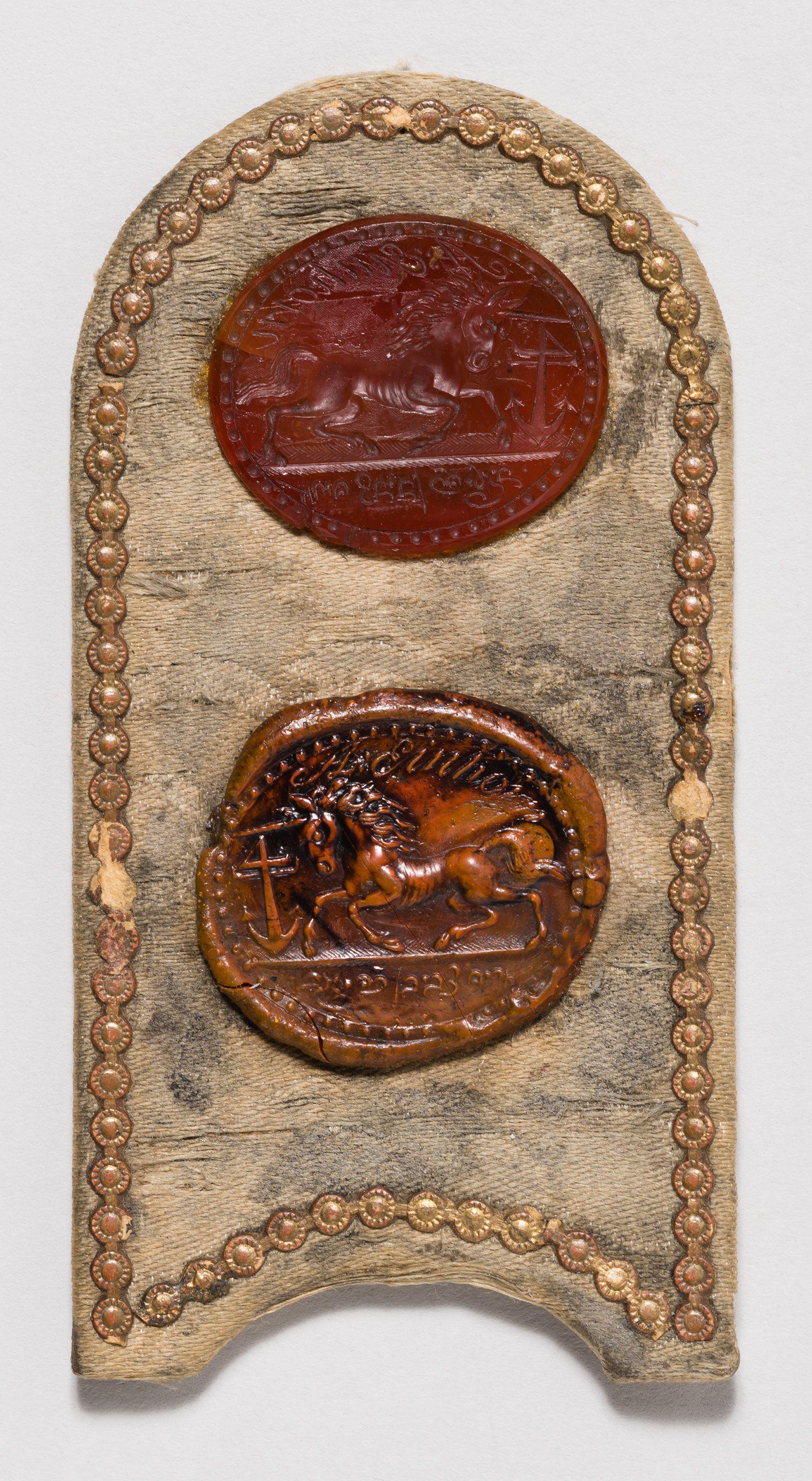
Work
Jar handle with the stamp of the priest Ainesidamos
Date
Between 220 and 180 BCE
Artist
Unknown
Place Made
Rhodes
Medium
Wheel-turned, slipped, stamped, and fired clay
Credit Line
Gift of the Betty and Max Ratner Collection, 1982-20
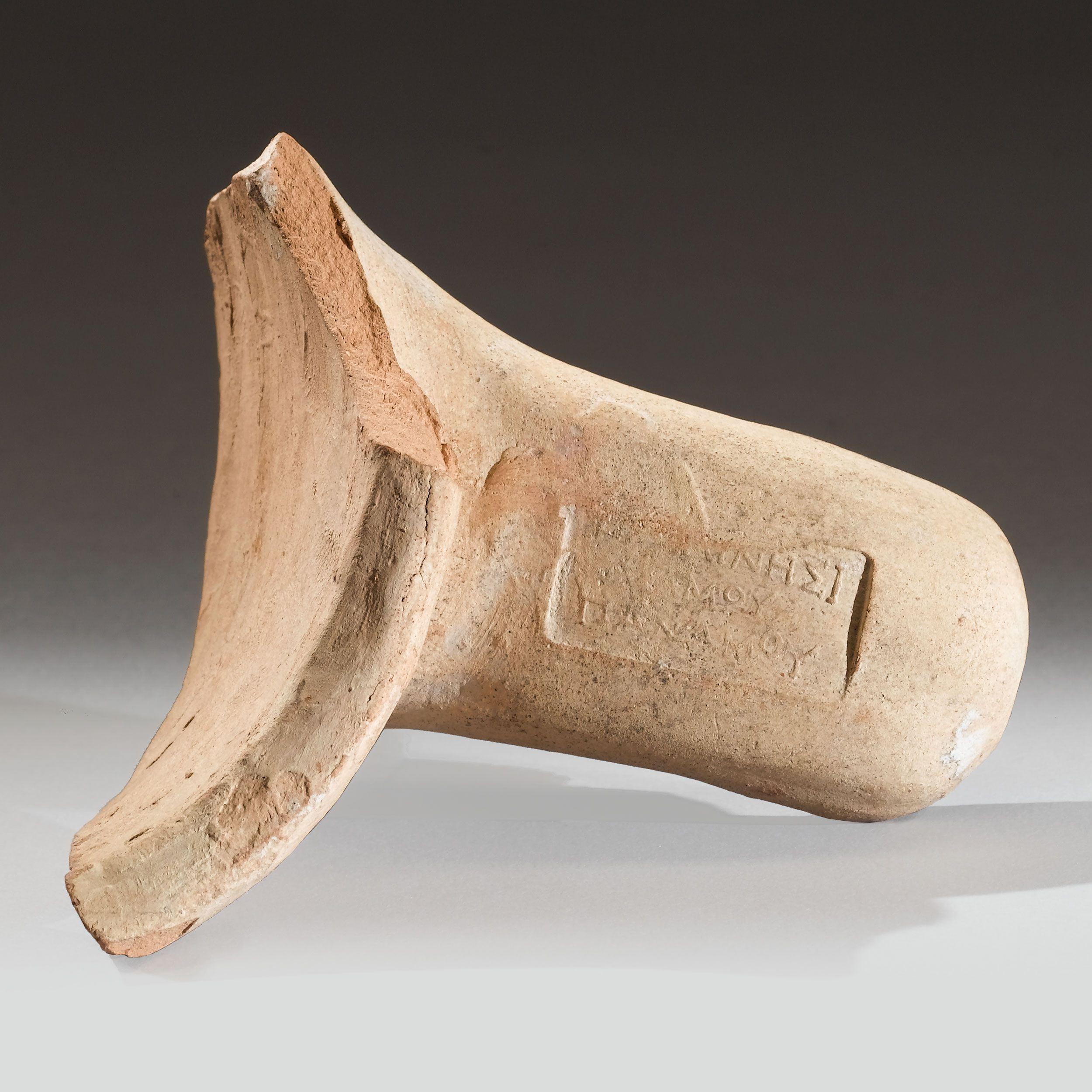
Work
Jar handle with the stamp of the vintner Menandros
Date
Between 110 and 80 BCE
Artist
Unknown
Place Made
Rhodes
Medium
Wheel-turned, slipped, stamped, and fired clay
Credit Line
Gift of the Betty and Max Ratner Collection, 1982-21

Work
Seal impression of Isaac bar Ada
Date
Modern cast; original: first half of the first millennium CE
Artist
Unknown
Place Made
Original: Persia (now Iran)
Medium
Painted plaster
Credit Line
Gift of Daniel M. Friedenberg, 1997-49

Work
Seal impression of Hillel bar Menashe
Date
Modern cast; original: between the fourth and seventh century CE
Artist
Unknown
Place Made
Original: Persia (now Iran)
Medium
Wax
Credit Line
1997-51
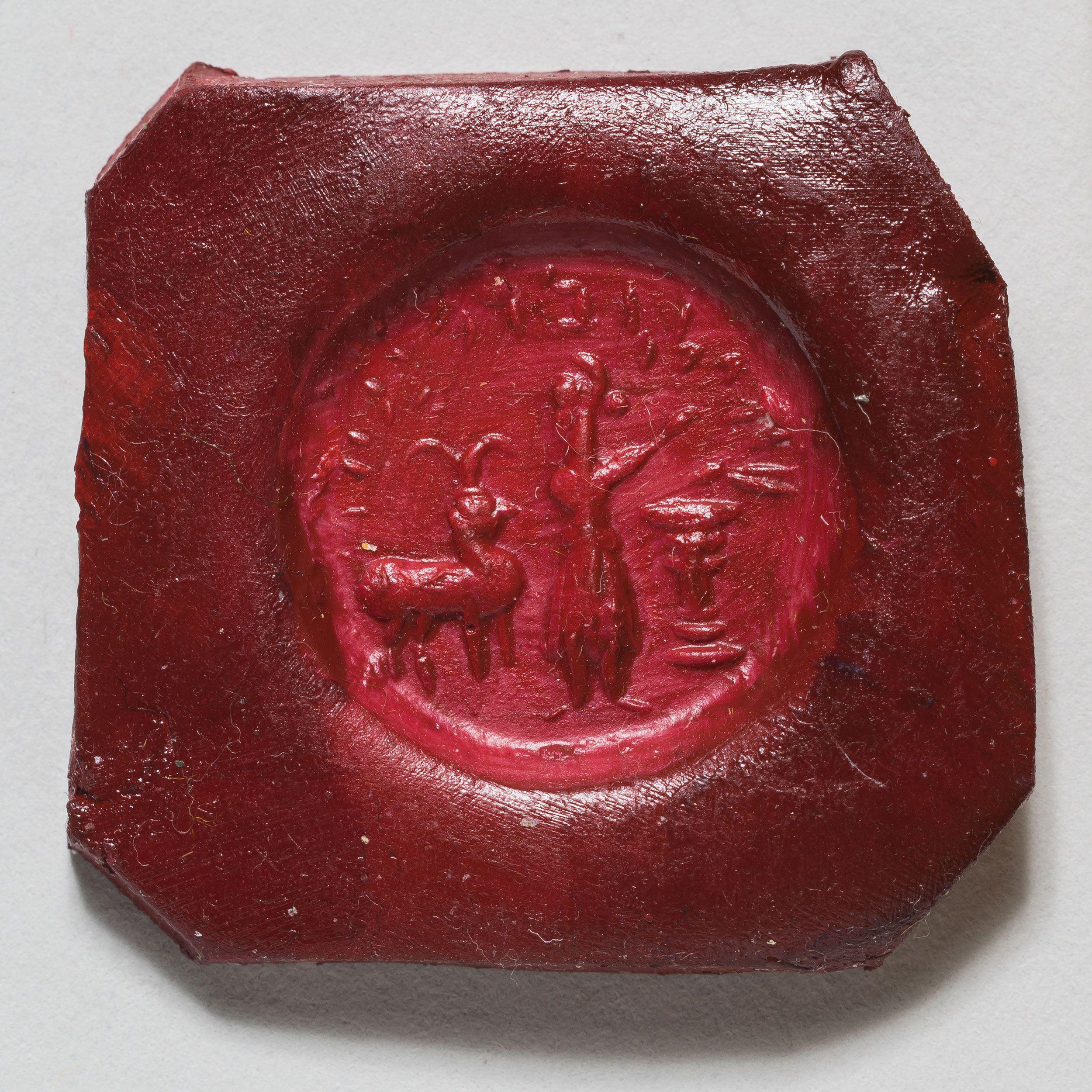
Work
Seal impression of Albert, deacon of the church of Halberstadt, Germany
Date
Modern cast; original impression: 1292
Artist
Unknown
Place Made
Original: Halberstadt, Germany
Medium
Plastic
Credit Line
Gift of Daniel M. Friedenberg, 1994-709
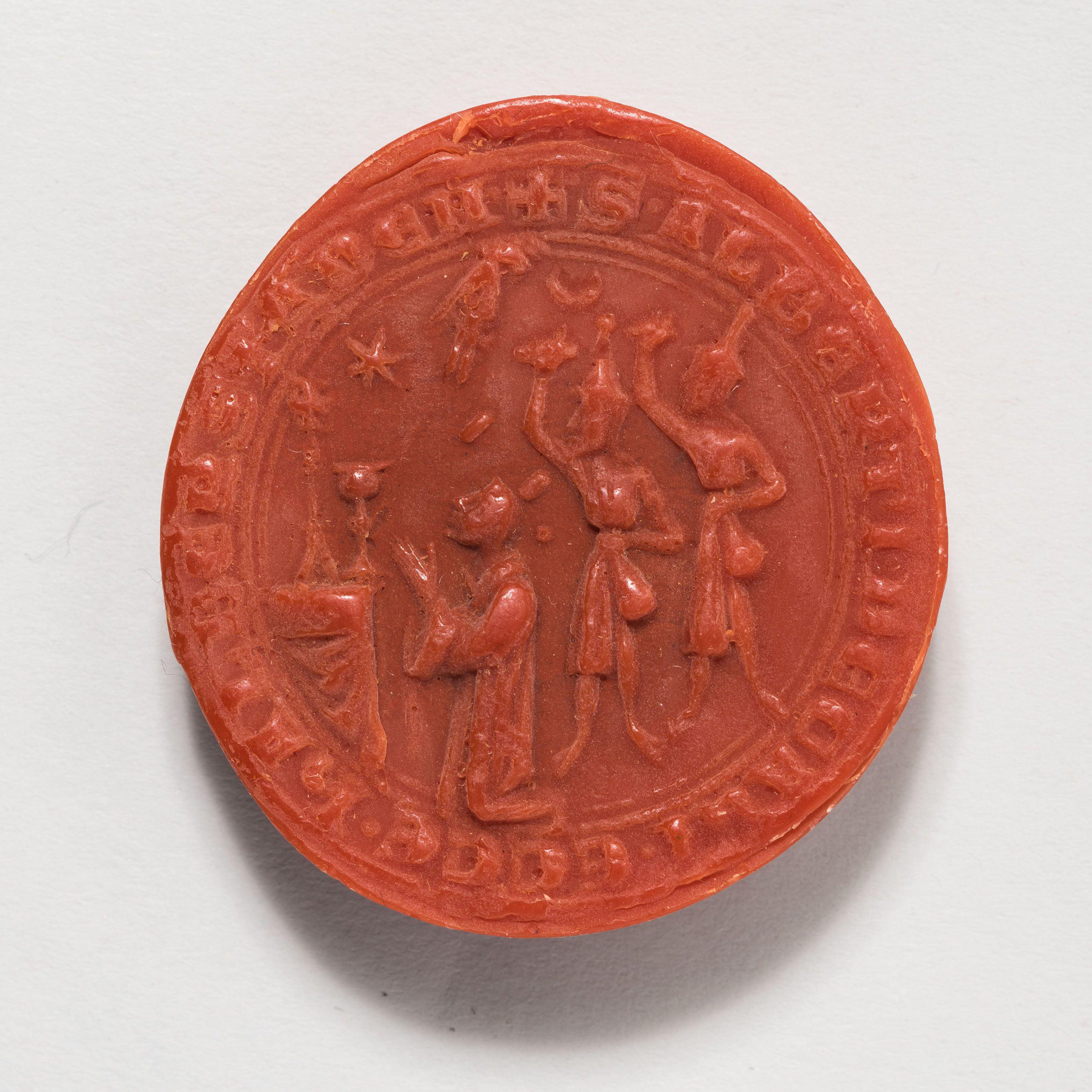
Work
Seal impression of Benveniste ben Moshe Al Gabirol
Date
Modern cast; original: late fourteenth or fifteenth century
Artist
Unknown
Place Made
Original: Spain
Medium
Painted plaster
Credit Line
Gift of Daniel M. Friedenberg, 1996-78
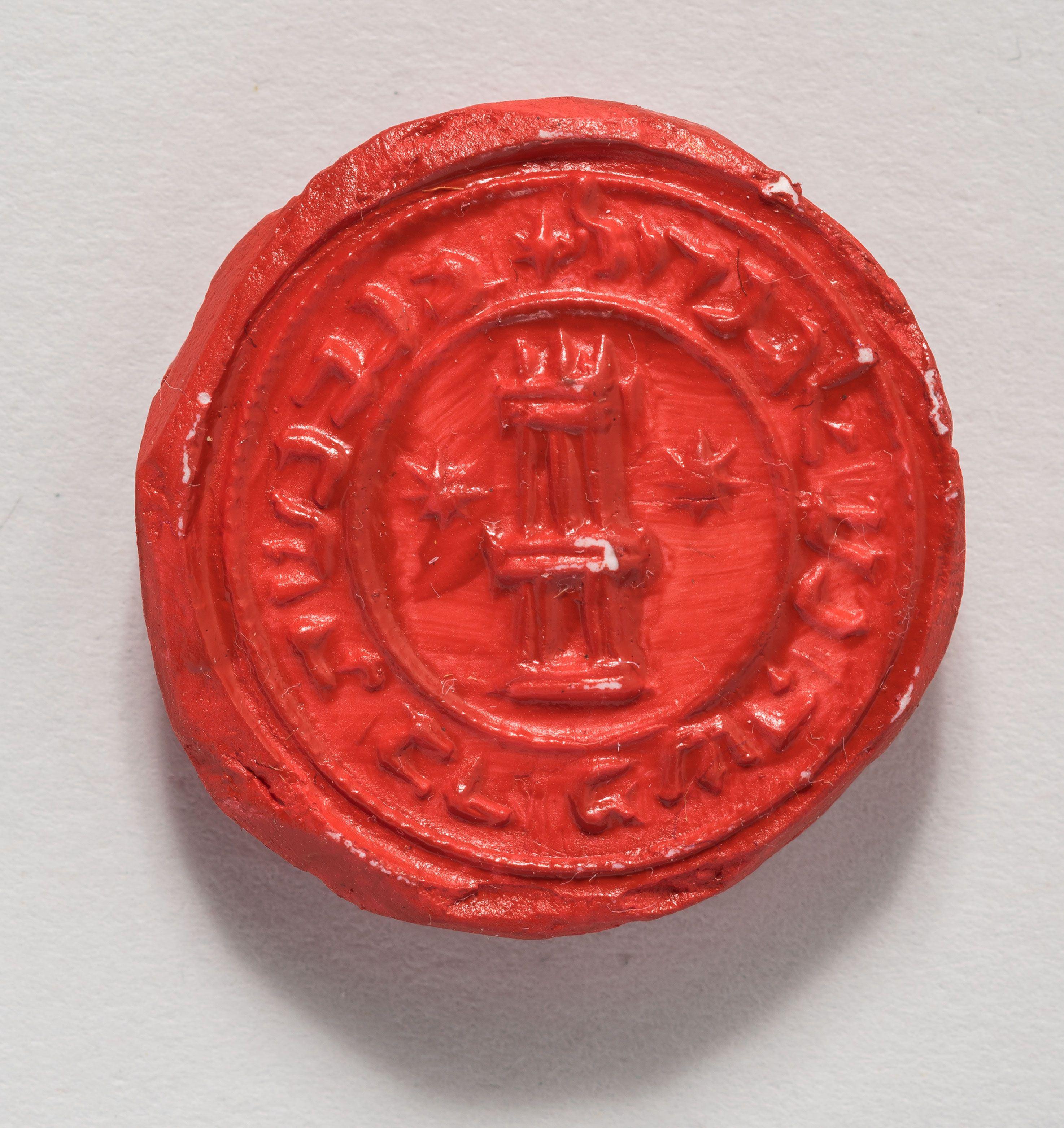
Work
Seal impression of Gutkind (or Gutkint) the Jew
Date
Modern cast; original impression: 1388
Artist
Unknown
Place Made
Original: Hildburghausen, Germany
Medium
Wax
Credit Line
Gift of Daniel M. Friedenberg, 1995-109

Work
Seal impression of Abba son of Malkha?
Date
Modern cast; original: between the fourth and seventh century CE
Artist
Unknown
Place Made
Original: Persia (now Iran)
Medium
Plaster
Credit Line
Gift of Daniel M. Friedenberg, 1997-192

Work
Seal of David Aflalo
Date
Early nineteenth century
Artist
Unknown
Place Made
Gibraltar
Medium
Ivory and cast copper alloy
Credit Line
Gift of Aaron Berger, 1986-70

Work
Seal of Djemil Schemtob
Date
Early twentieth century
Artist
Unknown
Place Made
Istanbul
Medium
Cast copper alloy
Credit Line
Gift of Irvin Cemil Schick, 2006-23
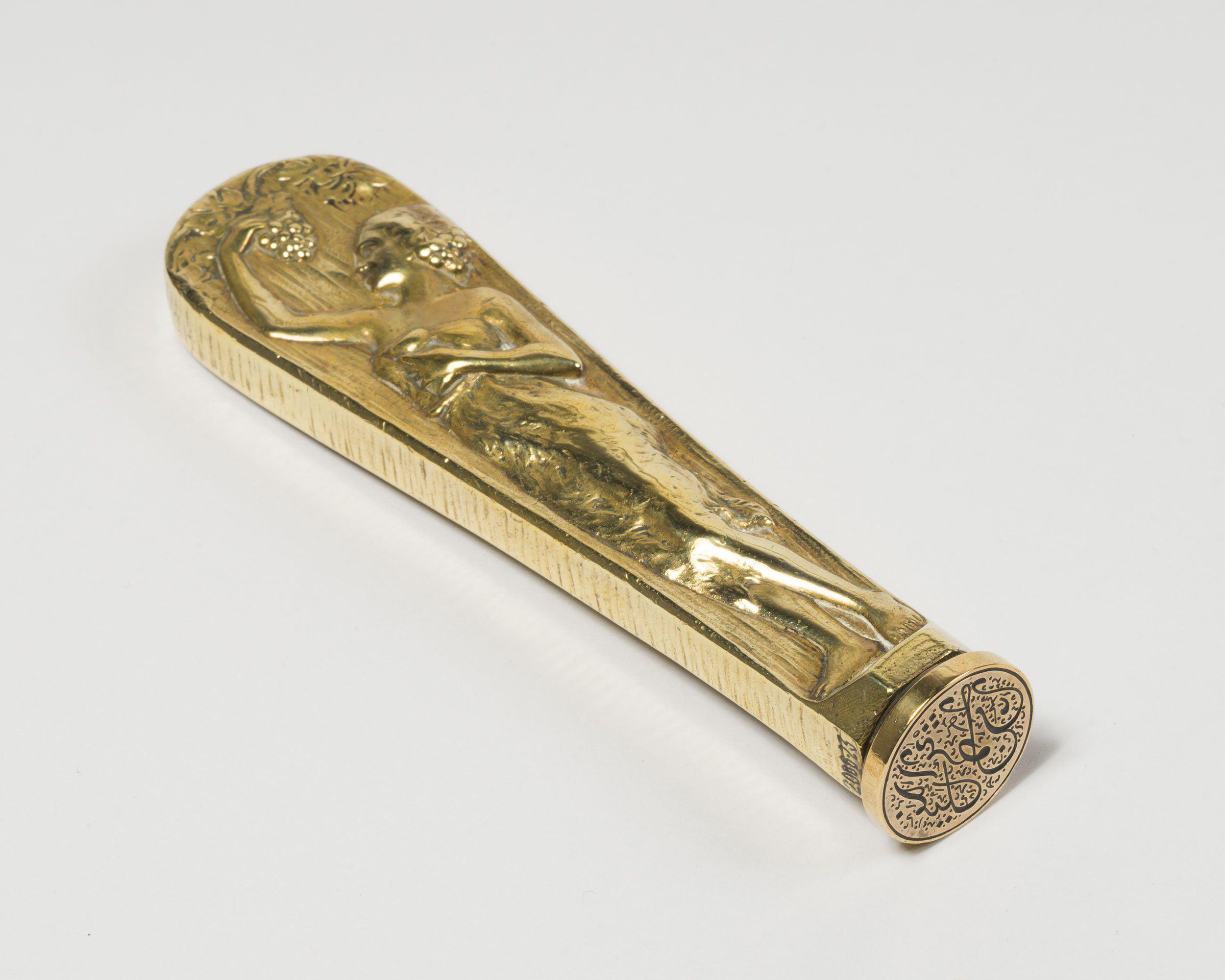
Work
Kosher stamp
Date
Nineteenth century?
Artist
Unknown
Place Made
Rawicz, Poland
Medium
Wood, iron, and cast and engraved copper alloy
Credit Line
The Rose and Benjamin Mintz Collection, M 477
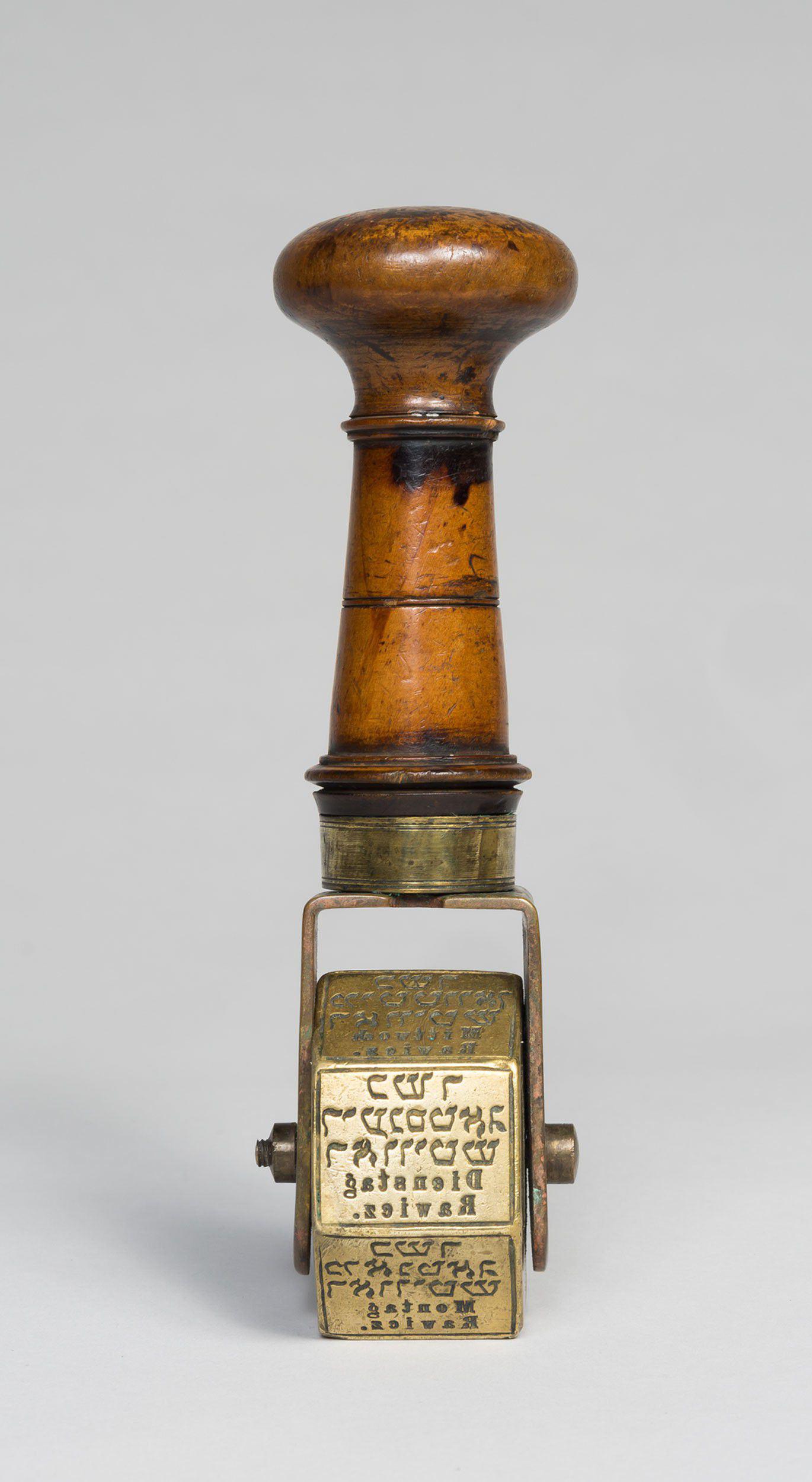
Work
Kosher stamp
Date
Nineteenth century?
Artist
Unknown
Place Made
Europe
Medium
Wood, iron, and copper alloy
Credit Line
Gift of Dr. Harry G. Friedman, F 3734

Work
Knife
Artist
Unknown
Place Made
Europe?
Medium
Steel?, copper alloy, and wood
Credit Line
U 9596

Work
Circumcision knife
Date
Eighteenth century
Artist
Unknown
Place Made
Western Europe
Medium
Agate, steel, and chased silver
Credit Line
Gift of A. C. Moss, JM 8-61d

Work
Ritual slaughter knife and case
Date
c. 1817
Artist
Unknown
Place Made
Europe?
Medium
Knife: steel and painted wood; case: sueded leather, ink, and modern shoelace
Credit Line
Gift of Mrs. Cyrus Adler, S 1168

Work
Ritual slaughter knife
Date
c. 1910
Artist
G. Grunewald, active between the 1890s and 1914
Place Made
Königsberg, Prussia (now Kaliningrad, Russia)
Medium
Steel, bone, and brass
Credit Line
Gift of Ilse Anschel née Michel in memory of her father Moses Michel, formerly of Merxheim / Nahe, Germany, 1993-187a-b
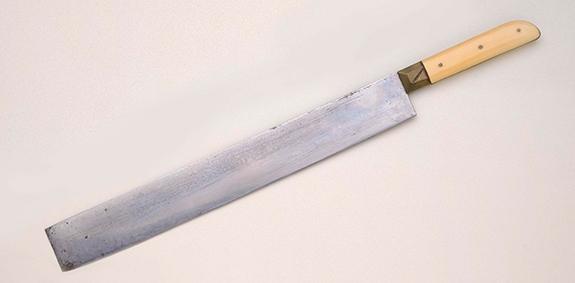
Work
Circumcision knife and case
Date
c. 1720
Artist
Unknown
Place Made
Germany
Medium
Knife: parcel-gilt silver, amber, garnet, and pearl; case: leather
Credit Line
Gift of Dr. Harry G. Friedman, F 2206a-b

Work
Ritual slaughter knives
Date
Late nineteenth or early twentieth century
Artist
G. Grunewald, G. Laemmerhirt, and an unknown artist; Grunewald, active between the 1890s and 1914
Place Made
Königsberg, Prussia (now Kaliningrad, Russia) and Europe
Medium
Bone, horn, copper alloy, and steel
Credit Line
From the Maurice Herrmann Collection, S 428a-c
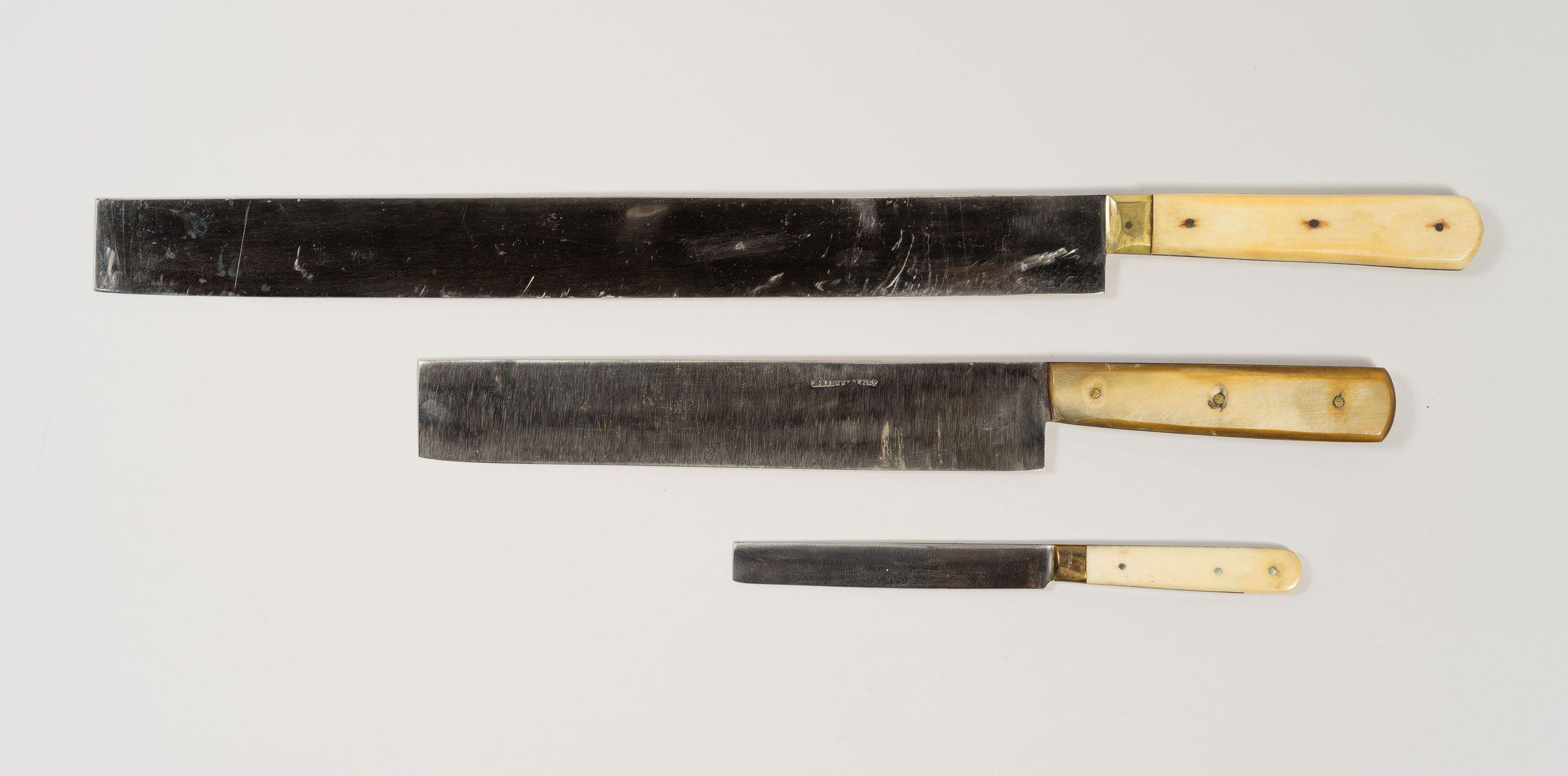
Work
Circumcison set
Date
Between 1809 and 1814
Artist
Unknown
Place Made
Netherlands
Medium
Utensils: silver and agate; box: wood, tortoiseshell, and velvet
Credit Line
Gift of Samuel and Lucille Lemberg, JM 55-61a-l
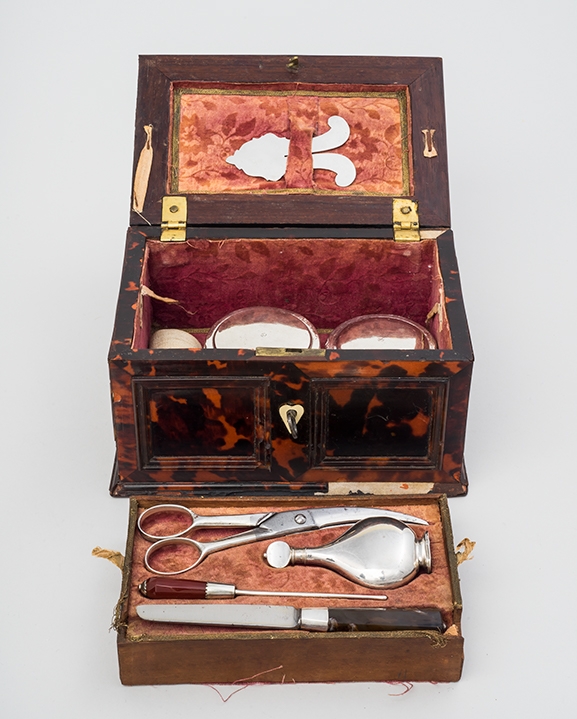
Work
Tombstone fragment
Date
Between the fifth and the ninth century
Artist
Unknown
Place Made
Eastern Mediterranean?
Medium
Chiseled or carved limestone
Credit Line
U 9115
The inscription on this fragment of an ancient tombstone refers to the soul of the deceased.
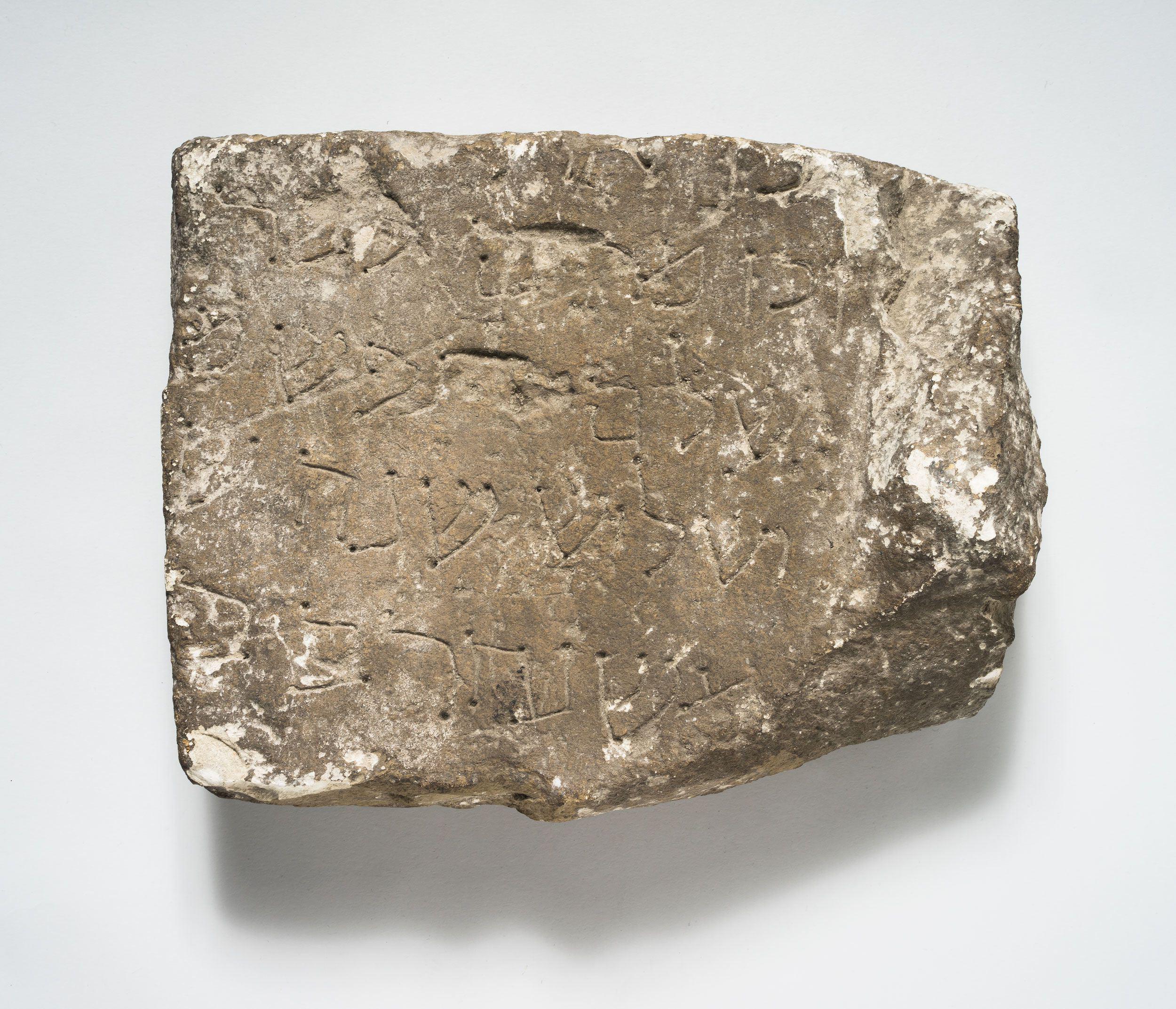
Work
Presentation stone from Masada
Date
1988
Artist
Unknown
Place Made
Israel
Medium
Limestone?
Credit Line
Gift of Benny Boret and Gabriel Gozland, Producers of Musical Masterpiece at Masada, 1988-95a
This chunk of stone from the rocky plateau of Masada was turned into a presentation piece to commemorate a concert conducted by Zubin Mehta on the fortieth anniversary of Israeli independence. Masada is the site where two thousand years ago Jews chose suicide over conquest by Rome.
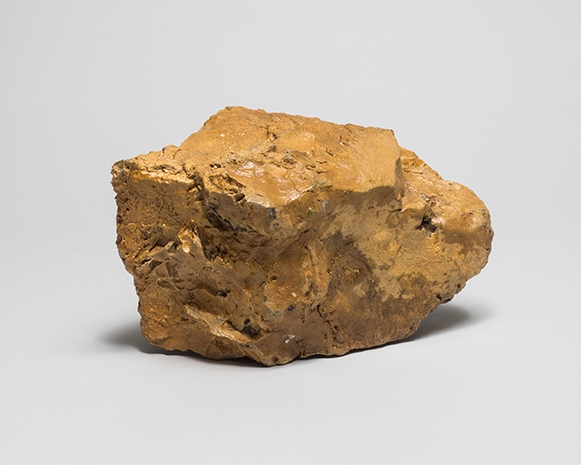
Work
Purim pastry stamp
Date
Second half of the nineteenth century
Artist
Unknown
Place Made
Odessa, Ukraine
Medium
Carved wood
Credit Line
Gift of Louis and Edith Waldman and Family, 1993-133
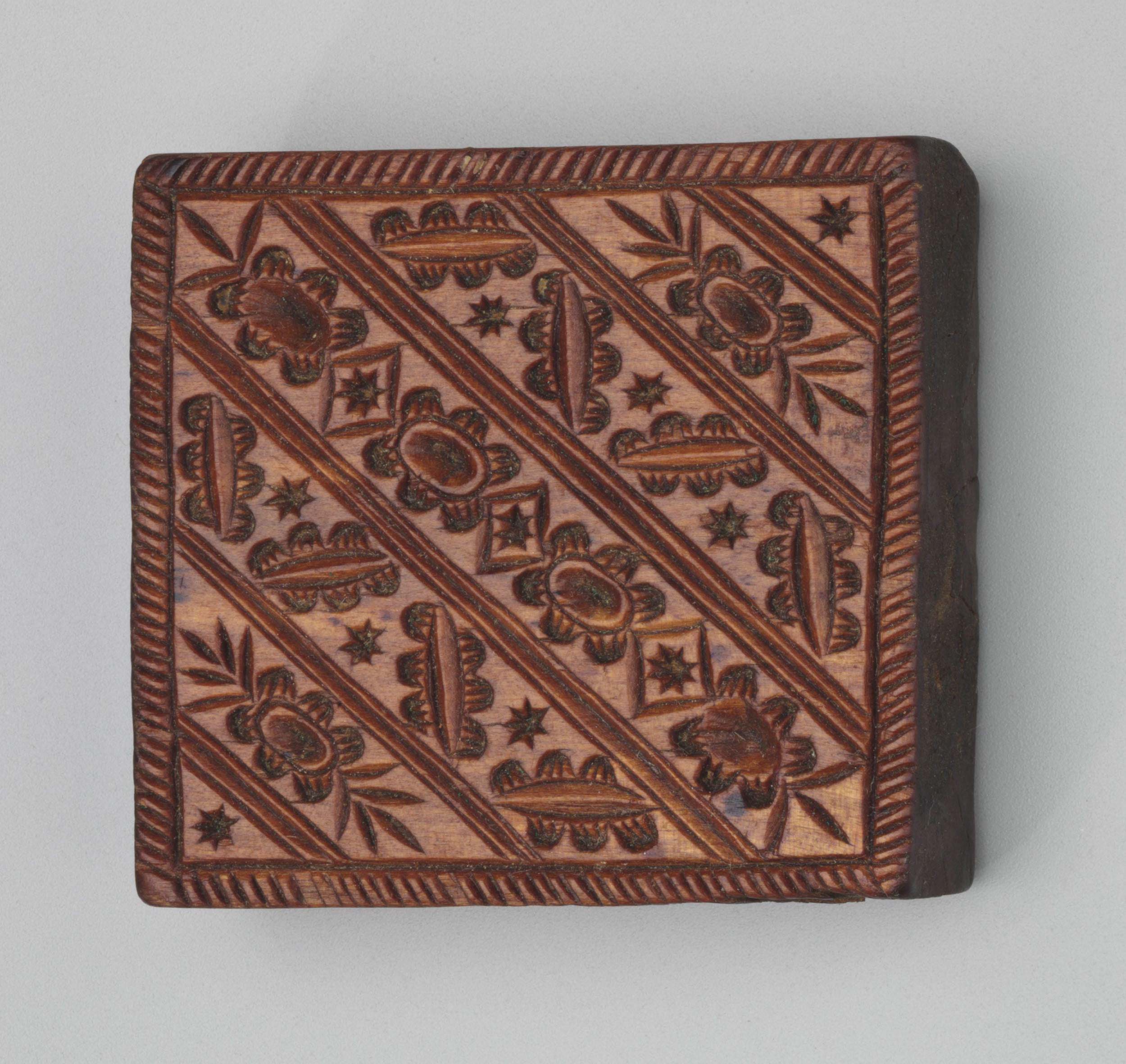
Work
Purim pastry stamp
Date
Second half of the nineteenth century
Artist
Unknown
Place Made
Odessa, Ukraine
Medium
Carved wood
Credit Line
Gift of Louis and Edith Waldman and Family, 1993-138

Work
Purim pastry stamp
Date
c. 1870
Artist
Unknown
Place Made
Nemirov, Ukraine
Medium
Carved wood
Credit Line
Gift of Vera P. Solotaroff, S 1004c
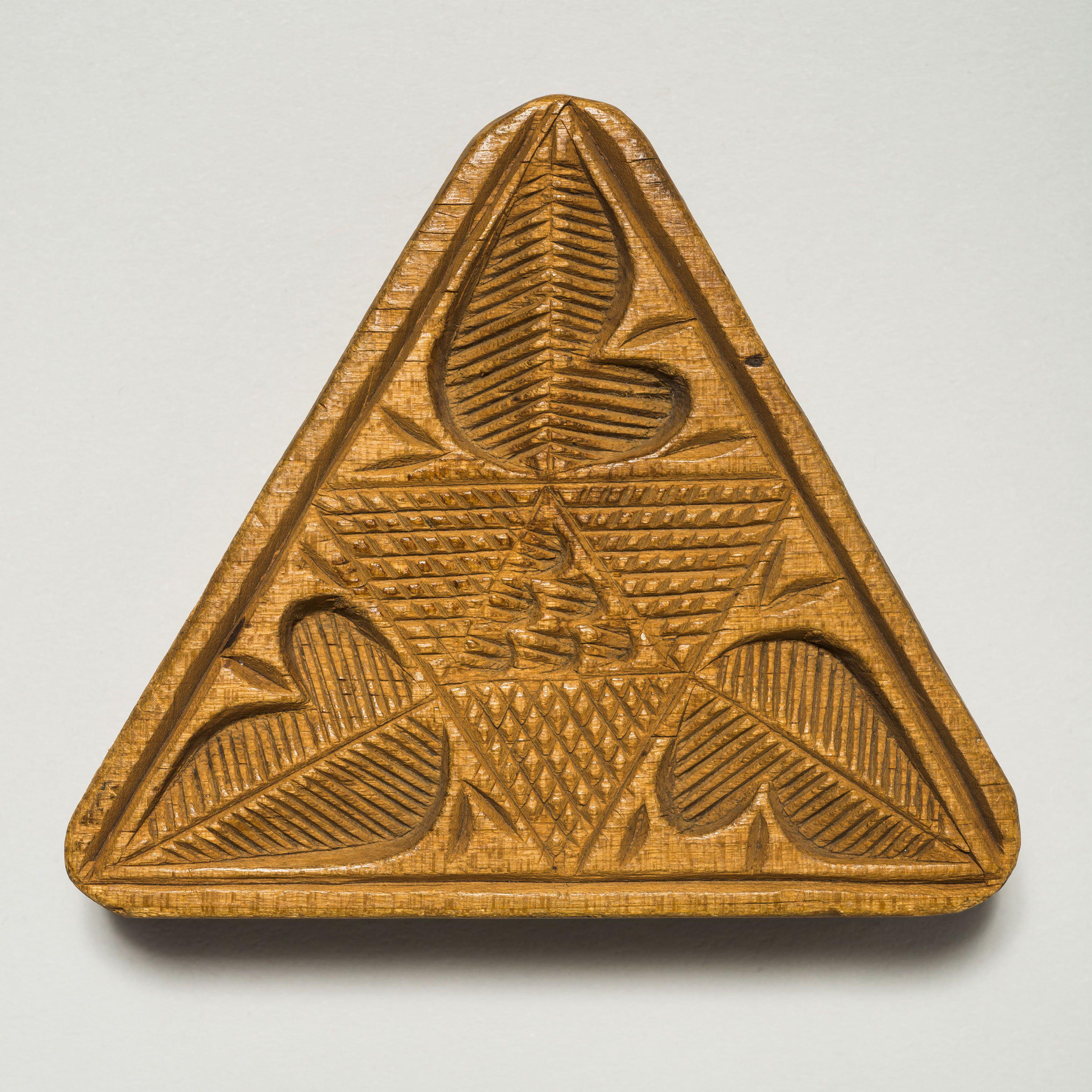
Work
Purim pastry stamp
Date
Second half of the nineteenth century
Artist
Unknown
Place Made
Odessa, Ukraine
Medium
Carved wood
Credit Line
Gift of Louis and Edith Waldman and Family, 1993-137
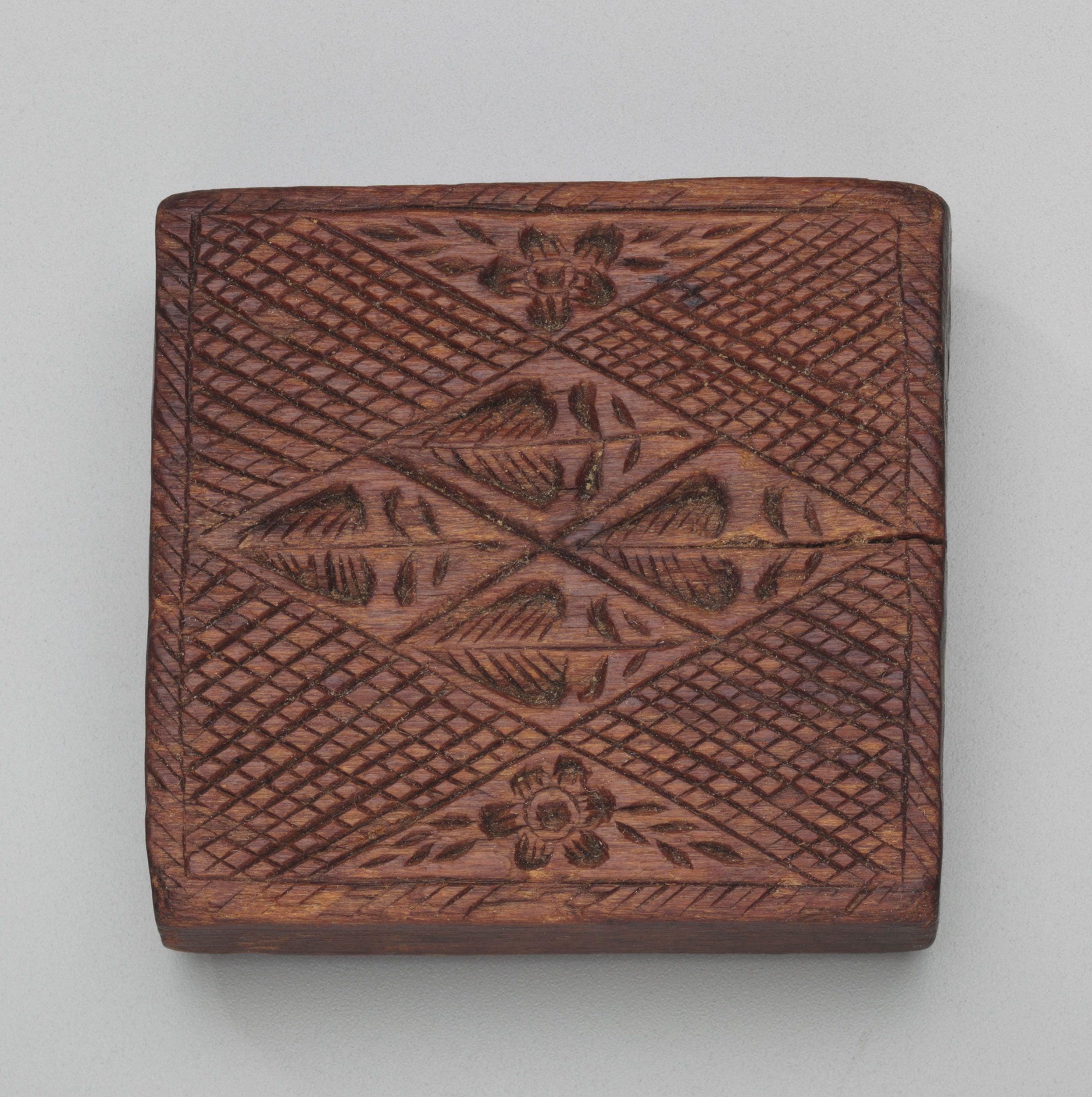
Work
Purim pastry stamp
Date
Second half of the nineteenth century
Artist
Unknown
Place Made
Odessa, Ukraine
Medium
Carved wood
Credit Line
Gift of Louis and Edith Waldman and Family, 1993-134

Work
Purim pastry stamp
Date
Second half of the nineteenth century
Artist
Unknown
Place Made
Odessa, Ukraine
Medium
Carved wood
Credit Line
Gift of Louis and Edith Waldman and Family, 1993-141
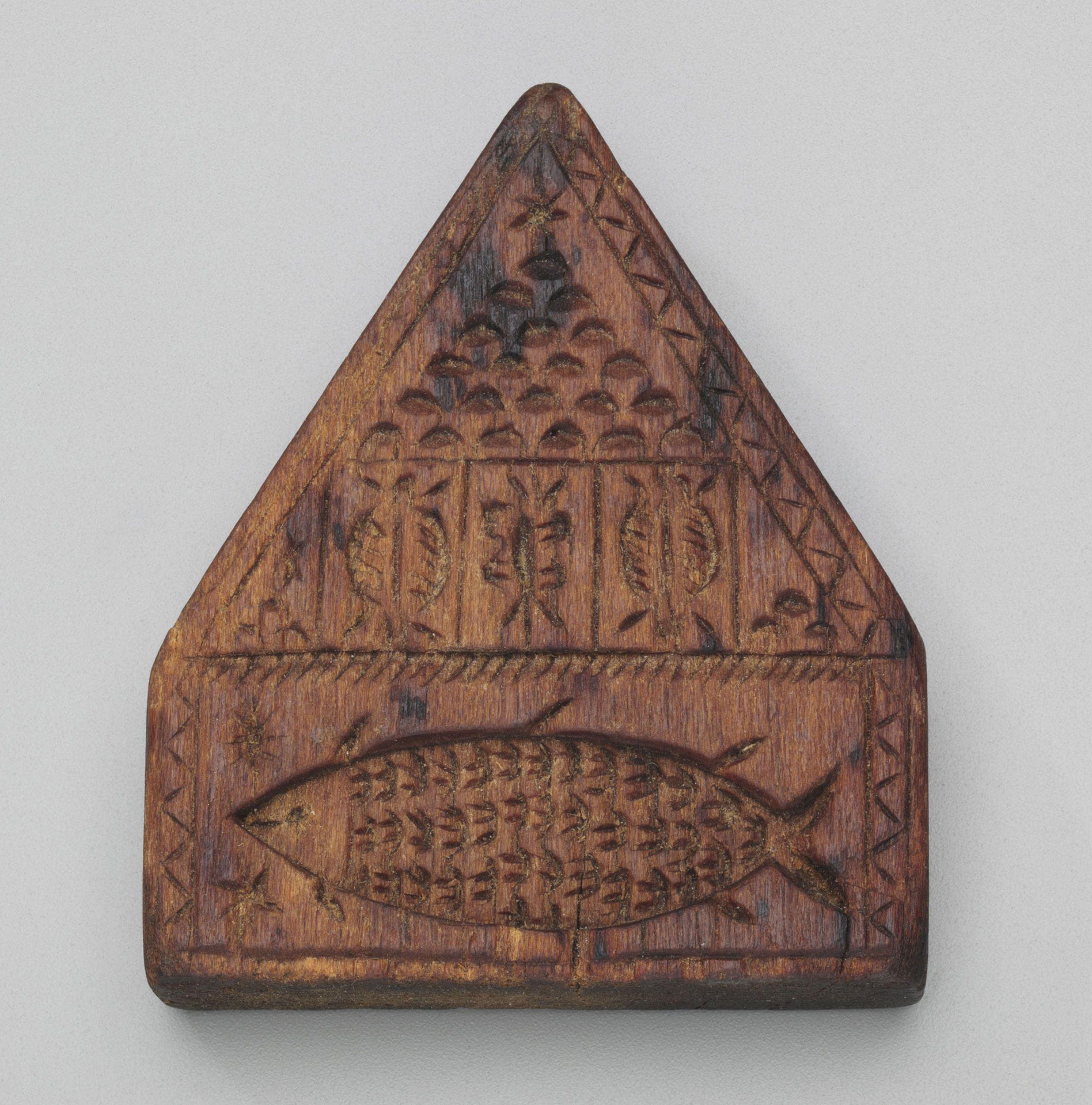
Work
Purim pastry stamp
Date
Second half of the nineteenth century
Artist
Unknown
Place Made
Odessa, Ukraine
Medium
Carved wood
Credit Line
Gift of Louis and Edith Waldman and Family, 1993-139
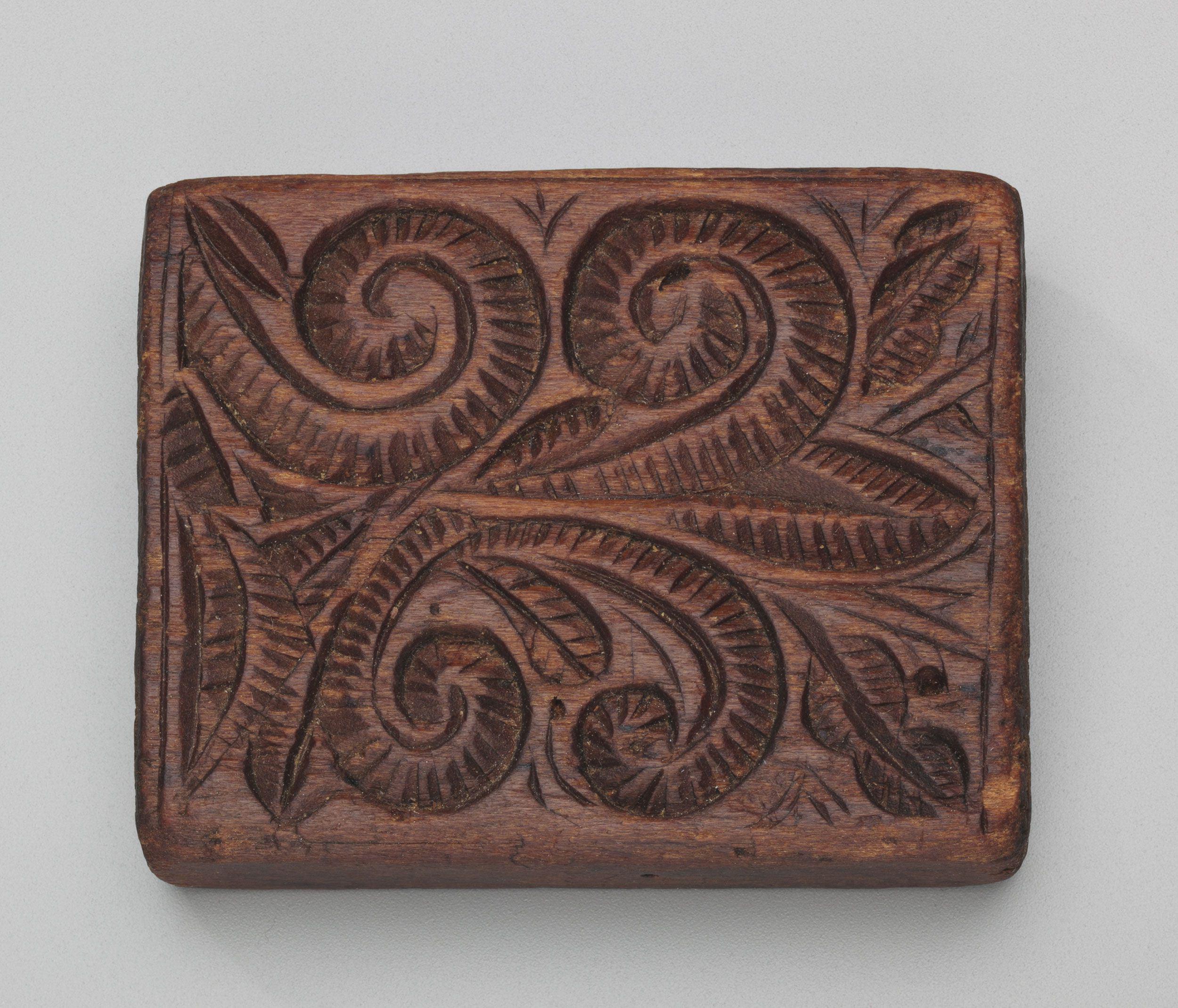
Work
Purim pastry stamp
Date
Second half of the nineteenth century
Artist
Unknown
Place Made
Odessa, Ukraine
Medium
Carved wood
Credit Line
Gift of Louis and Edith Waldman and Family, 1993-132
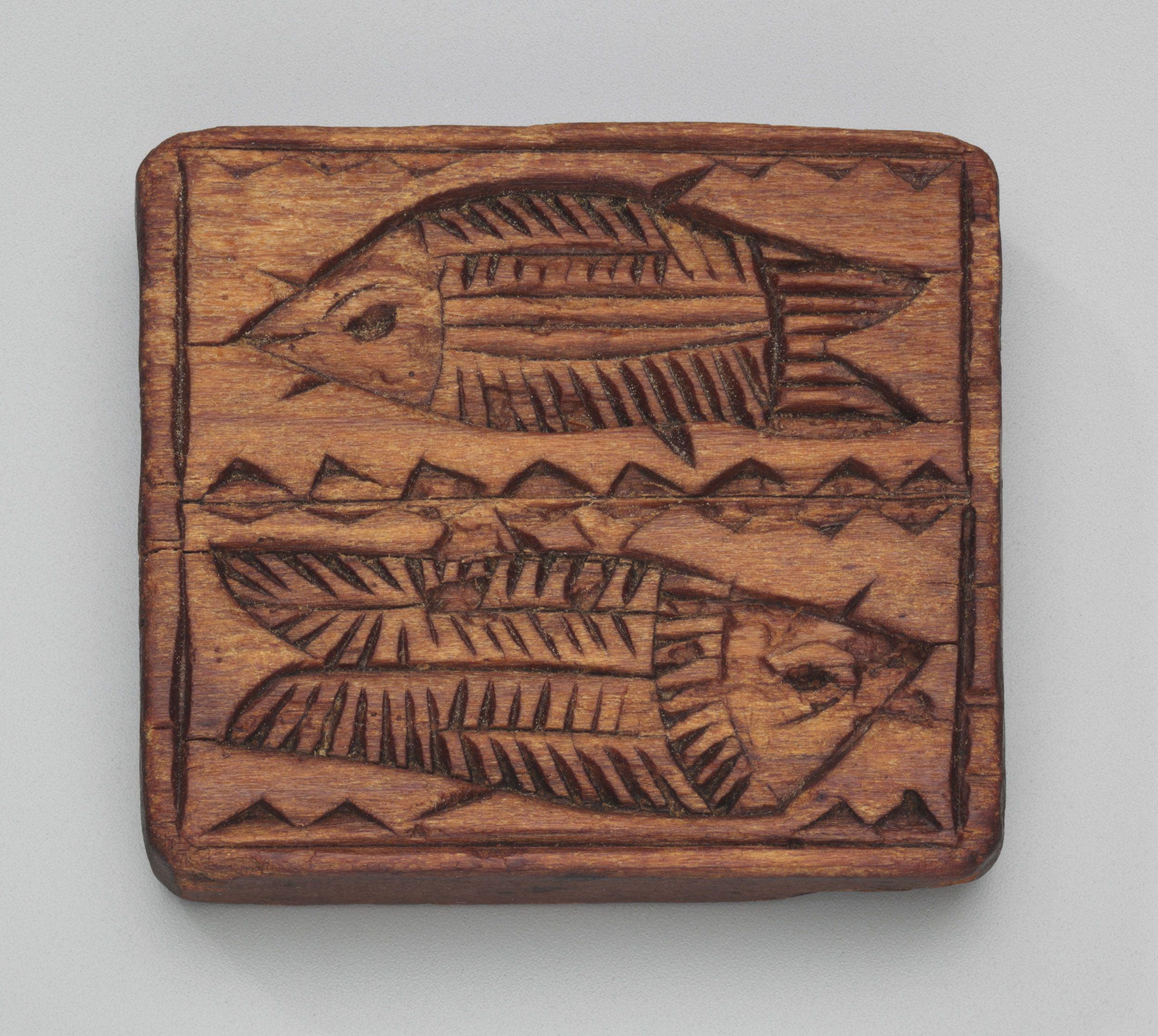
Work
Purim pastry stamp
Date
Second half of the nineteenth century
Artist
Unknown
Place Made
Odessa, Ukraine
Medium
Carved wood
Credit Line
Gift of Louis and Edith Waldman and Family, 1993-142
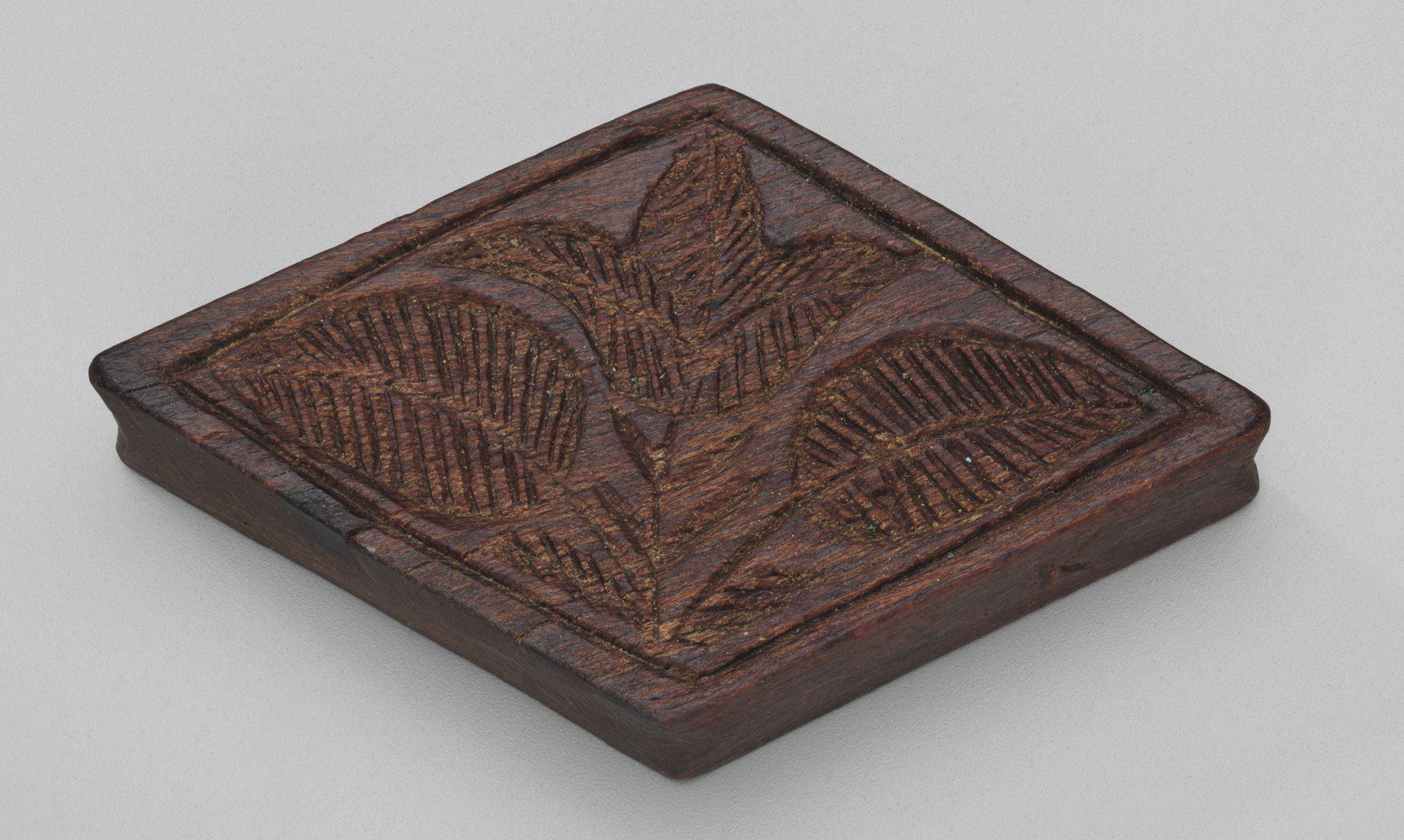
Work
Purim pastry stamp
Date
Second half of the nineteenth century
Artist
Unknown
Place Made
Odessa, Ukraine
Medium
Carved wood
Credit Line
Gift of Louis and Edith Waldman and Family, 1993-136

Work
Printing block
Date
Early twentieth century
Artist
Unknown
Place Made
Iran
Medium
Carved wood
Credit Line
Gift of Dr. Harry G. Friedman, F 5077a

Work
Printing block
Date
Early twentieth century
Artist
Unknown
Place Made
Iran
Medium
Carved wood
Credit Line
Gift of Dr. Harry G. Friedman, F 5077c

Work
Printing block
Date
Early twentieth century
Artist
Unknown
Place Made
Iran
Medium
Carved wood
Credit Line
Gift of Dr. Harry G. Friedman, F 5077b

Work
Printing block
Date
Early twentieth century
Artist
Unknown
Place Made
Iran
Medium
Carved wood
Credit Line
Gift of Dr. Harry G. Friedman, F 5077d
